Quick filters:
Monarch of persia Stock Photos and Images
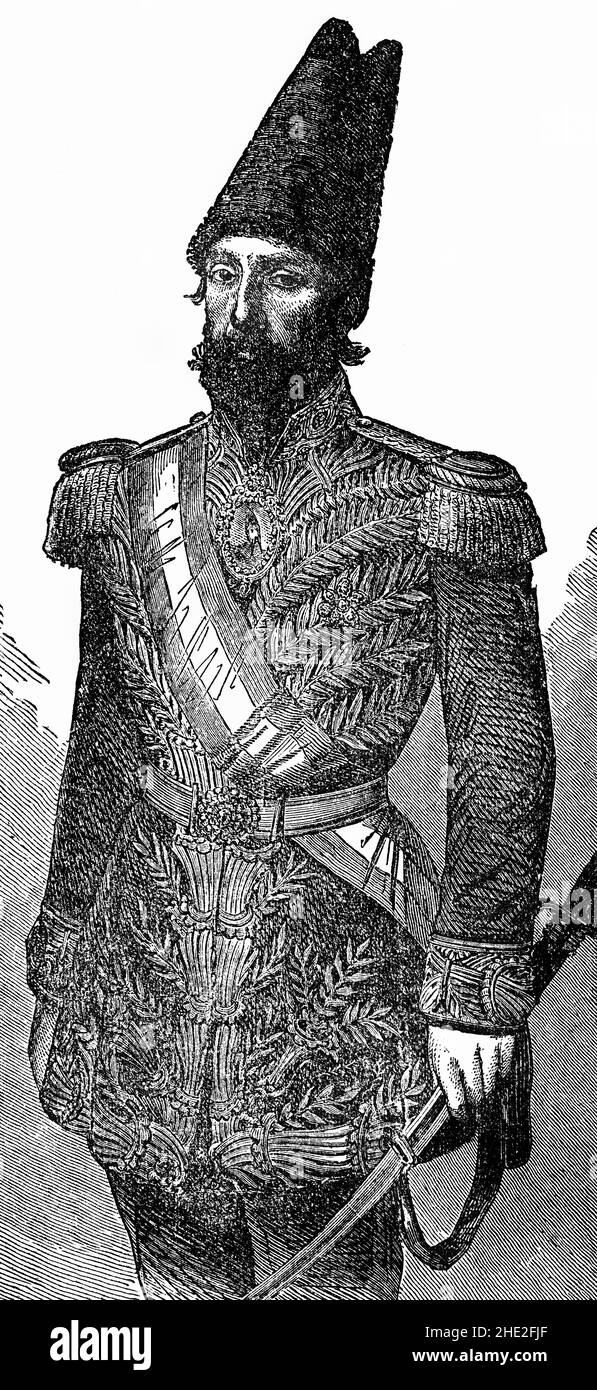 Naser al-Din Shah Qajar (1831-1896) was the Shah of Qajar Iran aka Qajar Persia from 5 September 1848 to 1 May 1896 when he was assassinated. He was the son of Mohammad Shah Qajar and Malek Jahān Khānom and the third longest reigning monarch in Iranian history after Shapur II of the Sassanid dynasty and Tahmasp I of the Safavid Dynasty. Nasser al-Din Shah had sovereign power for close to 50 years. He was the first modern Persian monarch who formally visited Europe and also wrote his memoirs. Stock Photohttps://www.alamy.com/image-license-details/?v=1https://www.alamy.com/naser-al-din-shah-qajar-1831-1896-was-the-shah-of-qajar-iran-aka-qajar-persia-from-5-september-1848-to-1-may-1896-when-he-was-assassinated-he-was-the-son-of-mohammad-shah-qajar-and-malek-jahn-khnom-and-the-third-longest-reigning-monarch-in-iranian-history-after-shapur-ii-of-the-sassanid-dynasty-and-tahmasp-i-of-the-safavid-dynasty-nasser-al-din-shah-had-sovereign-power-for-close-to-50-years-he-was-the-first-modern-persian-monarch-who-formally-visited-europe-and-also-wrote-his-memoirs-image456130935.html
Naser al-Din Shah Qajar (1831-1896) was the Shah of Qajar Iran aka Qajar Persia from 5 September 1848 to 1 May 1896 when he was assassinated. He was the son of Mohammad Shah Qajar and Malek Jahān Khānom and the third longest reigning monarch in Iranian history after Shapur II of the Sassanid dynasty and Tahmasp I of the Safavid Dynasty. Nasser al-Din Shah had sovereign power for close to 50 years. He was the first modern Persian monarch who formally visited Europe and also wrote his memoirs. Stock Photohttps://www.alamy.com/image-license-details/?v=1https://www.alamy.com/naser-al-din-shah-qajar-1831-1896-was-the-shah-of-qajar-iran-aka-qajar-persia-from-5-september-1848-to-1-may-1896-when-he-was-assassinated-he-was-the-son-of-mohammad-shah-qajar-and-malek-jahn-khnom-and-the-third-longest-reigning-monarch-in-iranian-history-after-shapur-ii-of-the-sassanid-dynasty-and-tahmasp-i-of-the-safavid-dynasty-nasser-al-din-shah-had-sovereign-power-for-close-to-50-years-he-was-the-first-modern-persian-monarch-who-formally-visited-europe-and-also-wrote-his-memoirs-image456130935.htmlRM2HE2FJF–Naser al-Din Shah Qajar (1831-1896) was the Shah of Qajar Iran aka Qajar Persia from 5 September 1848 to 1 May 1896 when he was assassinated. He was the son of Mohammad Shah Qajar and Malek Jahān Khānom and the third longest reigning monarch in Iranian history after Shapur II of the Sassanid dynasty and Tahmasp I of the Safavid Dynasty. Nasser al-Din Shah had sovereign power for close to 50 years. He was the first modern Persian monarch who formally visited Europe and also wrote his memoirs.
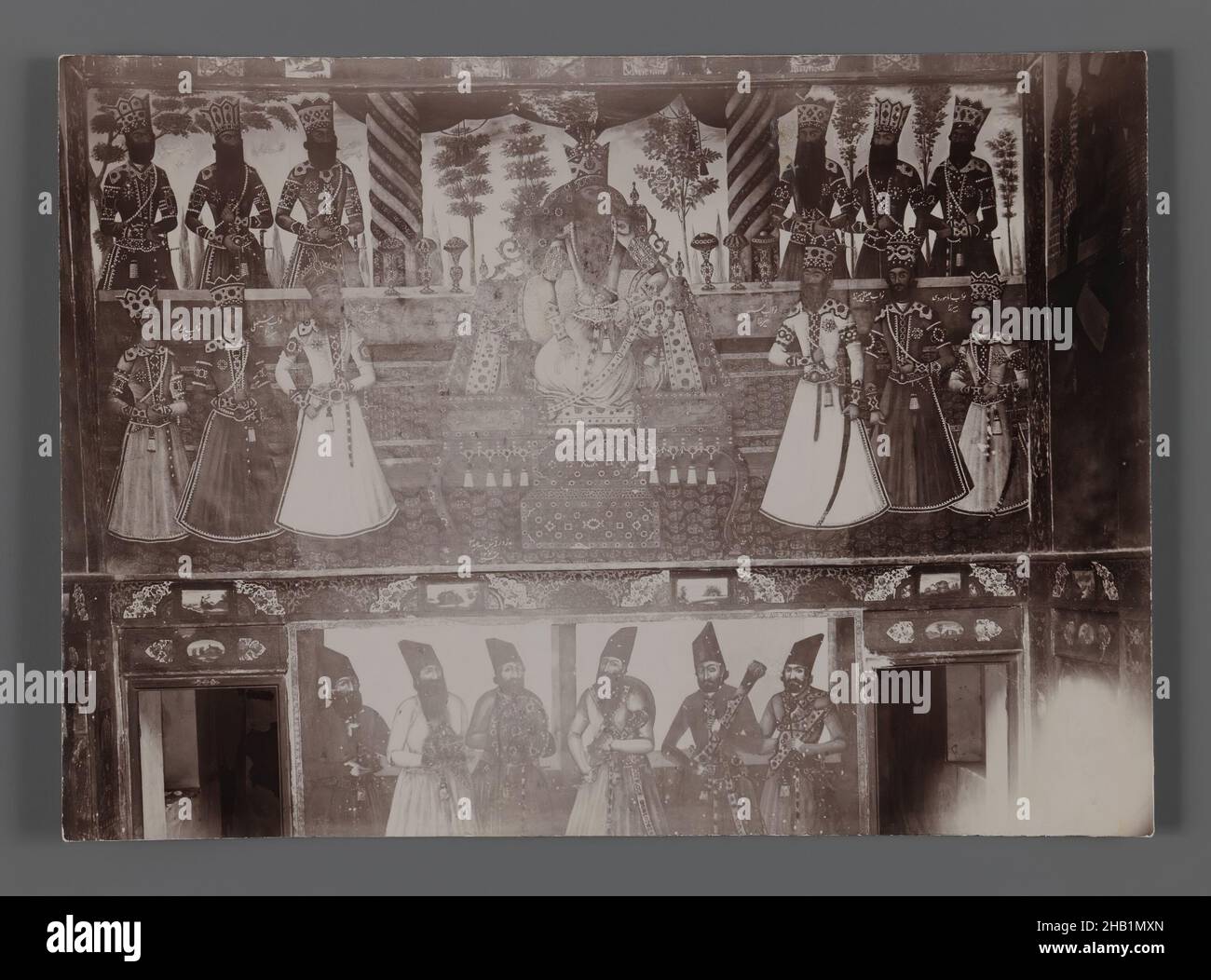 Mural of FAS and His Sons, dated 1228, One of 274 Vintage Photographs, Gelatin silver printing out paper, late 19th-early 20th century, Qajar, Qajar Period, 4 3/4 x 6 5/8 in., 12.1 x 16.9 cm, court, Fath-Ali Shah Qajar, Iran, Middle East, monarch, mural, Persia, photograph, portrait, Shah Stock Photohttps://www.alamy.com/image-license-details/?v=1https://www.alamy.com/mural-of-fas-and-his-sons-dated-1228-one-of-274-vintage-photographs-gelatin-silver-printing-out-paper-late-19th-early-20th-century-qajar-qajar-period-4-34-x-6-58-in-121-x-169-cm-court-fath-ali-shah-qajar-iran-middle-east-monarch-mural-persia-photograph-portrait-shah-image454269165.html
Mural of FAS and His Sons, dated 1228, One of 274 Vintage Photographs, Gelatin silver printing out paper, late 19th-early 20th century, Qajar, Qajar Period, 4 3/4 x 6 5/8 in., 12.1 x 16.9 cm, court, Fath-Ali Shah Qajar, Iran, Middle East, monarch, mural, Persia, photograph, portrait, Shah Stock Photohttps://www.alamy.com/image-license-details/?v=1https://www.alamy.com/mural-of-fas-and-his-sons-dated-1228-one-of-274-vintage-photographs-gelatin-silver-printing-out-paper-late-19th-early-20th-century-qajar-qajar-period-4-34-x-6-58-in-121-x-169-cm-court-fath-ali-shah-qajar-iran-middle-east-monarch-mural-persia-photograph-portrait-shah-image454269165.htmlRM2HB1MXN–Mural of FAS and His Sons, dated 1228, One of 274 Vintage Photographs, Gelatin silver printing out paper, late 19th-early 20th century, Qajar, Qajar Period, 4 3/4 x 6 5/8 in., 12.1 x 16.9 cm, court, Fath-Ali Shah Qajar, Iran, Middle East, monarch, mural, Persia, photograph, portrait, Shah
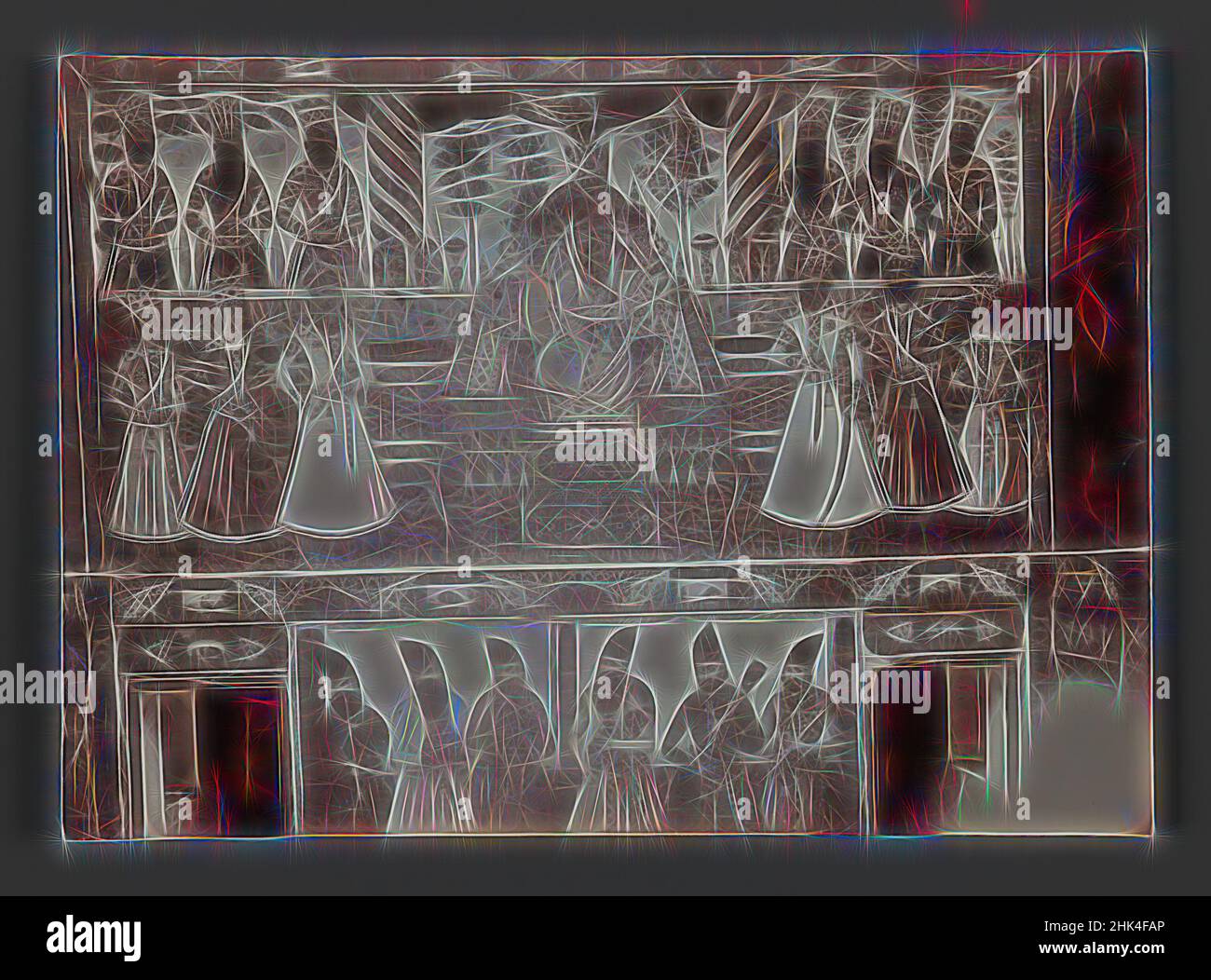 Inspired by Mural of FAS and His Sons, dated 1228, One of 274 Vintage Photographs, Gelatin silver printing out paper, late 19th-early 20th century, Qajar, Qajar Period, 4 3/4 x 6 5/8 in., 12.1 x 16.9 cm, court, Fath-Ali Shah Qajar, Iran, Middle East, monarch, mural, Persia, photograph, portrait, Shah, Reimagined by Artotop. Classic art reinvented with a modern twist. Design of warm cheerful glowing of brightness and light ray radiance. Photography inspired by surrealism and futurism, embracing dynamic energy of modern technology, movement, speed and revolutionize culture Stock Photohttps://www.alamy.com/image-license-details/?v=1https://www.alamy.com/inspired-by-mural-of-fas-and-his-sons-dated-1228-one-of-274-vintage-photographs-gelatin-silver-printing-out-paper-late-19th-early-20th-century-qajar-qajar-period-4-34-x-6-58-in-121-x-169-cm-court-fath-ali-shah-qajar-iran-middle-east-monarch-mural-persia-photograph-portrait-shah-reimagined-by-artotop-classic-art-reinvented-with-a-modern-twist-design-of-warm-cheerful-glowing-of-brightness-and-light-ray-radiance-photography-inspired-by-surrealism-and-futurism-embracing-dynamic-energy-of-modern-technology-movement-speed-and-revolutionize-culture-image459247902.html
Inspired by Mural of FAS and His Sons, dated 1228, One of 274 Vintage Photographs, Gelatin silver printing out paper, late 19th-early 20th century, Qajar, Qajar Period, 4 3/4 x 6 5/8 in., 12.1 x 16.9 cm, court, Fath-Ali Shah Qajar, Iran, Middle East, monarch, mural, Persia, photograph, portrait, Shah, Reimagined by Artotop. Classic art reinvented with a modern twist. Design of warm cheerful glowing of brightness and light ray radiance. Photography inspired by surrealism and futurism, embracing dynamic energy of modern technology, movement, speed and revolutionize culture Stock Photohttps://www.alamy.com/image-license-details/?v=1https://www.alamy.com/inspired-by-mural-of-fas-and-his-sons-dated-1228-one-of-274-vintage-photographs-gelatin-silver-printing-out-paper-late-19th-early-20th-century-qajar-qajar-period-4-34-x-6-58-in-121-x-169-cm-court-fath-ali-shah-qajar-iran-middle-east-monarch-mural-persia-photograph-portrait-shah-reimagined-by-artotop-classic-art-reinvented-with-a-modern-twist-design-of-warm-cheerful-glowing-of-brightness-and-light-ray-radiance-photography-inspired-by-surrealism-and-futurism-embracing-dynamic-energy-of-modern-technology-movement-speed-and-revolutionize-culture-image459247902.htmlRF2HK4FAP–Inspired by Mural of FAS and His Sons, dated 1228, One of 274 Vintage Photographs, Gelatin silver printing out paper, late 19th-early 20th century, Qajar, Qajar Period, 4 3/4 x 6 5/8 in., 12.1 x 16.9 cm, court, Fath-Ali Shah Qajar, Iran, Middle East, monarch, mural, Persia, photograph, portrait, Shah, Reimagined by Artotop. Classic art reinvented with a modern twist. Design of warm cheerful glowing of brightness and light ray radiance. Photography inspired by surrealism and futurism, embracing dynamic energy of modern technology, movement, speed and revolutionize culture
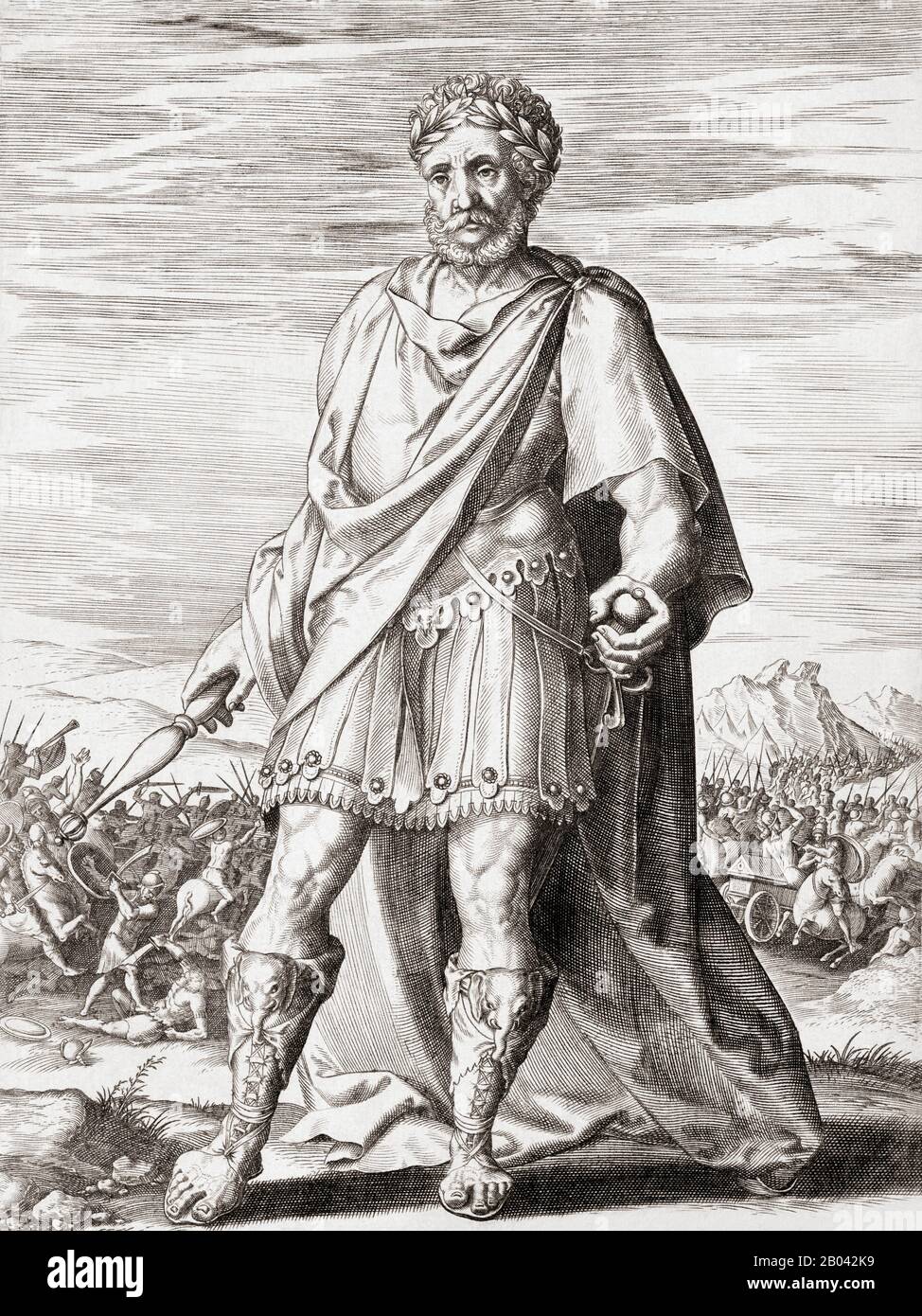 King Darius III of Persia, c. 380 -330 BC. Last king of the Achaemenid Empire of Persia. Stock Photohttps://www.alamy.com/image-license-details/?v=1https://www.alamy.com/king-darius-iii-of-persia-c-380-330-bc-last-king-of-the-achaemenid-empire-of-persia-image344297277.html
King Darius III of Persia, c. 380 -330 BC. Last king of the Achaemenid Empire of Persia. Stock Photohttps://www.alamy.com/image-license-details/?v=1https://www.alamy.com/king-darius-iii-of-persia-c-380-330-bc-last-king-of-the-achaemenid-empire-of-persia-image344297277.htmlRM2B042K9–King Darius III of Persia, c. 380 -330 BC. Last king of the Achaemenid Empire of Persia.
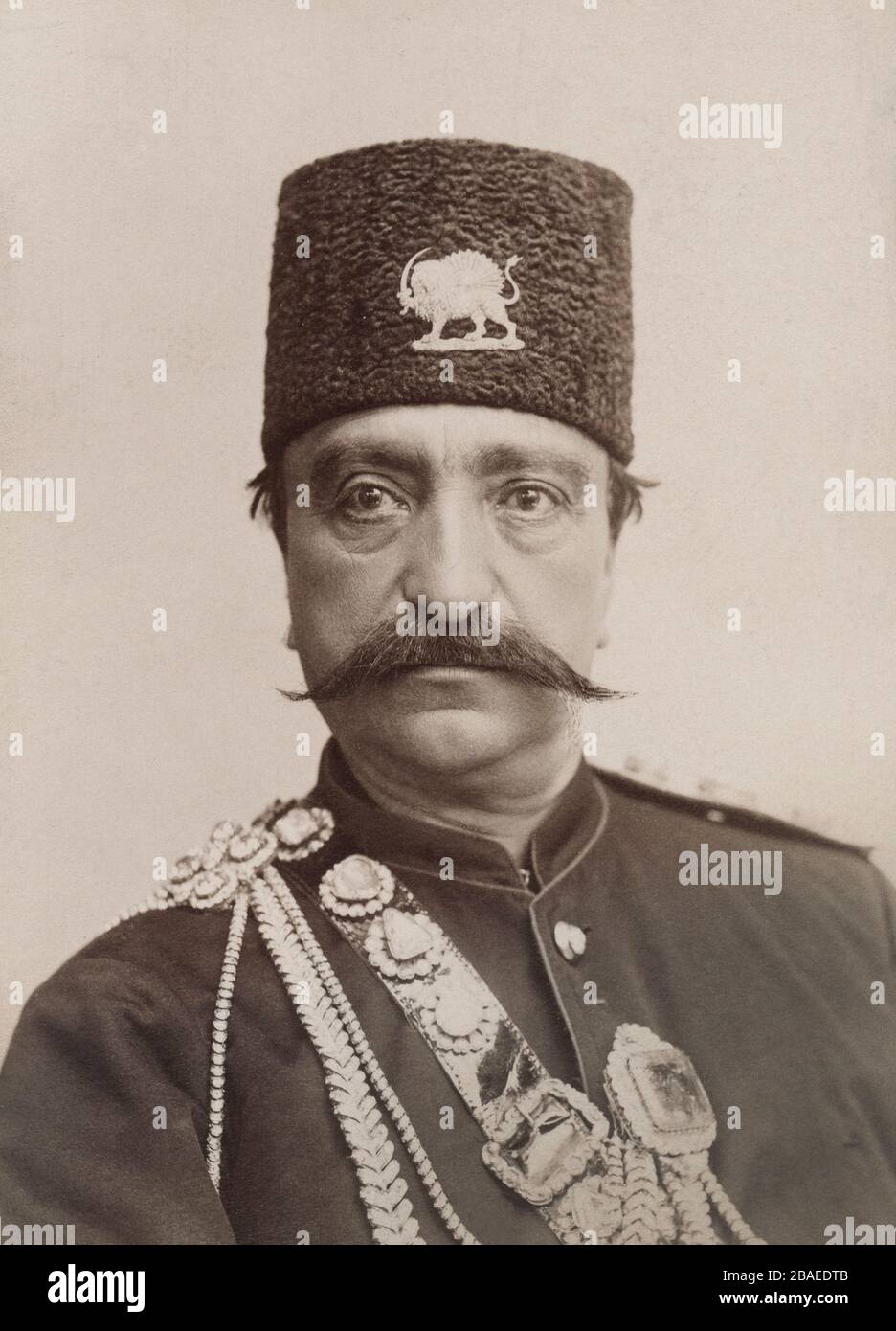 Shah of Persia Naser al-Din Shah Qajar (1831 – 1896), also Nassereddin Shah Qajar, was the King of Persia from 5 September 1848 to 1 May 1896 when he Stock Photohttps://www.alamy.com/image-license-details/?v=1https://www.alamy.com/shah-of-persia-naser-al-din-shah-qajar-1831-1896-also-nassereddin-shah-qajar-was-the-king-of-persia-from-5-september-1848-to-1-may-1896-when-he-image350672123.html
Shah of Persia Naser al-Din Shah Qajar (1831 – 1896), also Nassereddin Shah Qajar, was the King of Persia from 5 September 1848 to 1 May 1896 when he Stock Photohttps://www.alamy.com/image-license-details/?v=1https://www.alamy.com/shah-of-persia-naser-al-din-shah-qajar-1831-1896-also-nassereddin-shah-qajar-was-the-king-of-persia-from-5-september-1848-to-1-may-1896-when-he-image350672123.htmlRF2BAEDTB–Shah of Persia Naser al-Din Shah Qajar (1831 – 1896), also Nassereddin Shah Qajar, was the King of Persia from 5 September 1848 to 1 May 1896 when he
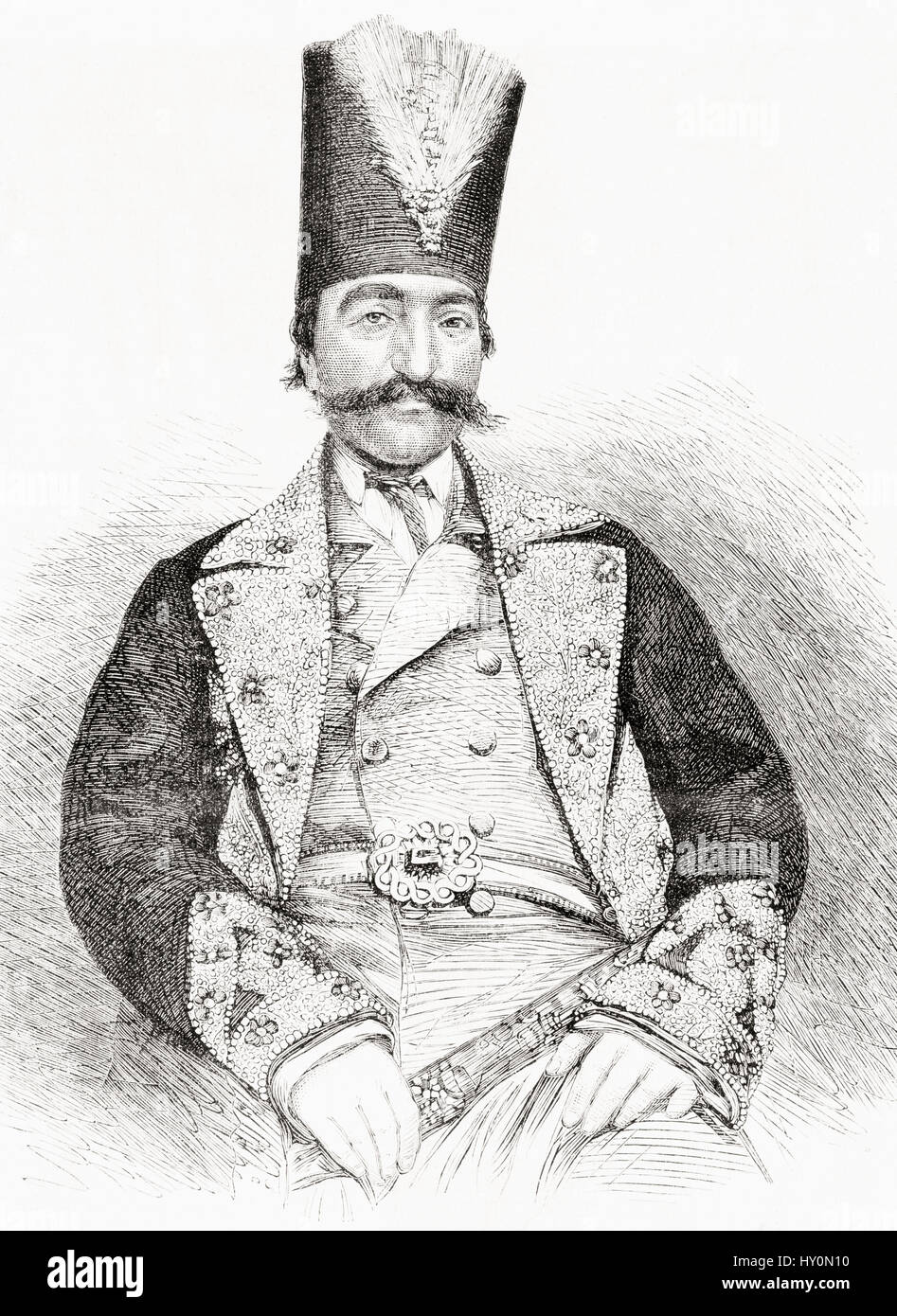 Naser al-Din Shah Qajar, 1831 – 1896, aka Nassereddin Shah Qajar. King of Persia. From L'Univers Illustre published 1867. Stock Photohttps://www.alamy.com/image-license-details/?v=1https://www.alamy.com/stock-photo-naser-al-din-shah-qajar-1831-1896-aka-nassereddin-shah-qajar-king-137084780.html
Naser al-Din Shah Qajar, 1831 – 1896, aka Nassereddin Shah Qajar. King of Persia. From L'Univers Illustre published 1867. Stock Photohttps://www.alamy.com/image-license-details/?v=1https://www.alamy.com/stock-photo-naser-al-din-shah-qajar-1831-1896-aka-nassereddin-shah-qajar-king-137084780.htmlRMHY0N10–Naser al-Din Shah Qajar, 1831 – 1896, aka Nassereddin Shah Qajar. King of Persia. From L'Univers Illustre published 1867.
 Iran/Persia/Yemen: 'The Queen of Sheba (Bilqis) and the Hoopoe, Solomon's Messenger'. Safavid Dynasty ink painting, c. 1590-1600. The Queen of Sheba was a monarch of the ancient kingdom of Sheba and is referred to in Ethiopian history, the Bible, the Qur'an, Yoruba customary tradition and Josephus. She is widely assumed to have been a queen regnant, although there is no historical proof of this; in fact, she may have been a queen consort. The location of her kingdom is believed to have been in Ethiopia and Yemen. Stock Photohttps://www.alamy.com/image-license-details/?v=1https://www.alamy.com/iranpersiayemen-the-queen-of-sheba-bilqis-and-the-hoopoe-solomons-messenger-safavid-dynasty-ink-painting-c-1590-1600-the-queen-of-sheba-was-a-monarch-of-the-ancient-kingdom-of-sheba-and-is-referred-to-in-ethiopian-history-the-bible-the-quran-yoruba-customary-tradition-and-josephus-she-is-widely-assumed-to-have-been-a-queen-regnant-although-there-is-no-historical-proof-of-this-in-fact-she-may-have-been-a-queen-consort-the-location-of-her-kingdom-is-believed-to-have-been-in-ethiopia-and-yemen-image344249522.html
Iran/Persia/Yemen: 'The Queen of Sheba (Bilqis) and the Hoopoe, Solomon's Messenger'. Safavid Dynasty ink painting, c. 1590-1600. The Queen of Sheba was a monarch of the ancient kingdom of Sheba and is referred to in Ethiopian history, the Bible, the Qur'an, Yoruba customary tradition and Josephus. She is widely assumed to have been a queen regnant, although there is no historical proof of this; in fact, she may have been a queen consort. The location of her kingdom is believed to have been in Ethiopia and Yemen. Stock Photohttps://www.alamy.com/image-license-details/?v=1https://www.alamy.com/iranpersiayemen-the-queen-of-sheba-bilqis-and-the-hoopoe-solomons-messenger-safavid-dynasty-ink-painting-c-1590-1600-the-queen-of-sheba-was-a-monarch-of-the-ancient-kingdom-of-sheba-and-is-referred-to-in-ethiopian-history-the-bible-the-quran-yoruba-customary-tradition-and-josephus-she-is-widely-assumed-to-have-been-a-queen-regnant-although-there-is-no-historical-proof-of-this-in-fact-she-may-have-been-a-queen-consort-the-location-of-her-kingdom-is-believed-to-have-been-in-ethiopia-and-yemen-image344249522.htmlRM2B01WNP–Iran/Persia/Yemen: 'The Queen of Sheba (Bilqis) and the Hoopoe, Solomon's Messenger'. Safavid Dynasty ink painting, c. 1590-1600. The Queen of Sheba was a monarch of the ancient kingdom of Sheba and is referred to in Ethiopian history, the Bible, the Qur'an, Yoruba customary tradition and Josephus. She is widely assumed to have been a queen regnant, although there is no historical proof of this; in fact, she may have been a queen consort. The location of her kingdom is believed to have been in Ethiopia and Yemen.
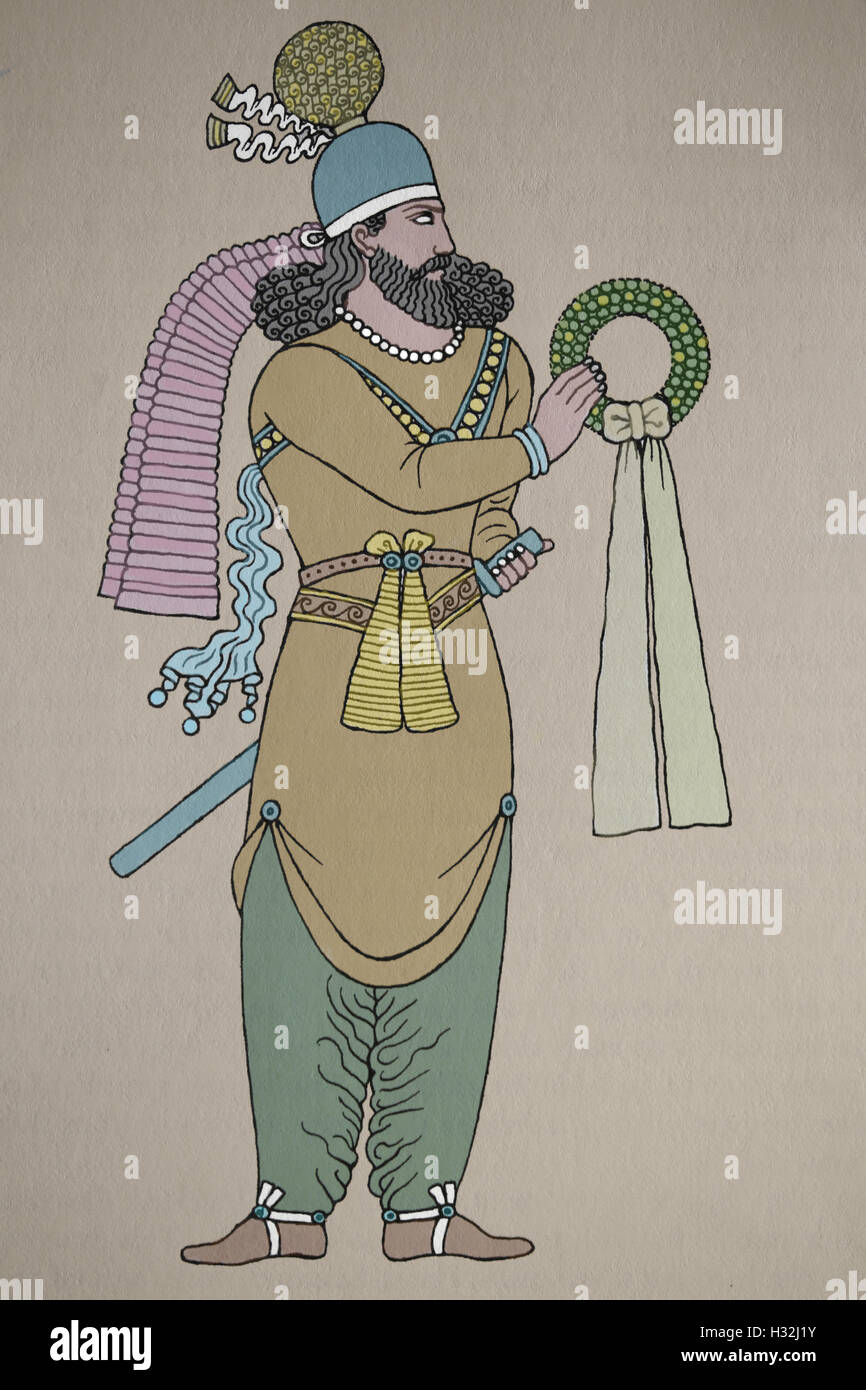 Ancient Persia. Sassanid period. Monarch Ardashir II (379-383 AD). Engraving. Color. Stock Photohttps://www.alamy.com/image-license-details/?v=1https://www.alamy.com/stock-photo-ancient-persia-sassanid-period-monarch-ardashir-ii-379-383-ad-engraving-122374615.html
Ancient Persia. Sassanid period. Monarch Ardashir II (379-383 AD). Engraving. Color. Stock Photohttps://www.alamy.com/image-license-details/?v=1https://www.alamy.com/stock-photo-ancient-persia-sassanid-period-monarch-ardashir-ii-379-383-ad-engraving-122374615.htmlRMH32J1Y–Ancient Persia. Sassanid period. Monarch Ardashir II (379-383 AD). Engraving. Color.
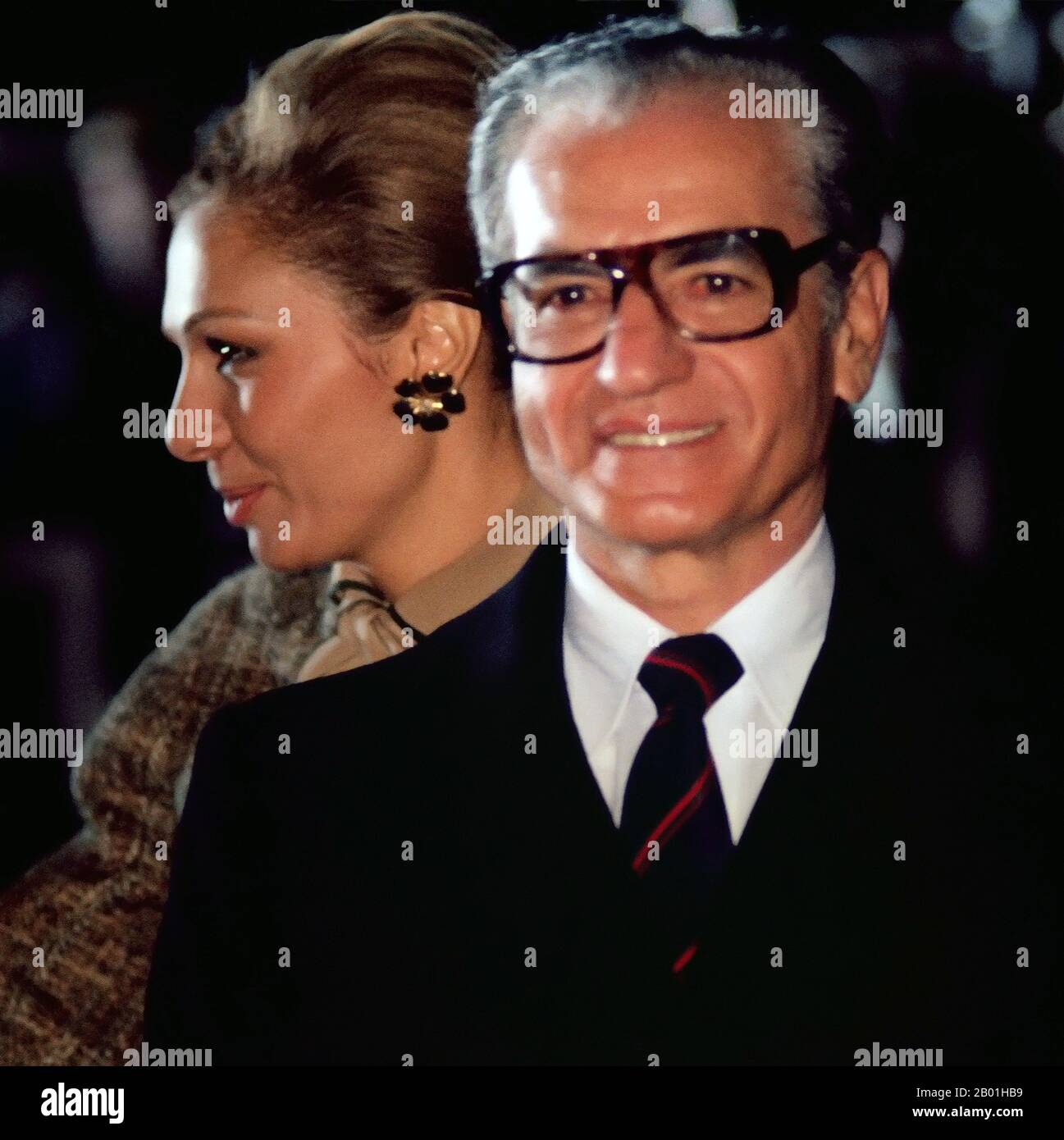 Iran/Persia/USA: Mohammed Reza Pahlavi (26 October 1919 – 27 July 1980) and his wife, Empress Farah, departing the United States after a visit on 16 November 1977. Mohammad Rezā Shāh Pahlavi, Shah of Iran, Shah of Persia, ruled Iran from 16 September 1941 until his overthrow by the Iranian Revolution on 11 February 1979. He was the second and last monarch of the House of Pahlavi of the Iranian monarchy. He came to power during World War II after an Anglo-Soviet invasion forced the abdication of his father Reza Shah. During his reign, the Iranian oil industry was nationalised. Stock Photohttps://www.alamy.com/image-license-details/?v=1https://www.alamy.com/iranpersiausa-mohammed-reza-pahlavi-26-october-1919-27-july-1980-and-his-wife-empress-farah-departing-the-united-states-after-a-visit-on-16-november-1977-mohammad-rez-shh-pahlavi-shah-of-iran-shah-of-persia-ruled-iran-from-16-september-1941-until-his-overthrow-by-the-iranian-revolution-on-11-february-1979-he-was-the-second-and-last-monarch-of-the-house-of-pahlavi-of-the-iranian-monarchy-he-came-to-power-during-world-war-ii-after-an-anglo-soviet-invasion-forced-the-abdication-of-his-father-reza-shah-during-his-reign-the-iranian-oil-industry-was-nationalised-image344242957.html
Iran/Persia/USA: Mohammed Reza Pahlavi (26 October 1919 – 27 July 1980) and his wife, Empress Farah, departing the United States after a visit on 16 November 1977. Mohammad Rezā Shāh Pahlavi, Shah of Iran, Shah of Persia, ruled Iran from 16 September 1941 until his overthrow by the Iranian Revolution on 11 February 1979. He was the second and last monarch of the House of Pahlavi of the Iranian monarchy. He came to power during World War II after an Anglo-Soviet invasion forced the abdication of his father Reza Shah. During his reign, the Iranian oil industry was nationalised. Stock Photohttps://www.alamy.com/image-license-details/?v=1https://www.alamy.com/iranpersiausa-mohammed-reza-pahlavi-26-october-1919-27-july-1980-and-his-wife-empress-farah-departing-the-united-states-after-a-visit-on-16-november-1977-mohammad-rez-shh-pahlavi-shah-of-iran-shah-of-persia-ruled-iran-from-16-september-1941-until-his-overthrow-by-the-iranian-revolution-on-11-february-1979-he-was-the-second-and-last-monarch-of-the-house-of-pahlavi-of-the-iranian-monarchy-he-came-to-power-during-world-war-ii-after-an-anglo-soviet-invasion-forced-the-abdication-of-his-father-reza-shah-during-his-reign-the-iranian-oil-industry-was-nationalised-image344242957.htmlRM2B01HB9–Iran/Persia/USA: Mohammed Reza Pahlavi (26 October 1919 – 27 July 1980) and his wife, Empress Farah, departing the United States after a visit on 16 November 1977. Mohammad Rezā Shāh Pahlavi, Shah of Iran, Shah of Persia, ruled Iran from 16 September 1941 until his overthrow by the Iranian Revolution on 11 February 1979. He was the second and last monarch of the House of Pahlavi of the Iranian monarchy. He came to power during World War II after an Anglo-Soviet invasion forced the abdication of his father Reza Shah. During his reign, the Iranian oil industry was nationalised.
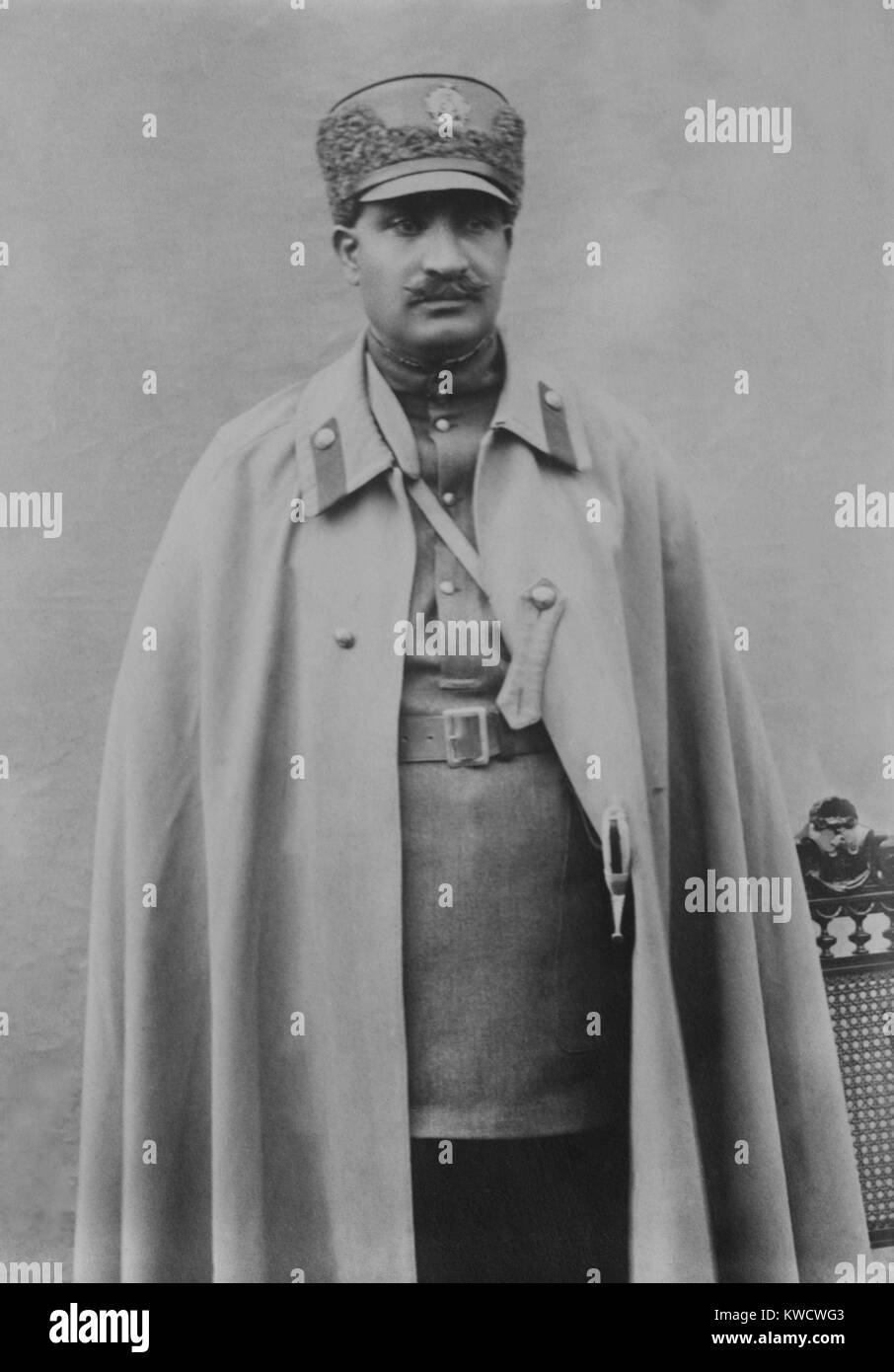 Reza Shah Pahlavi was elected monarch by Irans Constituent Assembly in 1925. He rose to power as a military strong man in the complex Post World War 1 period of tension between Iran and Bolshevik Russia (BSLOC 2017 1 119) Stock Photohttps://www.alamy.com/image-license-details/?v=1https://www.alamy.com/stock-photo-reza-shah-pahlavi-was-elected-monarch-by-irans-constituent-assembly-170543187.html
Reza Shah Pahlavi was elected monarch by Irans Constituent Assembly in 1925. He rose to power as a military strong man in the complex Post World War 1 period of tension between Iran and Bolshevik Russia (BSLOC 2017 1 119) Stock Photohttps://www.alamy.com/image-license-details/?v=1https://www.alamy.com/stock-photo-reza-shah-pahlavi-was-elected-monarch-by-irans-constituent-assembly-170543187.htmlRMKWCWG3–Reza Shah Pahlavi was elected monarch by Irans Constituent Assembly in 1925. He rose to power as a military strong man in the complex Post World War 1 period of tension between Iran and Bolshevik Russia (BSLOC 2017 1 119)
 Mohammed Reza Pahlavi, The Shah of Persia Stock Photohttps://www.alamy.com/image-license-details/?v=1https://www.alamy.com/mohammed-reza-pahlavi-the-shah-of-persia-image615256780.html
Mohammed Reza Pahlavi, The Shah of Persia Stock Photohttps://www.alamy.com/image-license-details/?v=1https://www.alamy.com/mohammed-reza-pahlavi-the-shah-of-persia-image615256780.htmlRM2XMYA8C–Mohammed Reza Pahlavi, The Shah of Persia
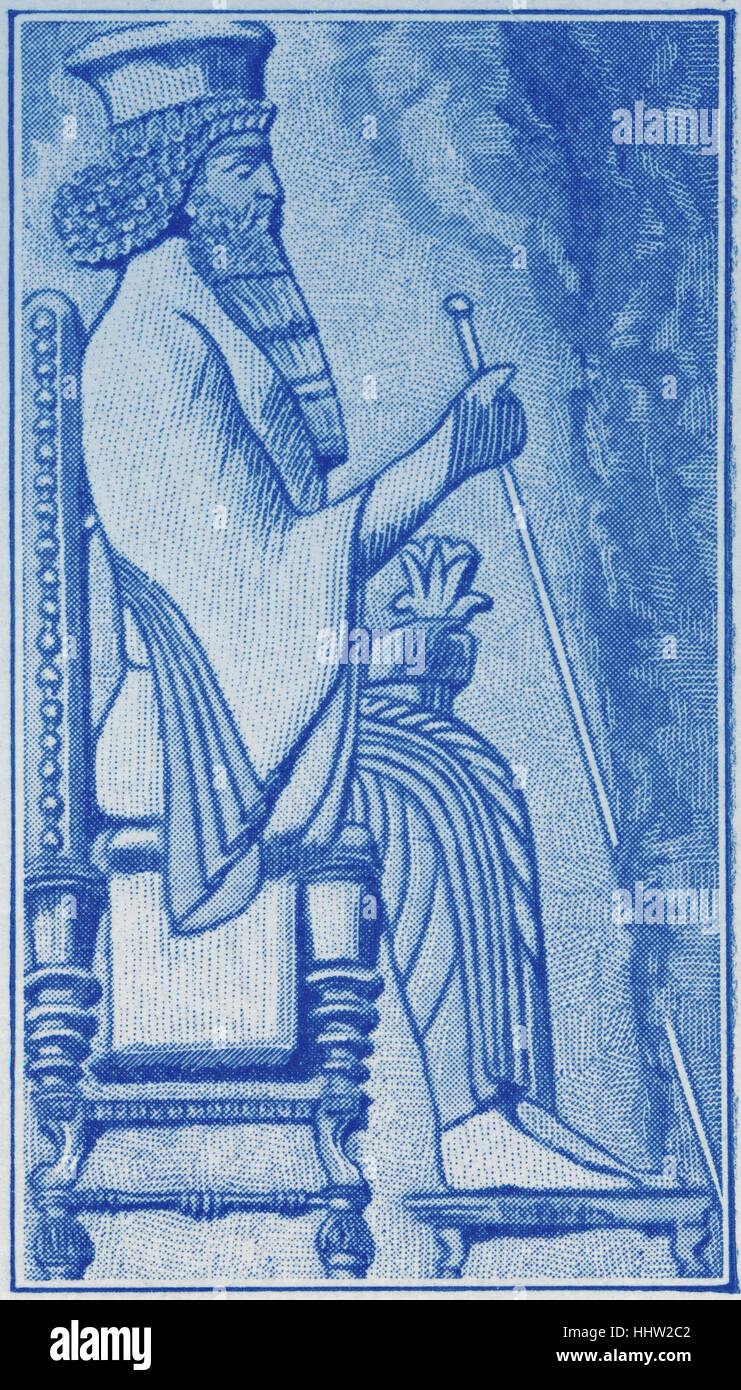 Darius I, King of Persia seated on throne, from Flandin and Coste, 'Voyage en Perse'. 550 BC - 486 BC. Stock Photohttps://www.alamy.com/image-license-details/?v=1https://www.alamy.com/stock-photo-darius-i-king-of-persia-seated-on-throne-from-flandin-and-coste-voyage-131472434.html
Darius I, King of Persia seated on throne, from Flandin and Coste, 'Voyage en Perse'. 550 BC - 486 BC. Stock Photohttps://www.alamy.com/image-license-details/?v=1https://www.alamy.com/stock-photo-darius-i-king-of-persia-seated-on-throne-from-flandin-and-coste-voyage-131472434.htmlRMHHW2C2–Darius I, King of Persia seated on throne, from Flandin and Coste, 'Voyage en Perse'. 550 BC - 486 BC.
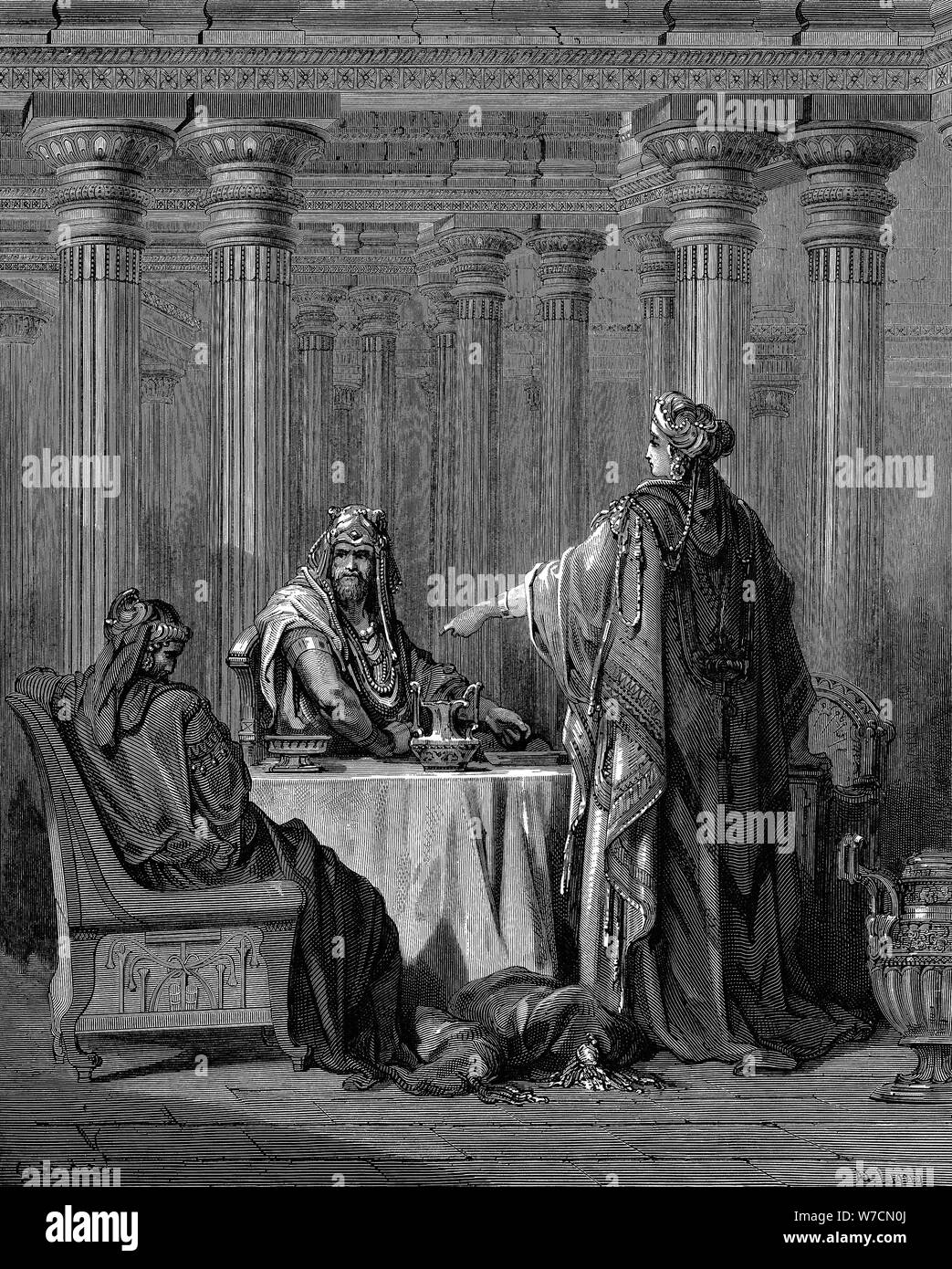 Esther (c450 BC) before her husband King Ahasuerus (Xerxes I) of Persia, 1866. Artist: Gustave Doré Stock Photohttps://www.alamy.com/image-license-details/?v=1https://www.alamy.com/esther-c450-bc-before-her-husband-king-ahasuerus-xerxes-i-of-persia-1866-artist-gustave-dor-image262738018.html
Esther (c450 BC) before her husband King Ahasuerus (Xerxes I) of Persia, 1866. Artist: Gustave Doré Stock Photohttps://www.alamy.com/image-license-details/?v=1https://www.alamy.com/esther-c450-bc-before-her-husband-king-ahasuerus-xerxes-i-of-persia-1866-artist-gustave-dor-image262738018.htmlRMW7CN0J–Esther (c450 BC) before her husband King Ahasuerus (Xerxes I) of Persia, 1866. Artist: Gustave Doré
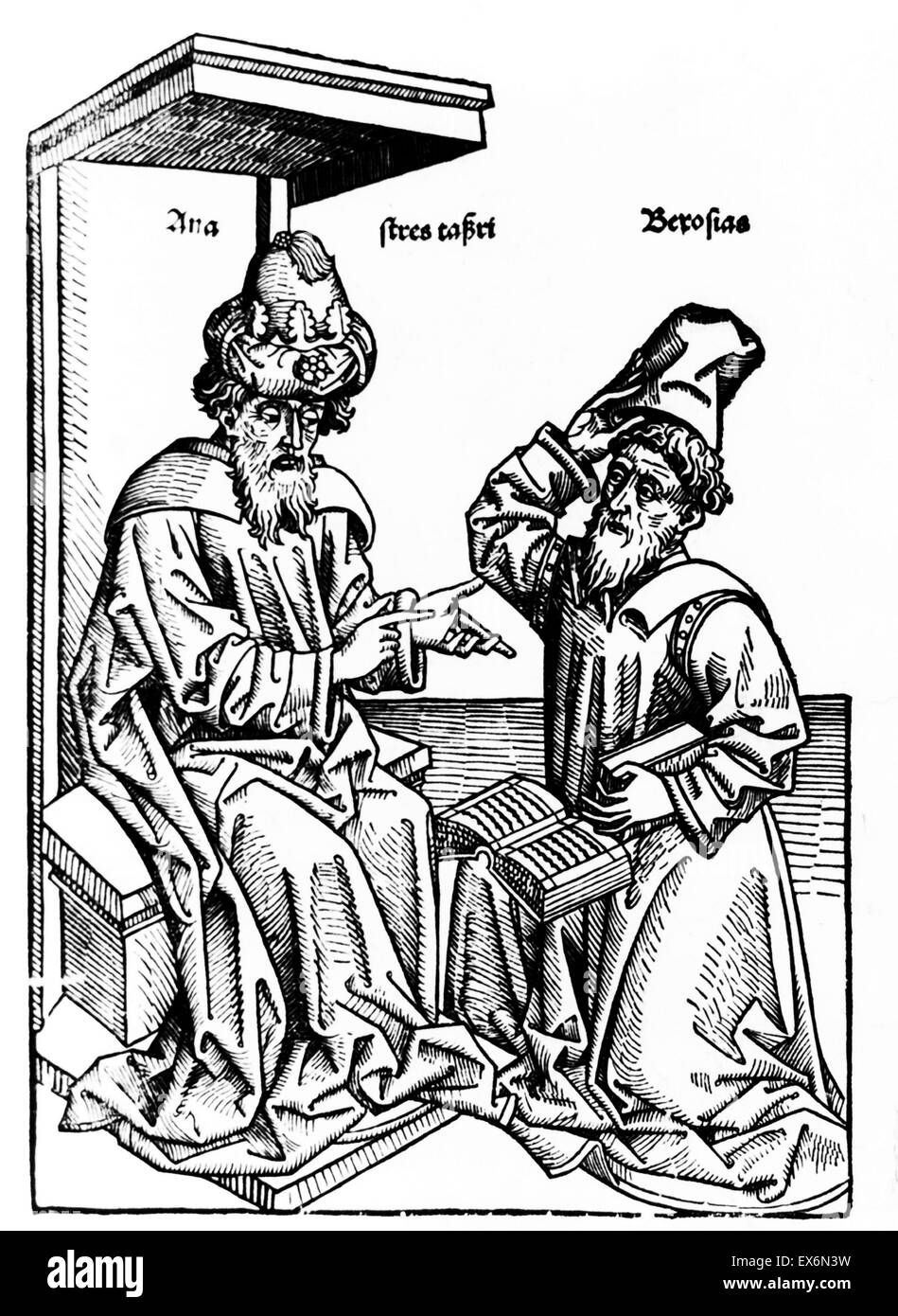 Engraving depicting Khosrau I, King of Persia, seated on his throne, directing the Sage, Burzuwayh, to go to India to procure the Kalilah Wa Dimnah. Dated 1483 Stock Photohttps://www.alamy.com/image-license-details/?v=1https://www.alamy.com/stock-photo-engraving-depicting-khosrau-i-king-of-persia-seated-on-his-throne-84970813.html
Engraving depicting Khosrau I, King of Persia, seated on his throne, directing the Sage, Burzuwayh, to go to India to procure the Kalilah Wa Dimnah. Dated 1483 Stock Photohttps://www.alamy.com/image-license-details/?v=1https://www.alamy.com/stock-photo-engraving-depicting-khosrau-i-king-of-persia-seated-on-his-throne-84970813.htmlRMEX6N3W–Engraving depicting Khosrau I, King of Persia, seated on his throne, directing the Sage, Burzuwayh, to go to India to procure the Kalilah Wa Dimnah. Dated 1483
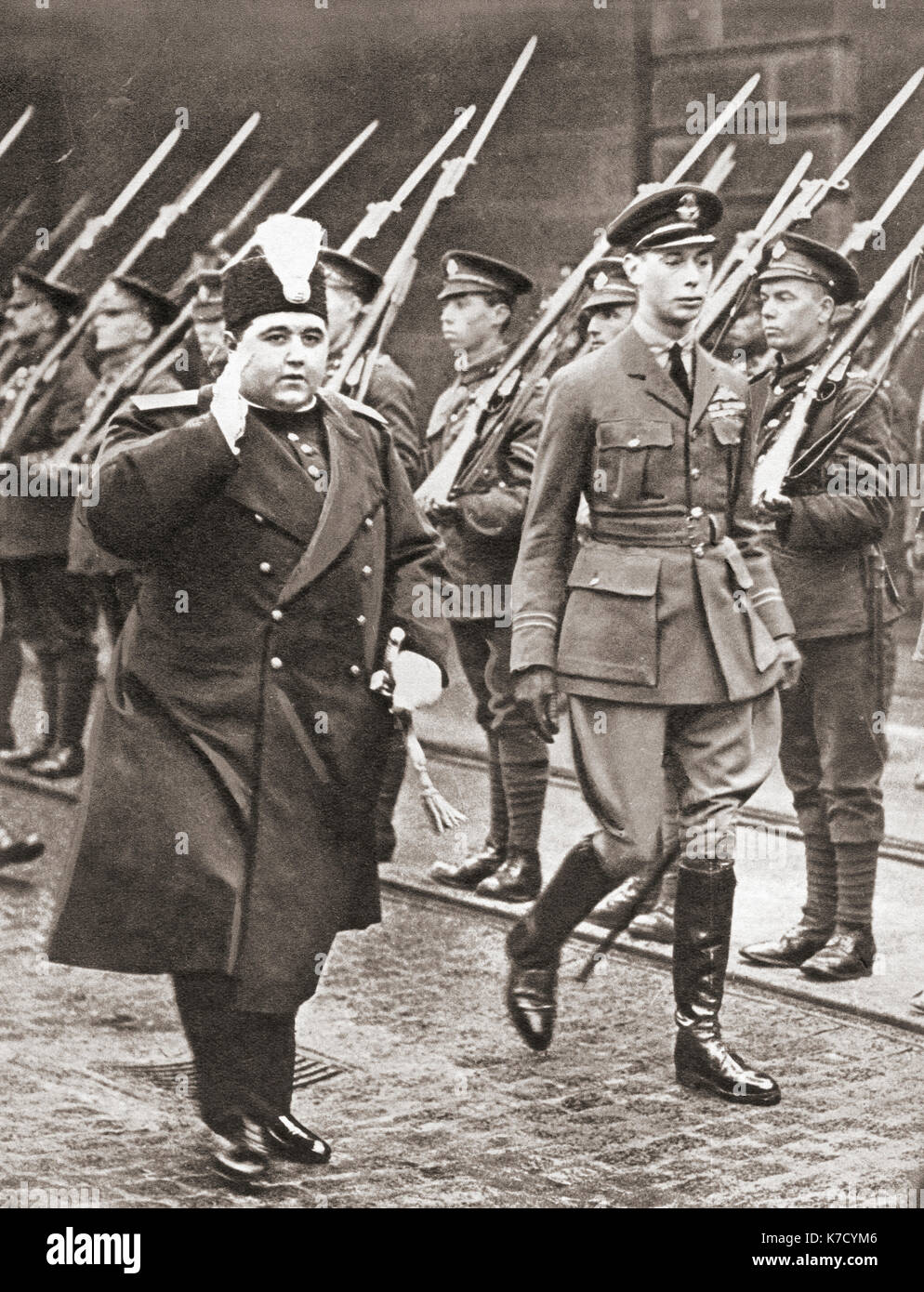 Prince Albert, right with the Shah of Persia, London, England, 1919. Prince Albert, future George VI, 1895 – 1952. King of the United Kingdom and the Dominions of the British Commonwealth. Ahmad Shāh Qājār, 1898 – 1930. Shah of Persia and the last ruling member of the Qajar dynasty. From The Coronation Book of King George VI and Queen Elizabeth, published 1937. Stock Photohttps://www.alamy.com/image-license-details/?v=1https://www.alamy.com/prince-albert-right-with-the-shah-of-persia-london-england-1919-prince-image159481062.html
Prince Albert, right with the Shah of Persia, London, England, 1919. Prince Albert, future George VI, 1895 – 1952. King of the United Kingdom and the Dominions of the British Commonwealth. Ahmad Shāh Qājār, 1898 – 1930. Shah of Persia and the last ruling member of the Qajar dynasty. From The Coronation Book of King George VI and Queen Elizabeth, published 1937. Stock Photohttps://www.alamy.com/image-license-details/?v=1https://www.alamy.com/prince-albert-right-with-the-shah-of-persia-london-england-1919-prince-image159481062.htmlRMK7CYM6–Prince Albert, right with the Shah of Persia, London, England, 1919. Prince Albert, future George VI, 1895 – 1952. King of the United Kingdom and the Dominions of the British Commonwealth. Ahmad Shāh Qājār, 1898 – 1930. Shah of Persia and the last ruling member of the Qajar dynasty. From The Coronation Book of King George VI and Queen Elizabeth, published 1937.
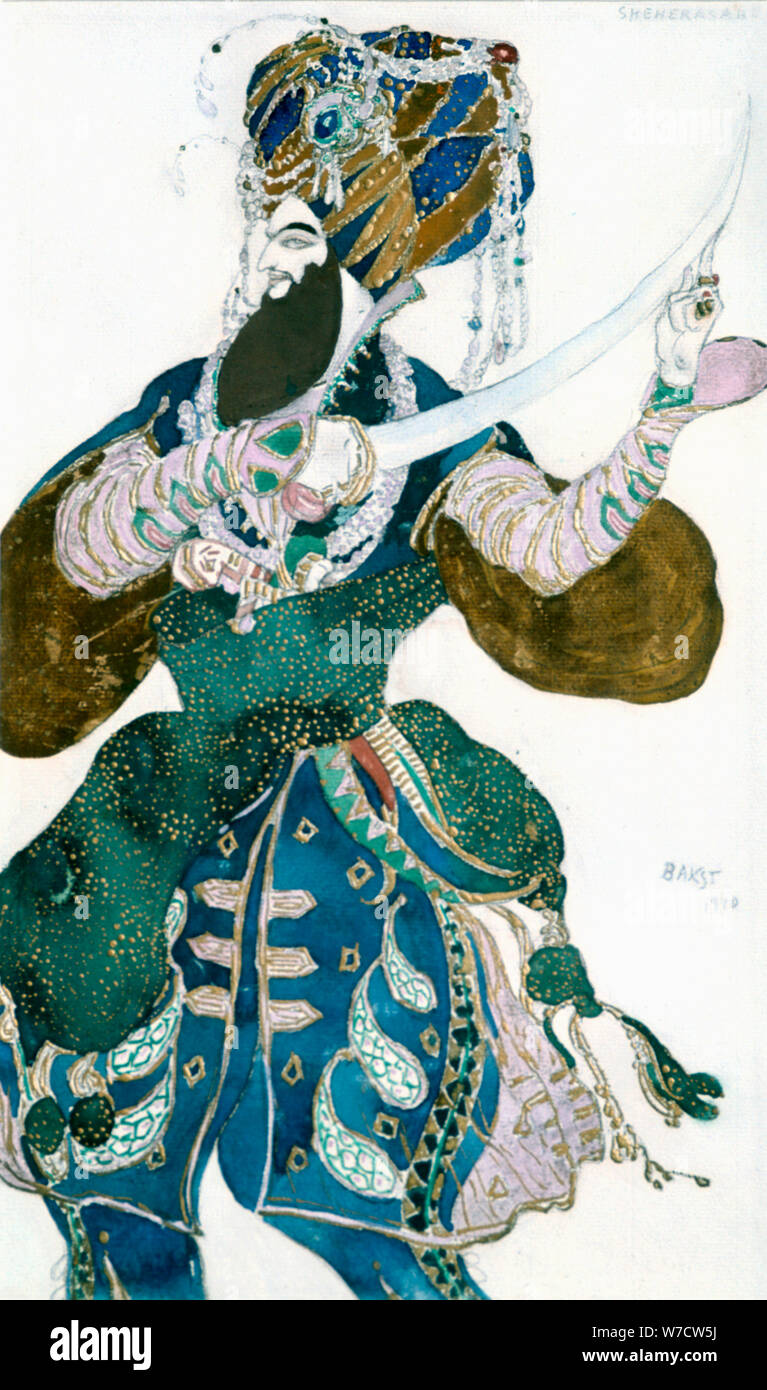 'The Shah of Persia', costume design for a Ballets Russes production of Scheherazade, c1913. Artist: Leon Bakst Stock Photohttps://www.alamy.com/image-license-details/?v=1https://www.alamy.com/the-shah-of-persia-costume-design-for-a-ballets-russes-production-of-scheherazade-c1913-artist-leon-bakst-image262741294.html
'The Shah of Persia', costume design for a Ballets Russes production of Scheherazade, c1913. Artist: Leon Bakst Stock Photohttps://www.alamy.com/image-license-details/?v=1https://www.alamy.com/the-shah-of-persia-costume-design-for-a-ballets-russes-production-of-scheherazade-c1913-artist-leon-bakst-image262741294.htmlRMW7CW5J–'The Shah of Persia', costume design for a Ballets Russes production of Scheherazade, c1913. Artist: Leon Bakst
 Engraving depicting Khosrau I, King of Persia, seated on his throne, directing the Sage, Burzuwayh, to go to India to procure the Kalilah Wa Dimnah. Dated 1483 Stock Photohttps://www.alamy.com/image-license-details/?v=1https://www.alamy.com/engraving-depicting-khosrau-i-king-of-persia-seated-on-his-throne-directing-the-sage-burzuwayh-to-go-to-india-to-procure-the-kalilah-wa-dimnah-dated-1483-image330680559.html
Engraving depicting Khosrau I, King of Persia, seated on his throne, directing the Sage, Burzuwayh, to go to India to procure the Kalilah Wa Dimnah. Dated 1483 Stock Photohttps://www.alamy.com/image-license-details/?v=1https://www.alamy.com/engraving-depicting-khosrau-i-king-of-persia-seated-on-his-throne-directing-the-sage-burzuwayh-to-go-to-india-to-procure-the-kalilah-wa-dimnah-dated-1483-image330680559.htmlRM2A5YPBY–Engraving depicting Khosrau I, King of Persia, seated on his throne, directing the Sage, Burzuwayh, to go to India to procure the Kalilah Wa Dimnah. Dated 1483
 The Shah of Persia, 19th century.Artist: Faustin Stock Photohttps://www.alamy.com/image-license-details/?v=1https://www.alamy.com/the-shah-of-persia-19th-centuryartist-faustin-image262748863.html
The Shah of Persia, 19th century.Artist: Faustin Stock Photohttps://www.alamy.com/image-license-details/?v=1https://www.alamy.com/the-shah-of-persia-19th-centuryartist-faustin-image262748863.htmlRMW7D6RY–The Shah of Persia, 19th century.Artist: Faustin
 Artaxerxes I of Persia from 466 -426 BC. Tomb of Artaxerxes I at Naqsh-e Rustam, Iran. Achaemenid Empire. Stock Photohttps://www.alamy.com/image-license-details/?v=1https://www.alamy.com/artaxerxes-i-of-persia-from-466-426-bc-tomb-of-artaxerxes-i-at-naqsh-e-rustam-iran-achaemenid-empire-image179832767.html
Artaxerxes I of Persia from 466 -426 BC. Tomb of Artaxerxes I at Naqsh-e Rustam, Iran. Achaemenid Empire. Stock Photohttps://www.alamy.com/image-license-details/?v=1https://www.alamy.com/artaxerxes-i-of-persia-from-466-426-bc-tomb-of-artaxerxes-i-at-naqsh-e-rustam-iran-achaemenid-empire-image179832767.htmlRMMCG2ER–Artaxerxes I of Persia from 466 -426 BC. Tomb of Artaxerxes I at Naqsh-e Rustam, Iran. Achaemenid Empire.
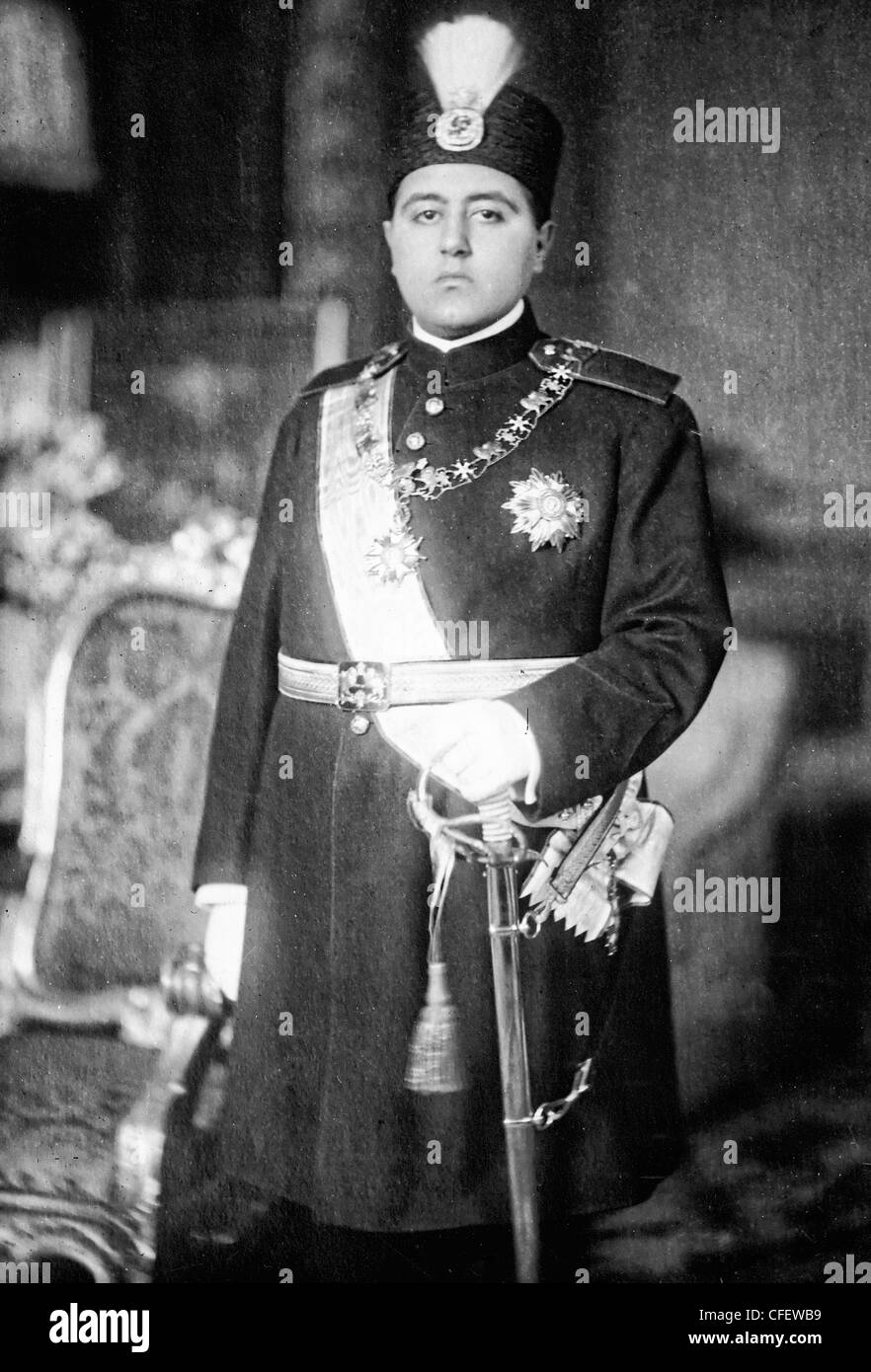 Ahmad Shah Qajar - Shah of Persia (Iran) from 1909 to 1925 and the last of the Qajar dynasty, circa 1920 Stock Photohttps://www.alamy.com/image-license-details/?v=1https://www.alamy.com/stock-photo-ahmad-shah-qajar-shah-of-persia-iran-from-1909-to-1925-and-the-last-43967821.html
Ahmad Shah Qajar - Shah of Persia (Iran) from 1909 to 1925 and the last of the Qajar dynasty, circa 1920 Stock Photohttps://www.alamy.com/image-license-details/?v=1https://www.alamy.com/stock-photo-ahmad-shah-qajar-shah-of-persia-iran-from-1909-to-1925-and-the-last-43967821.htmlRMCFEWB9–Ahmad Shah Qajar - Shah of Persia (Iran) from 1909 to 1925 and the last of the Qajar dynasty, circa 1920
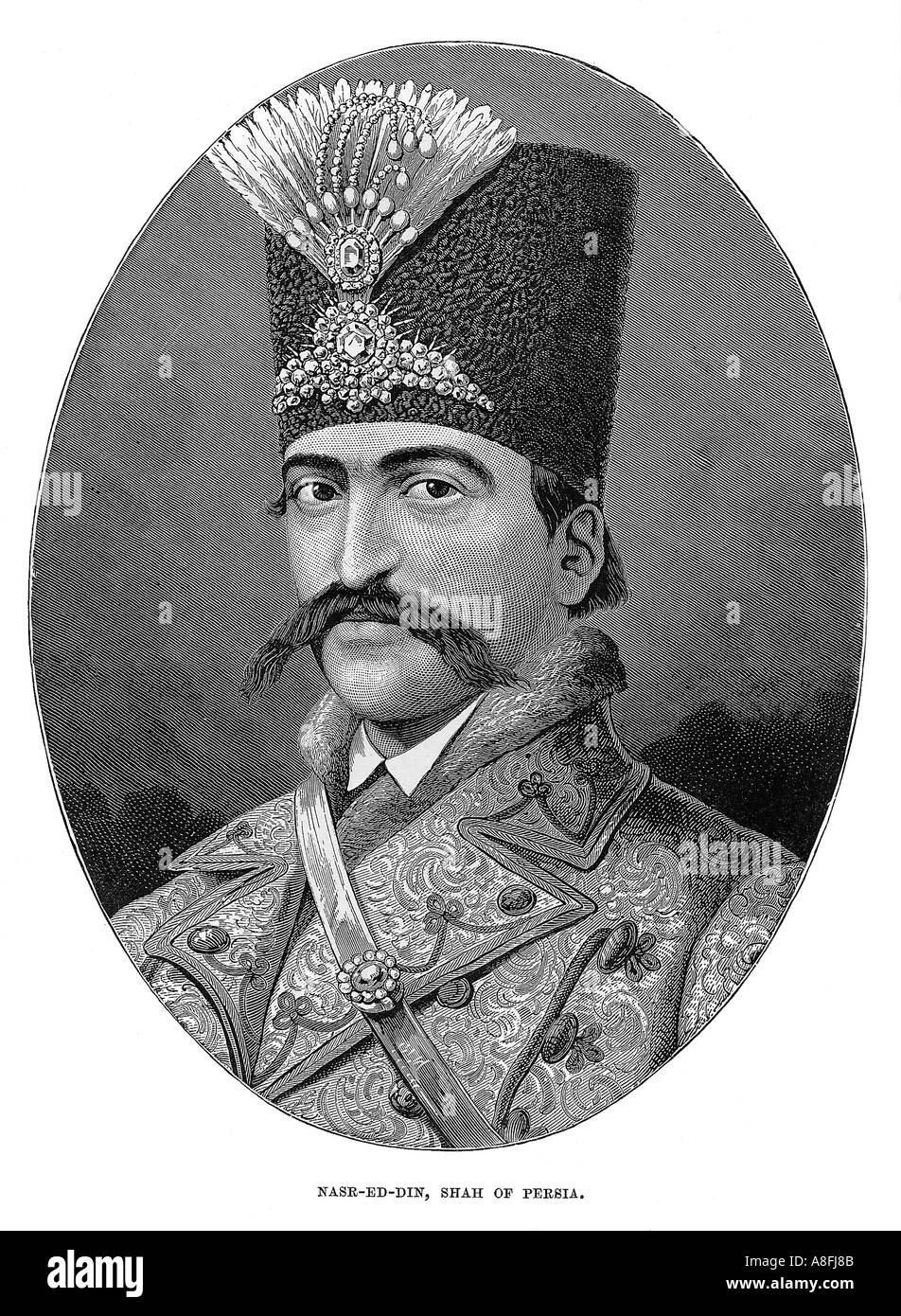 19th century engraving of Nasr Ed Din Shah of Persia from 1848 to 1896 the last of the absolute Persian monarchs c 1870 Stock Photohttps://www.alamy.com/image-license-details/?v=1https://www.alamy.com/19th-century-engraving-of-nasr-ed-din-shah-of-persia-from-1848-to-image3946122.html
19th century engraving of Nasr Ed Din Shah of Persia from 1848 to 1896 the last of the absolute Persian monarchs c 1870 Stock Photohttps://www.alamy.com/image-license-details/?v=1https://www.alamy.com/19th-century-engraving-of-nasr-ed-din-shah-of-persia-from-1848-to-image3946122.htmlRMA8FJ8B–19th century engraving of Nasr Ed Din Shah of Persia from 1848 to 1896 the last of the absolute Persian monarchs c 1870
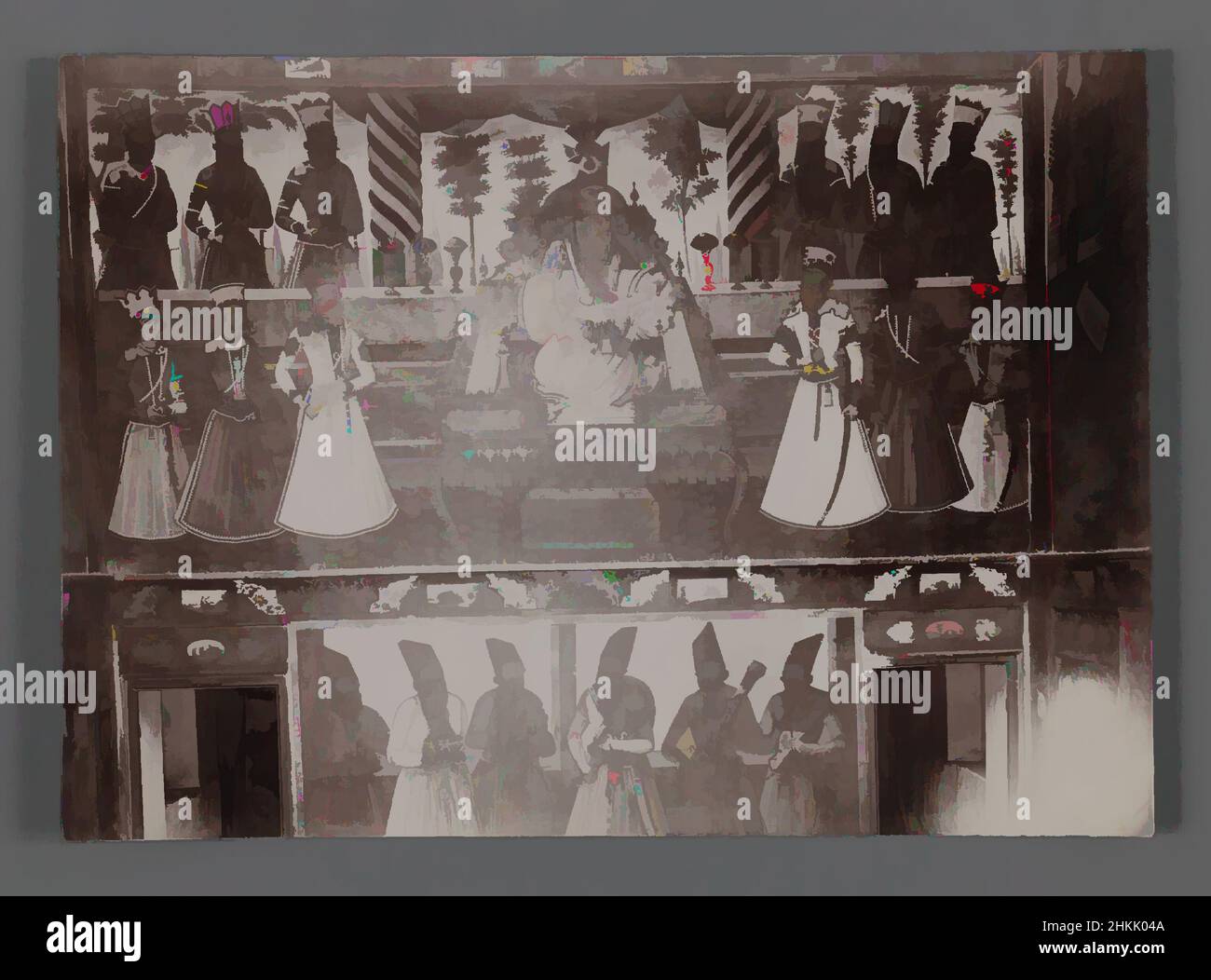 Art inspired by Mural of FAS and His Sons, dated 1228, One of 274 Vintage Photographs, Gelatin silver printing out paper, late 19th-early 20th century, Qajar, Qajar Period, 4 3/4 x 6 5/8 in., 12.1 x 16.9 cm, court, Fath-Ali Shah Qajar, Iran, Middle East, monarch, mural, Persia, Classic works modernized by Artotop with a splash of modernity. Shapes, color and value, eye-catching visual impact on art. Emotions through freedom of artworks in a contemporary way. A timeless message pursuing a wildly creative new direction. Artists turning to the digital medium and creating the Artotop NFT Stock Photohttps://www.alamy.com/image-license-details/?v=1https://www.alamy.com/art-inspired-by-mural-of-fas-and-his-sons-dated-1228-one-of-274-vintage-photographs-gelatin-silver-printing-out-paper-late-19th-early-20th-century-qajar-qajar-period-4-34-x-6-58-in-121-x-169-cm-court-fath-ali-shah-qajar-iran-middle-east-monarch-mural-persia-classic-works-modernized-by-artotop-with-a-splash-of-modernity-shapes-color-and-value-eye-catching-visual-impact-on-art-emotions-through-freedom-of-artworks-in-a-contemporary-way-a-timeless-message-pursuing-a-wildly-creative-new-direction-artists-turning-to-the-digital-medium-and-creating-the-artotop-nft-image459565242.html
Art inspired by Mural of FAS and His Sons, dated 1228, One of 274 Vintage Photographs, Gelatin silver printing out paper, late 19th-early 20th century, Qajar, Qajar Period, 4 3/4 x 6 5/8 in., 12.1 x 16.9 cm, court, Fath-Ali Shah Qajar, Iran, Middle East, monarch, mural, Persia, Classic works modernized by Artotop with a splash of modernity. Shapes, color and value, eye-catching visual impact on art. Emotions through freedom of artworks in a contemporary way. A timeless message pursuing a wildly creative new direction. Artists turning to the digital medium and creating the Artotop NFT Stock Photohttps://www.alamy.com/image-license-details/?v=1https://www.alamy.com/art-inspired-by-mural-of-fas-and-his-sons-dated-1228-one-of-274-vintage-photographs-gelatin-silver-printing-out-paper-late-19th-early-20th-century-qajar-qajar-period-4-34-x-6-58-in-121-x-169-cm-court-fath-ali-shah-qajar-iran-middle-east-monarch-mural-persia-classic-works-modernized-by-artotop-with-a-splash-of-modernity-shapes-color-and-value-eye-catching-visual-impact-on-art-emotions-through-freedom-of-artworks-in-a-contemporary-way-a-timeless-message-pursuing-a-wildly-creative-new-direction-artists-turning-to-the-digital-medium-and-creating-the-artotop-nft-image459565242.htmlRF2HKK04A–Art inspired by Mural of FAS and His Sons, dated 1228, One of 274 Vintage Photographs, Gelatin silver printing out paper, late 19th-early 20th century, Qajar, Qajar Period, 4 3/4 x 6 5/8 in., 12.1 x 16.9 cm, court, Fath-Ali Shah Qajar, Iran, Middle East, monarch, mural, Persia, Classic works modernized by Artotop with a splash of modernity. Shapes, color and value, eye-catching visual impact on art. Emotions through freedom of artworks in a contemporary way. A timeless message pursuing a wildly creative new direction. Artists turning to the digital medium and creating the Artotop NFT
 Darius I (548-486 BC) Achaemenid king of Persia from 521, with attendants, 1881. Artist: Unknown Stock Photohttps://www.alamy.com/image-license-details/?v=1https://www.alamy.com/darius-i-548-486-bc-achaemenid-king-of-persia-from-521-with-attendants-1881-artist-unknown-image262739679.html
Darius I (548-486 BC) Achaemenid king of Persia from 521, with attendants, 1881. Artist: Unknown Stock Photohttps://www.alamy.com/image-license-details/?v=1https://www.alamy.com/darius-i-548-486-bc-achaemenid-king-of-persia-from-521-with-attendants-1881-artist-unknown-image262739679.htmlRMW7CR3Y–Darius I (548-486 BC) Achaemenid king of Persia from 521, with attendants, 1881. Artist: Unknown
 In a rocky landscape sits a monarch on the demon's lap, in the background a man dressed in red, in the foreground a horse, above the scene four columns of text in Persian handwriting., Rustan and demon, draughtsman: anonymous, Persia, 1500 - 1600, voorstelling, :, brush, h 195 mm × w 109 mm Stock Photohttps://www.alamy.com/image-license-details/?v=1https://www.alamy.com/in-a-rocky-landscape-sits-a-monarch-on-the-demons-lap-in-the-background-a-man-dressed-in-red-in-the-foreground-a-horse-above-the-scene-four-columns-of-text-in-persian-handwriting-rustan-and-demon-draughtsman-anonymous-persia-1500-1600-voorstelling-brush-h-195-mm-w-109-mm-image472094866.html
In a rocky landscape sits a monarch on the demon's lap, in the background a man dressed in red, in the foreground a horse, above the scene four columns of text in Persian handwriting., Rustan and demon, draughtsman: anonymous, Persia, 1500 - 1600, voorstelling, :, brush, h 195 mm × w 109 mm Stock Photohttps://www.alamy.com/image-license-details/?v=1https://www.alamy.com/in-a-rocky-landscape-sits-a-monarch-on-the-demons-lap-in-the-background-a-man-dressed-in-red-in-the-foreground-a-horse-above-the-scene-four-columns-of-text-in-persian-handwriting-rustan-and-demon-draughtsman-anonymous-persia-1500-1600-voorstelling-brush-h-195-mm-w-109-mm-image472094866.htmlRM2JC1NPX–In a rocky landscape sits a monarch on the demon's lap, in the background a man dressed in red, in the foreground a horse, above the scene four columns of text in Persian handwriting., Rustan and demon, draughtsman: anonymous, Persia, 1500 - 1600, voorstelling, :, brush, h 195 mm × w 109 mm
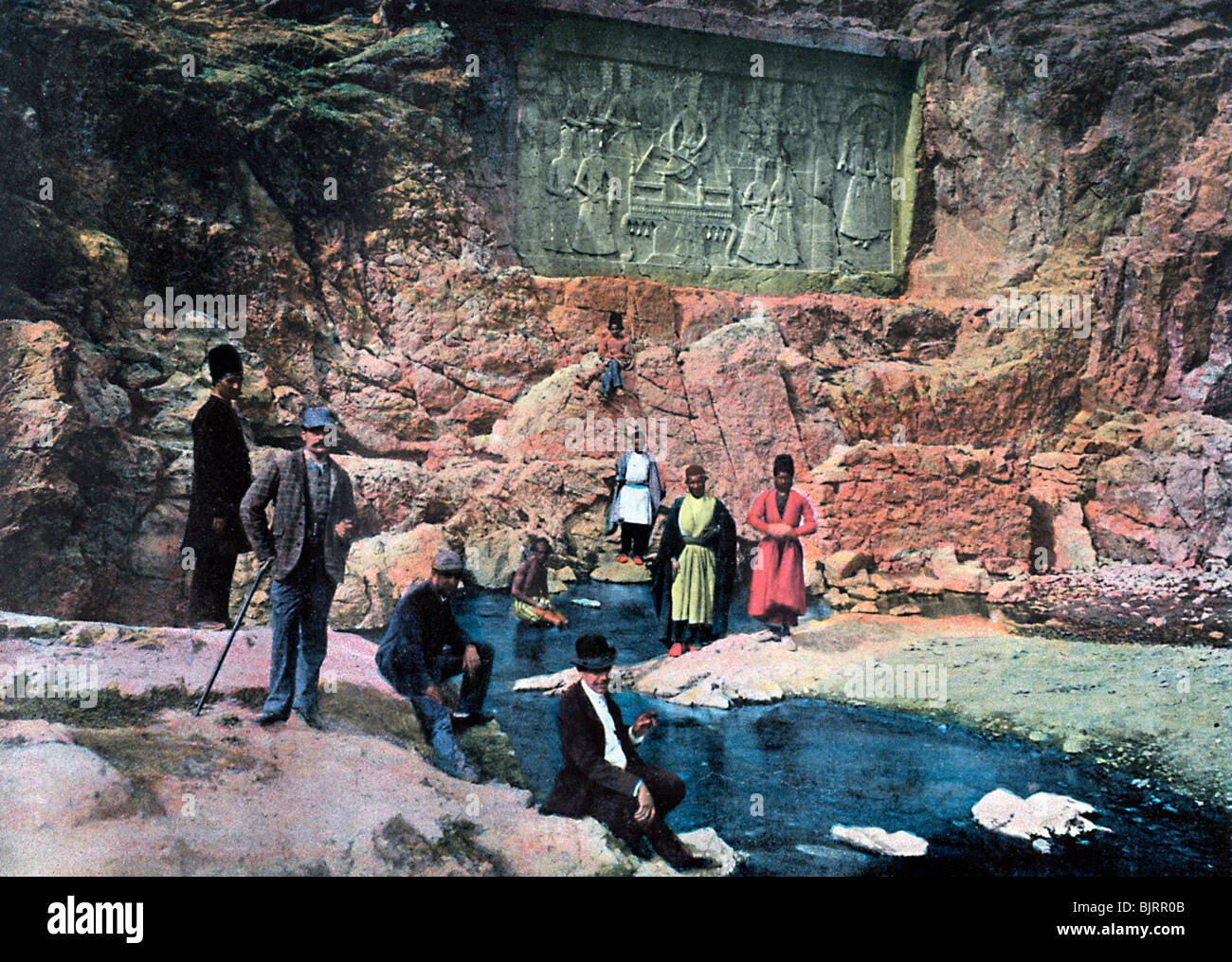 The Shah of Persia and his children, c1890.Artist: Gillot Stock Photohttps://www.alamy.com/image-license-details/?v=1https://www.alamy.com/stock-photo-the-shah-of-persia-and-his-children-c1890artist-gillot-28797115.html
The Shah of Persia and his children, c1890.Artist: Gillot Stock Photohttps://www.alamy.com/image-license-details/?v=1https://www.alamy.com/stock-photo-the-shah-of-persia-and-his-children-c1890artist-gillot-28797115.htmlRMBJRR0B–The Shah of Persia and his children, c1890.Artist: Gillot
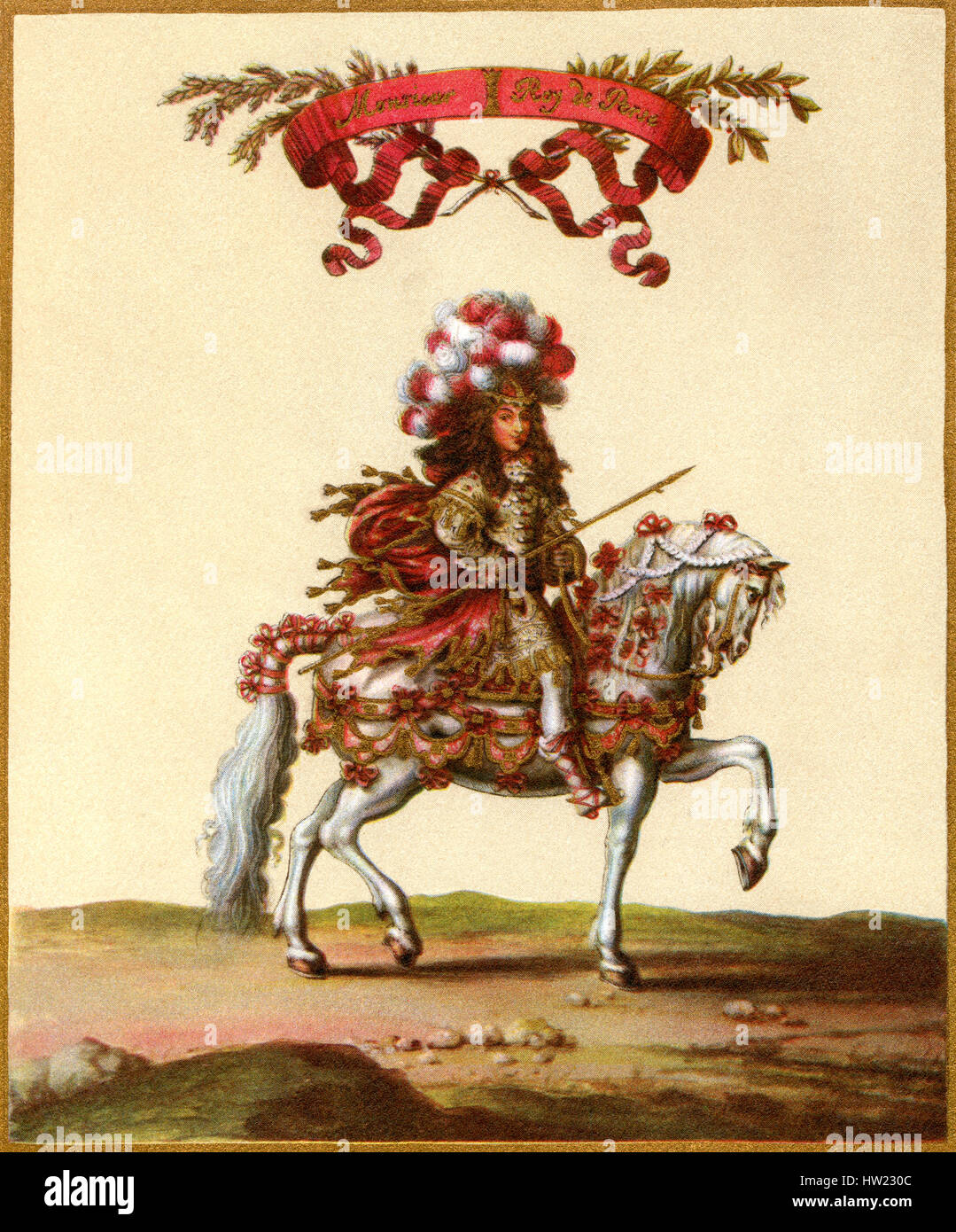 Philippe I, 1640-1701, Duke of Orleans, as the King of Persia. Part of the Grand Carousel given by Louis XIV in front of the Tuileries, Paris, France, 5th June 1662, to celebrate the birth of the Dauphin. Stock Photohttps://www.alamy.com/image-license-details/?v=1https://www.alamy.com/stock-photo-philippe-i-1640-1701-duke-of-orleans-as-the-king-of-persia-part-of-135885244.html
Philippe I, 1640-1701, Duke of Orleans, as the King of Persia. Part of the Grand Carousel given by Louis XIV in front of the Tuileries, Paris, France, 5th June 1662, to celebrate the birth of the Dauphin. Stock Photohttps://www.alamy.com/image-license-details/?v=1https://www.alamy.com/stock-photo-philippe-i-1640-1701-duke-of-orleans-as-the-king-of-persia-part-of-135885244.htmlRMHW230C–Philippe I, 1640-1701, Duke of Orleans, as the King of Persia. Part of the Grand Carousel given by Louis XIV in front of the Tuileries, Paris, France, 5th June 1662, to celebrate the birth of the Dauphin.
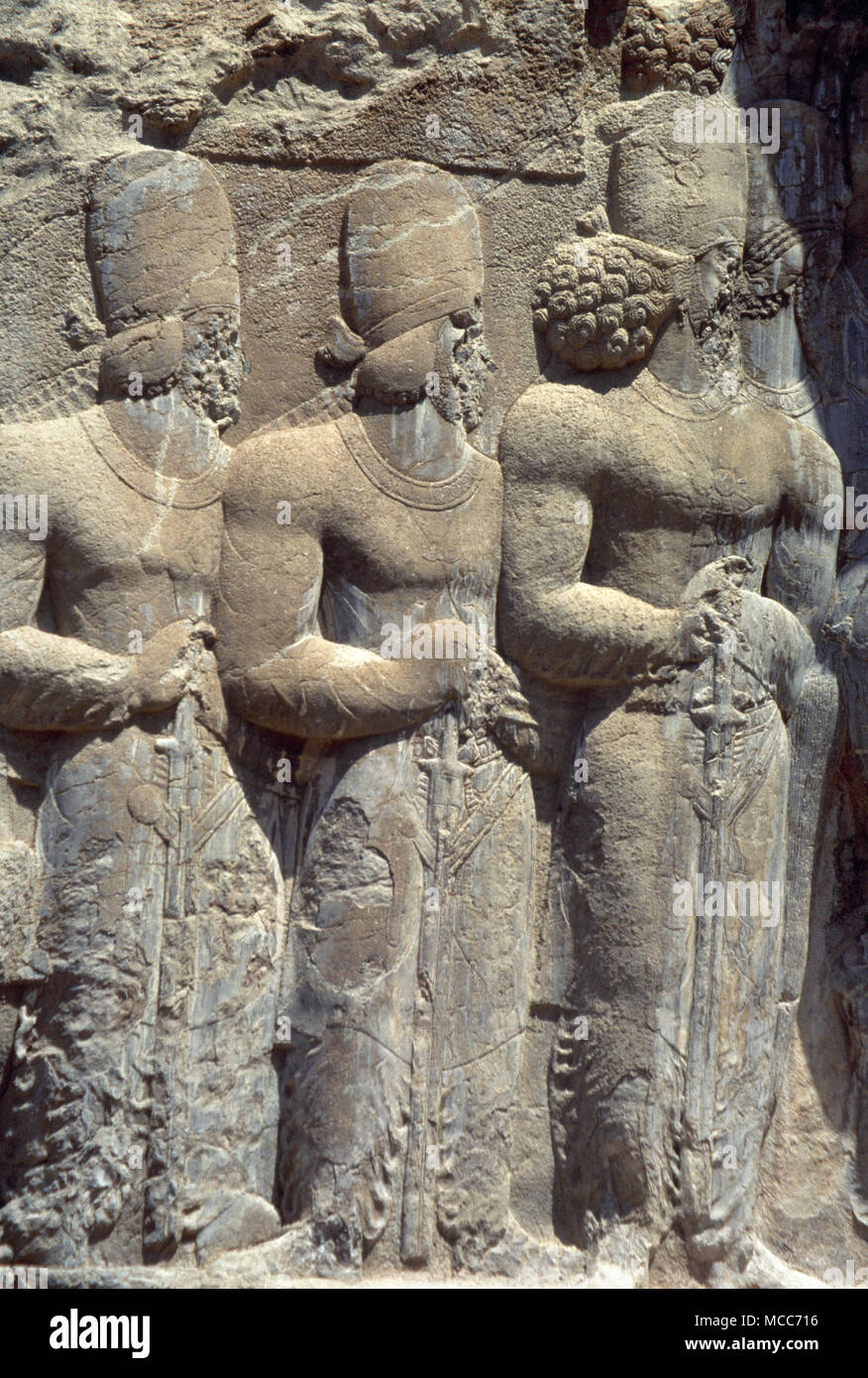 Sassanians. Relief of Shapur's Parade. Detail of the sons of the king and nobility. 3rd century. Naqsh-e Rajab. Fars Province, Iran (Persia). Stock Photohttps://www.alamy.com/image-license-details/?v=1https://www.alamy.com/sassanians-relief-of-shapurs-parade-detail-of-the-sons-of-the-king-and-nobility-3rd-century-naqsh-e-rajab-fars-province-iran-persia-image179748498.html
Sassanians. Relief of Shapur's Parade. Detail of the sons of the king and nobility. 3rd century. Naqsh-e Rajab. Fars Province, Iran (Persia). Stock Photohttps://www.alamy.com/image-license-details/?v=1https://www.alamy.com/sassanians-relief-of-shapurs-parade-detail-of-the-sons-of-the-king-and-nobility-3rd-century-naqsh-e-rajab-fars-province-iran-persia-image179748498.htmlRMMCC716–Sassanians. Relief of Shapur's Parade. Detail of the sons of the king and nobility. 3rd century. Naqsh-e Rajab. Fars Province, Iran (Persia).
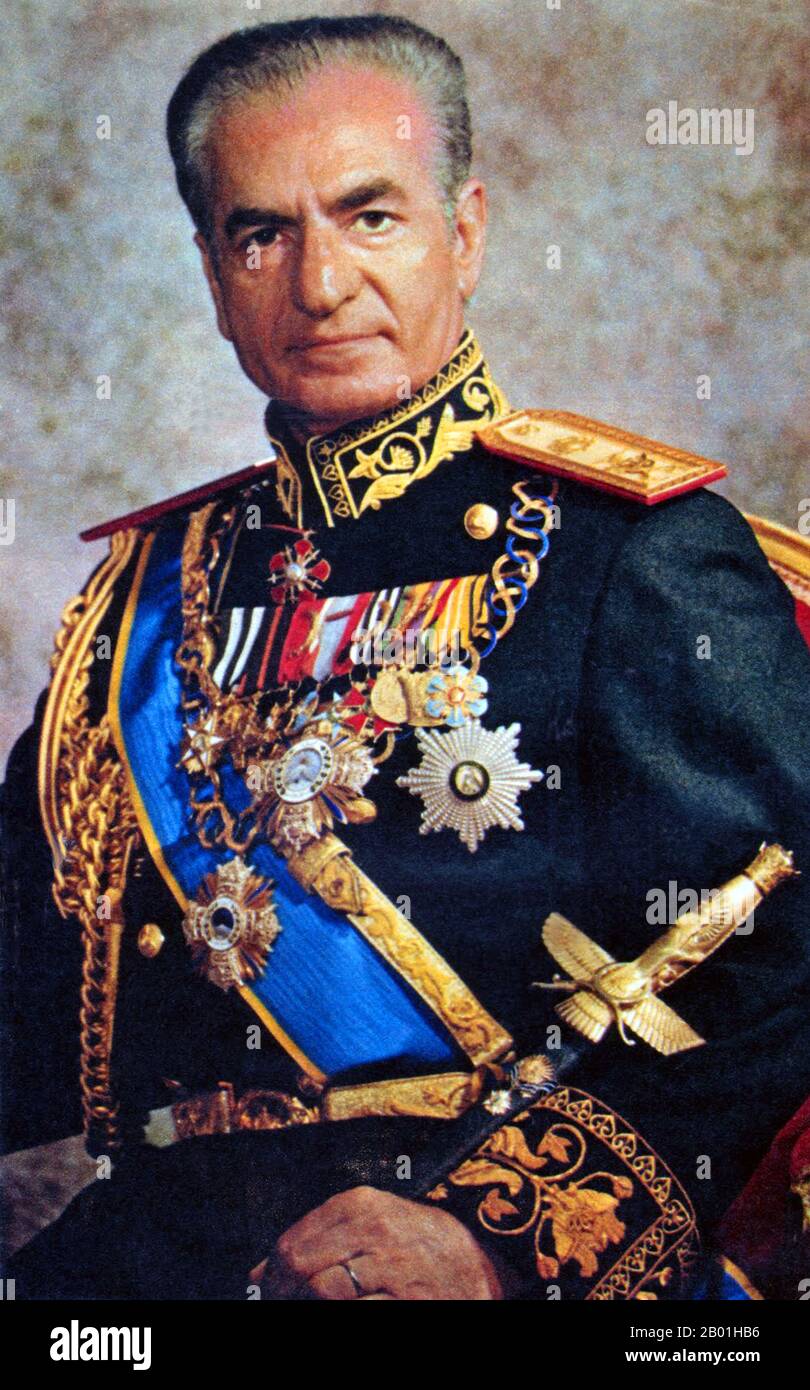 Iran/Persia: Mohammad Rezā Shāh Pahlavi (26 October 1919 – 27 July 1980), Shah of Iran, Shah of Persia (r. 1941-1979), 1970s. Mohammad Rezā Shāh Pahlavi ruled Iran from 16 September 1941 until his overthrow by the Iranian Revolution on 11 February 1979. He was the second and last monarch of the House of Pahlavi of the Iranian monarchy. Mohammad Reza Shah came to power during World War II after an Anglo-Soviet invasion forced the abdication of his father Reza Shah. During his reign, the Iranian oil industry was nationalised under Prime Minister Mohammad Mosaddegh. Stock Photohttps://www.alamy.com/image-license-details/?v=1https://www.alamy.com/iranpersia-mohammad-rez-shh-pahlavi-26-october-1919-27-july-1980-shah-of-iran-shah-of-persia-r-1941-1979-1970s-mohammad-rez-shh-pahlavi-ruled-iran-from-16-september-1941-until-his-overthrow-by-the-iranian-revolution-on-11-february-1979-he-was-the-second-and-last-monarch-of-the-house-of-pahlavi-of-the-iranian-monarchy-mohammad-reza-shah-came-to-power-during-world-war-ii-after-an-anglo-soviet-invasion-forced-the-abdication-of-his-father-reza-shah-during-his-reign-the-iranian-oil-industry-was-nationalised-under-prime-minister-mohammad-mosaddegh-image344242954.html
Iran/Persia: Mohammad Rezā Shāh Pahlavi (26 October 1919 – 27 July 1980), Shah of Iran, Shah of Persia (r. 1941-1979), 1970s. Mohammad Rezā Shāh Pahlavi ruled Iran from 16 September 1941 until his overthrow by the Iranian Revolution on 11 February 1979. He was the second and last monarch of the House of Pahlavi of the Iranian monarchy. Mohammad Reza Shah came to power during World War II after an Anglo-Soviet invasion forced the abdication of his father Reza Shah. During his reign, the Iranian oil industry was nationalised under Prime Minister Mohammad Mosaddegh. Stock Photohttps://www.alamy.com/image-license-details/?v=1https://www.alamy.com/iranpersia-mohammad-rez-shh-pahlavi-26-october-1919-27-july-1980-shah-of-iran-shah-of-persia-r-1941-1979-1970s-mohammad-rez-shh-pahlavi-ruled-iran-from-16-september-1941-until-his-overthrow-by-the-iranian-revolution-on-11-february-1979-he-was-the-second-and-last-monarch-of-the-house-of-pahlavi-of-the-iranian-monarchy-mohammad-reza-shah-came-to-power-during-world-war-ii-after-an-anglo-soviet-invasion-forced-the-abdication-of-his-father-reza-shah-during-his-reign-the-iranian-oil-industry-was-nationalised-under-prime-minister-mohammad-mosaddegh-image344242954.htmlRM2B01HB6–Iran/Persia: Mohammad Rezā Shāh Pahlavi (26 October 1919 – 27 July 1980), Shah of Iran, Shah of Persia (r. 1941-1979), 1970s. Mohammad Rezā Shāh Pahlavi ruled Iran from 16 September 1941 until his overthrow by the Iranian Revolution on 11 February 1979. He was the second and last monarch of the House of Pahlavi of the Iranian monarchy. Mohammad Reza Shah came to power during World War II after an Anglo-Soviet invasion forced the abdication of his father Reza Shah. During his reign, the Iranian oil industry was nationalised under Prime Minister Mohammad Mosaddegh.
 Ahasuerus (4th century BC). King of Persia. Portrait by Maurycy Gottlieb (1856-1879), 1876. 19th Century Polish Art Gallery (Sukiennice Museum). National Museum of Krakow. Poland. Stock Photohttps://www.alamy.com/image-license-details/?v=1https://www.alamy.com/ahasuerus-4th-century-bc-king-of-persia-portrait-by-maurycy-gottlieb-1856-1879-1876-19th-century-polish-art-gallery-sukiennice-museum-national-museum-of-krakow-poland-image331814574.html
Ahasuerus (4th century BC). King of Persia. Portrait by Maurycy Gottlieb (1856-1879), 1876. 19th Century Polish Art Gallery (Sukiennice Museum). National Museum of Krakow. Poland. Stock Photohttps://www.alamy.com/image-license-details/?v=1https://www.alamy.com/ahasuerus-4th-century-bc-king-of-persia-portrait-by-maurycy-gottlieb-1856-1879-1876-19th-century-polish-art-gallery-sukiennice-museum-national-museum-of-krakow-poland-image331814574.htmlRM2A7RCTE–Ahasuerus (4th century BC). King of Persia. Portrait by Maurycy Gottlieb (1856-1879), 1876. 19th Century Polish Art Gallery (Sukiennice Museum). National Museum of Krakow. Poland.
 Mesopotamia. Old Persia. Median Kingdom. 678-549 BC. King of Medes. Engraving. (Later colouration) Stock Photohttps://www.alamy.com/image-license-details/?v=1https://www.alamy.com/mesopotamia-old-persia-median-kingdom-678-549-bc-king-of-medes-engraving-image60884178.html
Mesopotamia. Old Persia. Median Kingdom. 678-549 BC. King of Medes. Engraving. (Later colouration) Stock Photohttps://www.alamy.com/image-license-details/?v=1https://www.alamy.com/mesopotamia-old-persia-median-kingdom-678-549-bc-king-of-medes-engraving-image60884178.htmlRMDF1EAX–Mesopotamia. Old Persia. Median Kingdom. 678-549 BC. King of Medes. Engraving. (Later colouration)
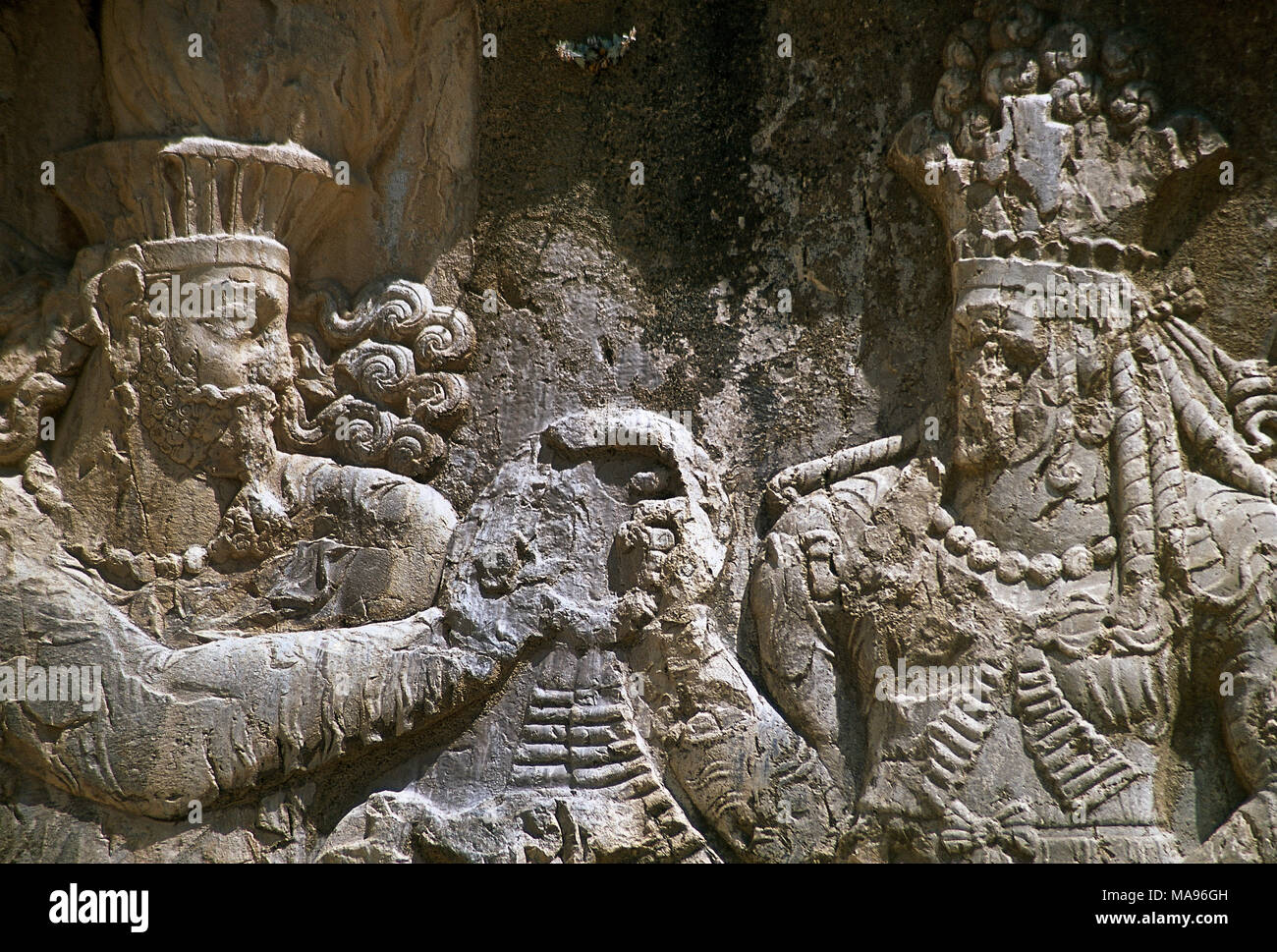 Sassanian rock relief. The Investiture of Narseh receiving the ring of kingship from a female figure (divinity Aredvi Sura or Queen Shapurdokhtak), c. 293-303. Naqsh-e Rustam, Fars Province, Iran. (Ancient Persia). Stock Photohttps://www.alamy.com/image-license-details/?v=1https://www.alamy.com/sassanian-rock-relief-the-investiture-of-narseh-receiving-the-ring-of-kingship-from-a-female-figure-divinity-aredvi-sura-or-queen-shapurdokhtak-c-293-303-naqsh-e-rustam-fars-province-iran-ancient-persia-image178452977.html
Sassanian rock relief. The Investiture of Narseh receiving the ring of kingship from a female figure (divinity Aredvi Sura or Queen Shapurdokhtak), c. 293-303. Naqsh-e Rustam, Fars Province, Iran. (Ancient Persia). Stock Photohttps://www.alamy.com/image-license-details/?v=1https://www.alamy.com/sassanian-rock-relief-the-investiture-of-narseh-receiving-the-ring-of-kingship-from-a-female-figure-divinity-aredvi-sura-or-queen-shapurdokhtak-c-293-303-naqsh-e-rustam-fars-province-iran-ancient-persia-image178452977.htmlRMMA96GH–Sassanian rock relief. The Investiture of Narseh receiving the ring of kingship from a female figure (divinity Aredvi Sura or Queen Shapurdokhtak), c. 293-303. Naqsh-e Rustam, Fars Province, Iran. (Ancient Persia).
 Naser al-Din Shah Qajar (1831-1896). King of Persia from 1848-1896. He was assassinated. Qajar Dynasty. Engraving. 19th century. Stock Photohttps://www.alamy.com/image-license-details/?v=1https://www.alamy.com/stock-photo-naser-al-din-shah-qajar-1831-1896-king-of-persia-from-1848-1896-he-88951750.html
Naser al-Din Shah Qajar (1831-1896). King of Persia from 1848-1896. He was assassinated. Qajar Dynasty. Engraving. 19th century. Stock Photohttps://www.alamy.com/image-license-details/?v=1https://www.alamy.com/stock-photo-naser-al-din-shah-qajar-1831-1896-king-of-persia-from-1848-1896-he-88951750.htmlRMF4M2T6–Naser al-Din Shah Qajar (1831-1896). King of Persia from 1848-1896. He was assassinated. Qajar Dynasty. Engraving. 19th century.
 Achaemenid Empire. Ganjnameh. Ancient inscriptions carved in granite in 3 languages: Old Persian, Neo-Babylonian and Neo-Elamite. By Darius the Great (521-485 BC) and Xerxes the Great (485-65 BC). Cuneiform alphabets. Near Hamedan, Iran (Persia). Stock Photohttps://www.alamy.com/image-license-details/?v=1https://www.alamy.com/achaemenid-empire-ganjnameh-ancient-inscriptions-carved-in-granite-in-3-languages-old-persian-neo-babylonian-and-neo-elamite-by-darius-the-great-521-485-bc-and-xerxes-the-great-485-65-bc-cuneiform-alphabets-near-hamedan-iran-persia-image179742455.html
Achaemenid Empire. Ganjnameh. Ancient inscriptions carved in granite in 3 languages: Old Persian, Neo-Babylonian and Neo-Elamite. By Darius the Great (521-485 BC) and Xerxes the Great (485-65 BC). Cuneiform alphabets. Near Hamedan, Iran (Persia). Stock Photohttps://www.alamy.com/image-license-details/?v=1https://www.alamy.com/achaemenid-empire-ganjnameh-ancient-inscriptions-carved-in-granite-in-3-languages-old-persian-neo-babylonian-and-neo-elamite-by-darius-the-great-521-485-bc-and-xerxes-the-great-485-65-bc-cuneiform-alphabets-near-hamedan-iran-persia-image179742455.htmlRMMCBY9B–Achaemenid Empire. Ganjnameh. Ancient inscriptions carved in granite in 3 languages: Old Persian, Neo-Babylonian and Neo-Elamite. By Darius the Great (521-485 BC) and Xerxes the Great (485-65 BC). Cuneiform alphabets. Near Hamedan, Iran (Persia).
 Naser al-Din Shah Qajar (1831-1896). King of Persia from 1848-1896. He was assassinated. Qajar Dynasty. Engraving. 19th century. Stock Photohttps://www.alamy.com/image-license-details/?v=1https://www.alamy.com/stock-photo-naser-al-din-shah-qajar-1831-1896-king-of-persia-from-1848-1896-he-88955055.html
Naser al-Din Shah Qajar (1831-1896). King of Persia from 1848-1896. He was assassinated. Qajar Dynasty. Engraving. 19th century. Stock Photohttps://www.alamy.com/image-license-details/?v=1https://www.alamy.com/stock-photo-naser-al-din-shah-qajar-1831-1896-king-of-persia-from-1848-1896-he-88955055.htmlRMF4M727–Naser al-Din Shah Qajar (1831-1896). King of Persia from 1848-1896. He was assassinated. Qajar Dynasty. Engraving. 19th century.
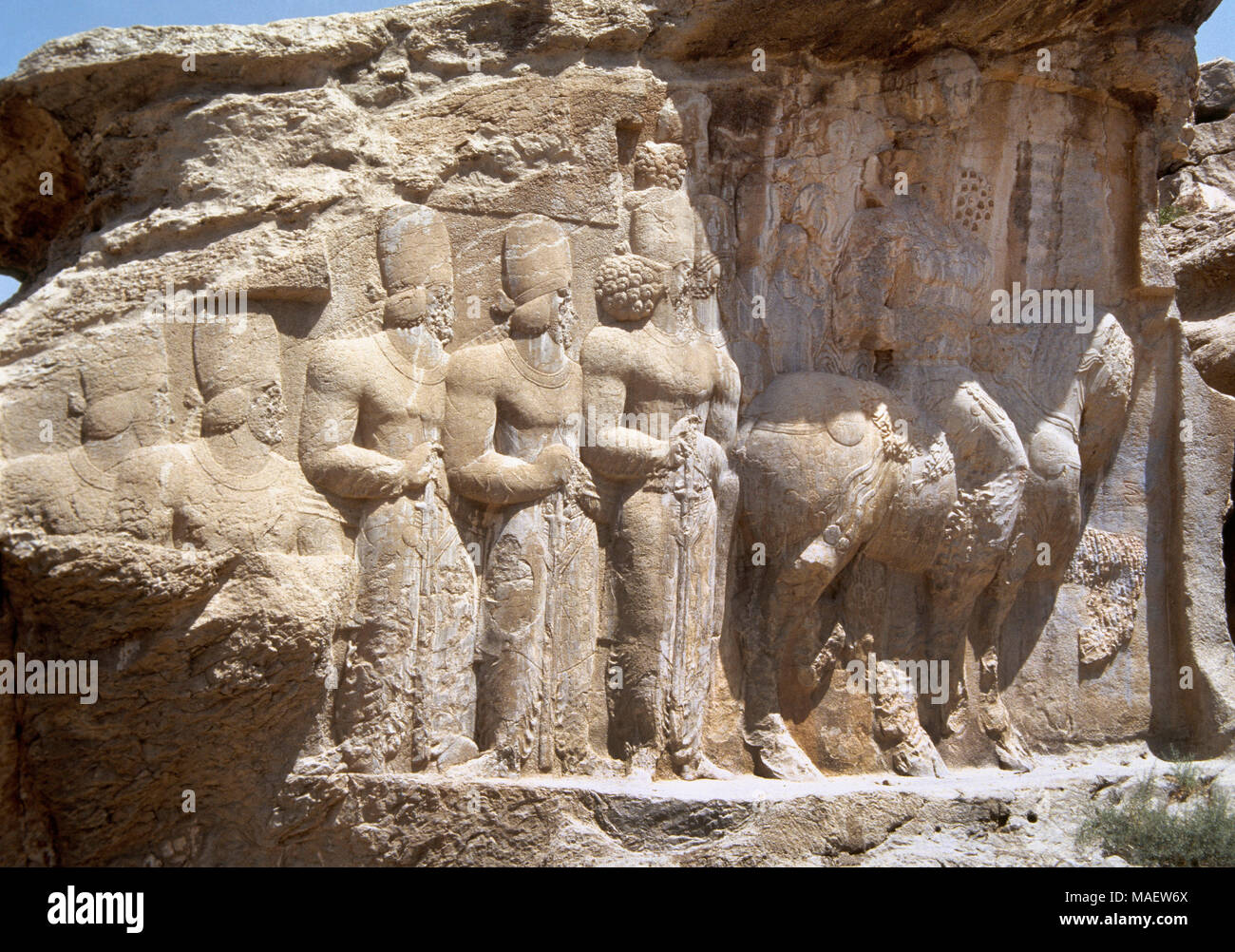 Sasanians. Relief of Shapur's Parade depicting the King Shapur I riding a horse, folllowed by his sons and other characters. 3rd century. It celebrates the king's military victory in 244 over the Roman emperor Valerian and Philip the Arab. Naqsh-e Rajab. Fars Province, Iran (Old Persia). Stock Photohttps://www.alamy.com/image-license-details/?v=1https://www.alamy.com/sasanians-relief-of-shapurs-parade-depicting-the-king-shapur-i-riding-a-horse-folllowed-by-his-sons-and-other-characters-3rd-century-it-celebrates-the-kings-military-victory-in-244-over-the-roman-emperor-valerian-and-philip-the-arab-naqsh-e-rajab-fars-province-iran-old-persia-image178577362.html
Sasanians. Relief of Shapur's Parade depicting the King Shapur I riding a horse, folllowed by his sons and other characters. 3rd century. It celebrates the king's military victory in 244 over the Roman emperor Valerian and Philip the Arab. Naqsh-e Rajab. Fars Province, Iran (Old Persia). Stock Photohttps://www.alamy.com/image-license-details/?v=1https://www.alamy.com/sasanians-relief-of-shapurs-parade-depicting-the-king-shapur-i-riding-a-horse-folllowed-by-his-sons-and-other-characters-3rd-century-it-celebrates-the-kings-military-victory-in-244-over-the-roman-emperor-valerian-and-philip-the-arab-naqsh-e-rajab-fars-province-iran-old-persia-image178577362.htmlRMMAEW6X–Sasanians. Relief of Shapur's Parade depicting the King Shapur I riding a horse, folllowed by his sons and other characters. 3rd century. It celebrates the king's military victory in 244 over the Roman emperor Valerian and Philip the Arab. Naqsh-e Rajab. Fars Province, Iran (Old Persia).
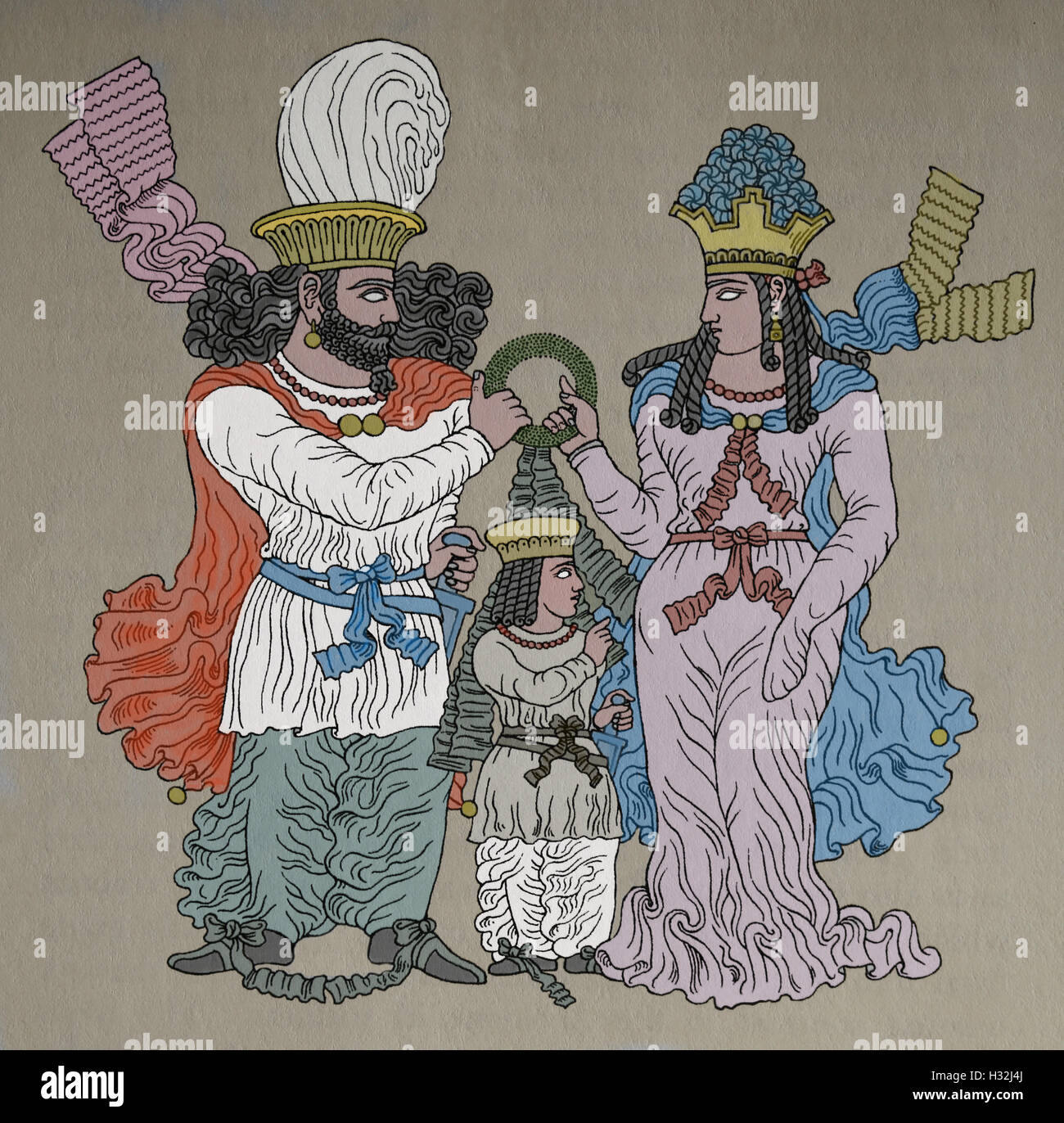 Ancient Persia. Sassanid period. Goddess Anahita investing a King Narse (293-302 AD) with royal circlet. Engraving, color.19th c Stock Photohttps://www.alamy.com/image-license-details/?v=1https://www.alamy.com/stock-photo-ancient-persia-sassanid-period-goddess-anahita-investing-a-king-narse-122374690.html
Ancient Persia. Sassanid period. Goddess Anahita investing a King Narse (293-302 AD) with royal circlet. Engraving, color.19th c Stock Photohttps://www.alamy.com/image-license-details/?v=1https://www.alamy.com/stock-photo-ancient-persia-sassanid-period-goddess-anahita-investing-a-king-narse-122374690.htmlRMH32J4J–Ancient Persia. Sassanid period. Goddess Anahita investing a King Narse (293-302 AD) with royal circlet. Engraving, color.19th c
 The king of the Achaemenid dynasty of Persia, Xerxes I (519-465 BC), in 483 BC (Second Persian invasion of Greece) built The Xerxes Canal, navigable canal through the base of the Mount Athos peninsula, northern Greece. The rough sea broke it apart. Frustrated and enraged, Xerxes ordered that the Hellespont (Dardanelles) received three hundred scourges with a chain. Chromolithography. La Civilizacion (The Civilization), volume II, 1881. Stock Photohttps://www.alamy.com/image-license-details/?v=1https://www.alamy.com/the-king-of-the-achaemenid-dynasty-of-persia-xerxes-i-519-465-bc-in-483-bc-second-persian-invasion-of-greece-built-the-xerxes-canal-navigable-canal-through-the-base-of-the-mount-athos-peninsula-northern-greece-the-rough-sea-broke-it-apart-frustrated-and-enraged-xerxes-ordered-that-the-hellespont-dardanelles-received-three-hundred-scourges-with-a-chain-chromolithography-la-civilizacion-the-civilization-volume-ii-1881-image227080497.html
The king of the Achaemenid dynasty of Persia, Xerxes I (519-465 BC), in 483 BC (Second Persian invasion of Greece) built The Xerxes Canal, navigable canal through the base of the Mount Athos peninsula, northern Greece. The rough sea broke it apart. Frustrated and enraged, Xerxes ordered that the Hellespont (Dardanelles) received three hundred scourges with a chain. Chromolithography. La Civilizacion (The Civilization), volume II, 1881. Stock Photohttps://www.alamy.com/image-license-details/?v=1https://www.alamy.com/the-king-of-the-achaemenid-dynasty-of-persia-xerxes-i-519-465-bc-in-483-bc-second-persian-invasion-of-greece-built-the-xerxes-canal-navigable-canal-through-the-base-of-the-mount-athos-peninsula-northern-greece-the-rough-sea-broke-it-apart-frustrated-and-enraged-xerxes-ordered-that-the-hellespont-dardanelles-received-three-hundred-scourges-with-a-chain-chromolithography-la-civilizacion-the-civilization-volume-ii-1881-image227080497.htmlRMR5CBDN–The king of the Achaemenid dynasty of Persia, Xerxes I (519-465 BC), in 483 BC (Second Persian invasion of Greece) built The Xerxes Canal, navigable canal through the base of the Mount Athos peninsula, northern Greece. The rough sea broke it apart. Frustrated and enraged, Xerxes ordered that the Hellespont (Dardanelles) received three hundred scourges with a chain. Chromolithography. La Civilizacion (The Civilization), volume II, 1881.
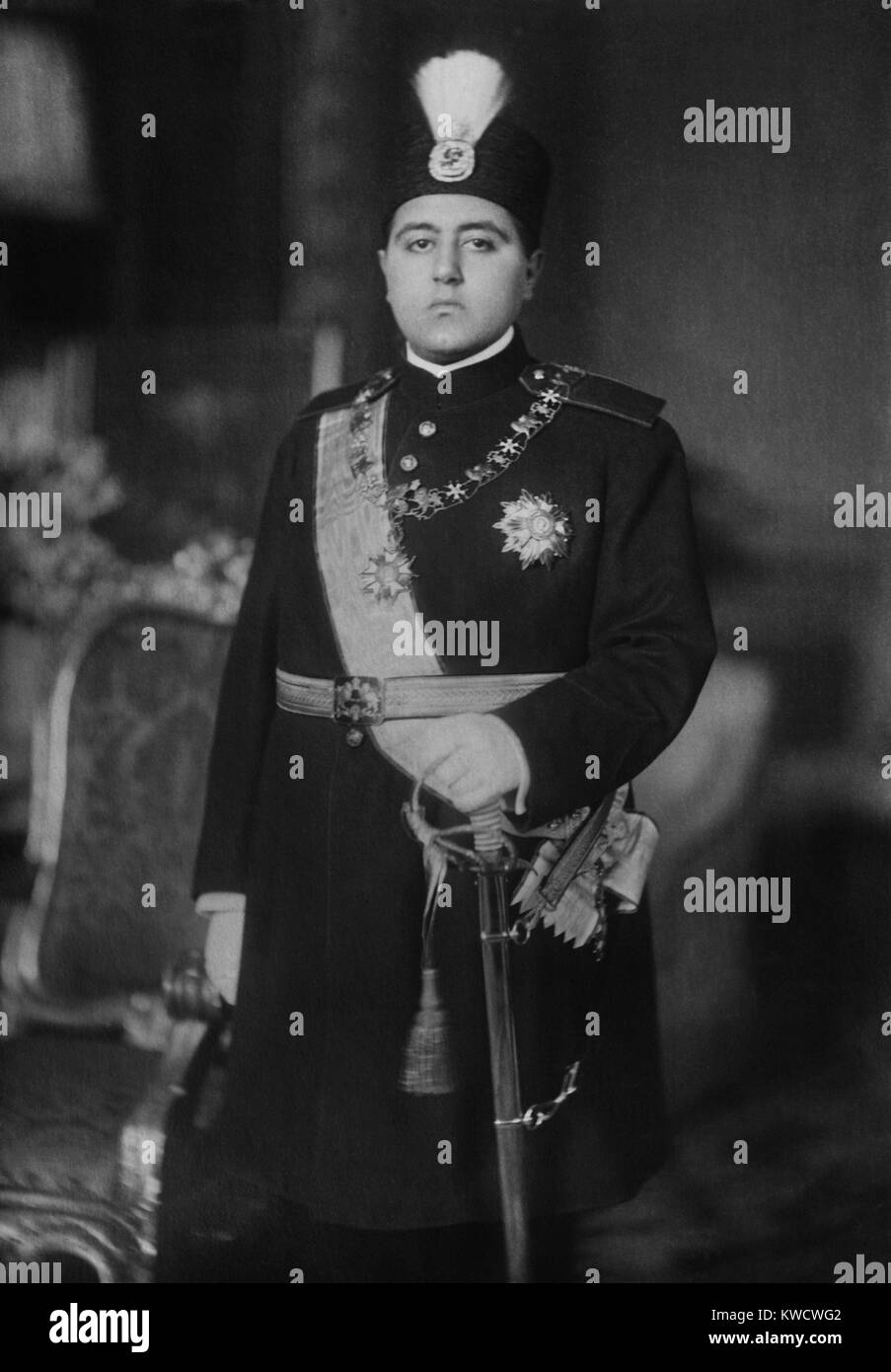 Ahmad Shah Qajar, the last Shah of the Qajar Dynasty that ruled Iran from 1796 to 1925 (BSLOC 2017 1 118) Stock Photohttps://www.alamy.com/image-license-details/?v=1https://www.alamy.com/stock-photo-ahmad-shah-qajar-the-last-shah-of-the-qajar-dynasty-that-ruled-iran-170543186.html
Ahmad Shah Qajar, the last Shah of the Qajar Dynasty that ruled Iran from 1796 to 1925 (BSLOC 2017 1 118) Stock Photohttps://www.alamy.com/image-license-details/?v=1https://www.alamy.com/stock-photo-ahmad-shah-qajar-the-last-shah-of-the-qajar-dynasty-that-ruled-iran-170543186.htmlRMKWCWG2–Ahmad Shah Qajar, the last Shah of the Qajar Dynasty that ruled Iran from 1796 to 1925 (BSLOC 2017 1 118)
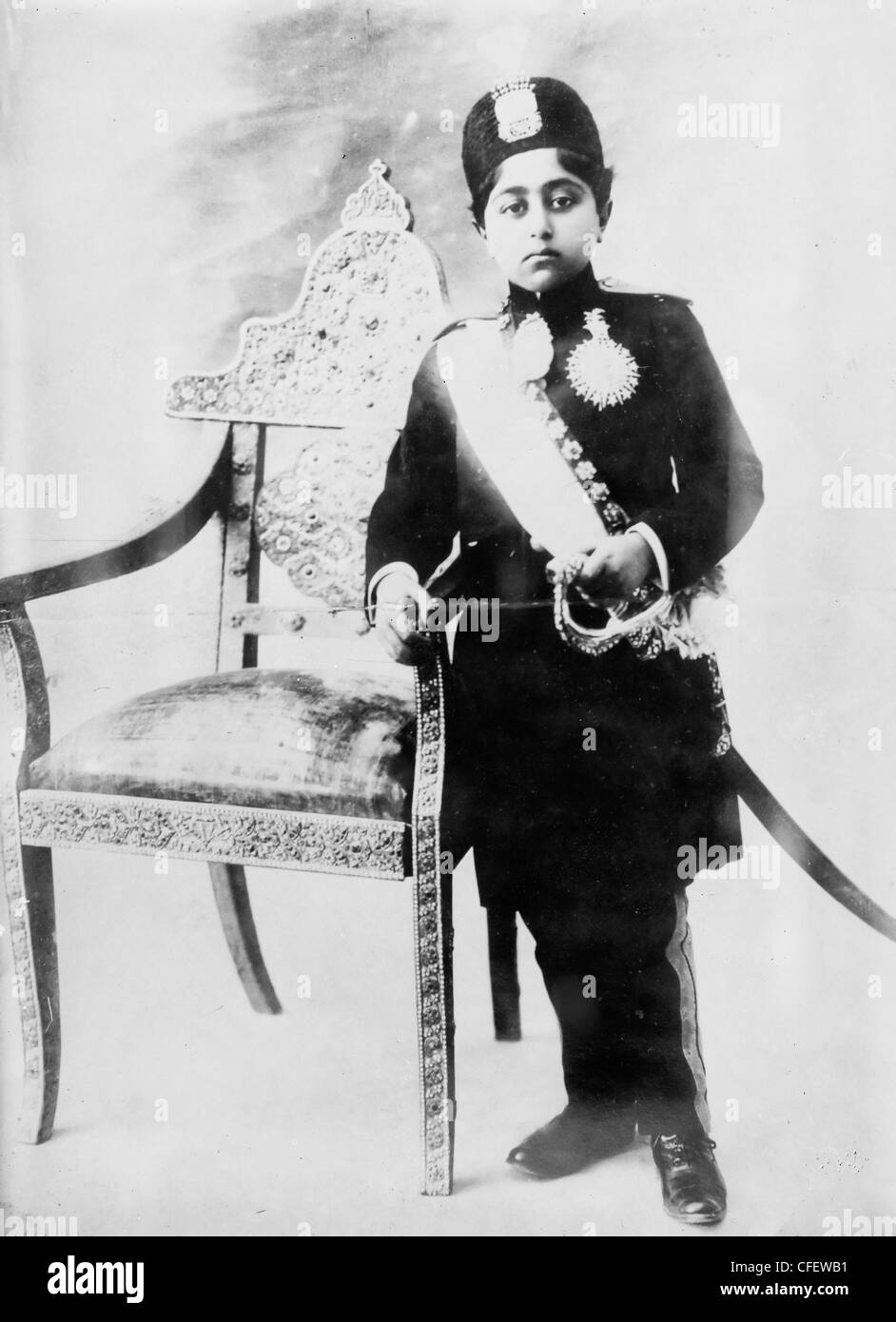 Ahmad Shah Qajar - Shah of Persia (Iran) from 1909 to 1925 and the last of the Qajar dynasty, circa 1910 Stock Photohttps://www.alamy.com/image-license-details/?v=1https://www.alamy.com/stock-photo-ahmad-shah-qajar-shah-of-persia-iran-from-1909-to-1925-and-the-last-43967813.html
Ahmad Shah Qajar - Shah of Persia (Iran) from 1909 to 1925 and the last of the Qajar dynasty, circa 1910 Stock Photohttps://www.alamy.com/image-license-details/?v=1https://www.alamy.com/stock-photo-ahmad-shah-qajar-shah-of-persia-iran-from-1909-to-1925-and-the-last-43967813.htmlRMCFEWB1–Ahmad Shah Qajar - Shah of Persia (Iran) from 1909 to 1925 and the last of the Qajar dynasty, circa 1910
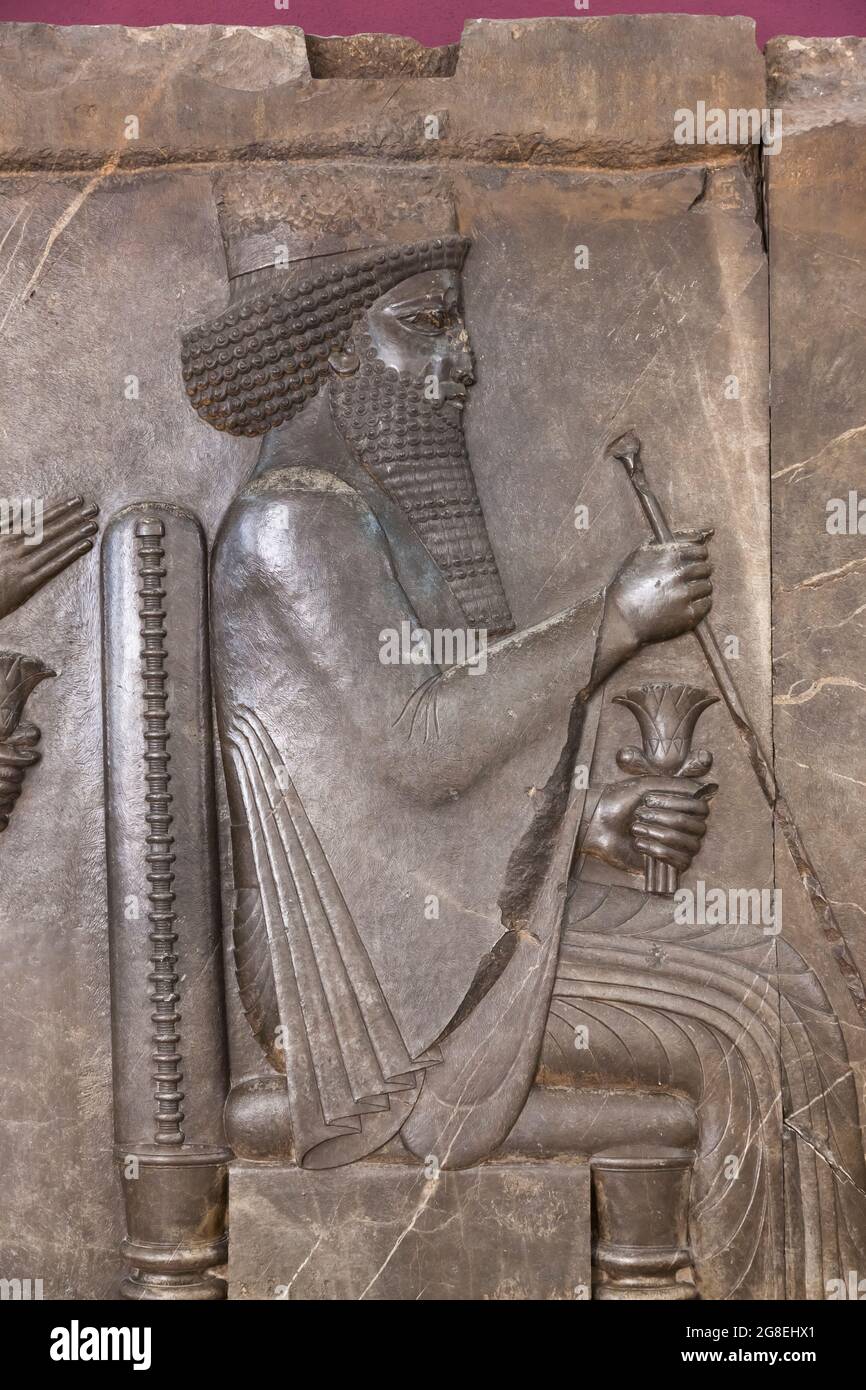 Partial of The audience hall scene, from Persepolis(Treasury palace), National Museum of Iran, Tehran, Iran, Persia, Western Asia, Asia Stock Photohttps://www.alamy.com/image-license-details/?v=1https://www.alamy.com/partial-of-the-audience-hall-scene-from-persepolistreasury-palace-national-museum-of-iran-tehran-iran-persia-western-asia-asia-image435497833.html
Partial of The audience hall scene, from Persepolis(Treasury palace), National Museum of Iran, Tehran, Iran, Persia, Western Asia, Asia Stock Photohttps://www.alamy.com/image-license-details/?v=1https://www.alamy.com/partial-of-the-audience-hall-scene-from-persepolistreasury-palace-national-museum-of-iran-tehran-iran-persia-western-asia-asia-image435497833.htmlRM2G8EHX1–Partial of The audience hall scene, from Persepolis(Treasury palace), National Museum of Iran, Tehran, Iran, Persia, Western Asia, Asia
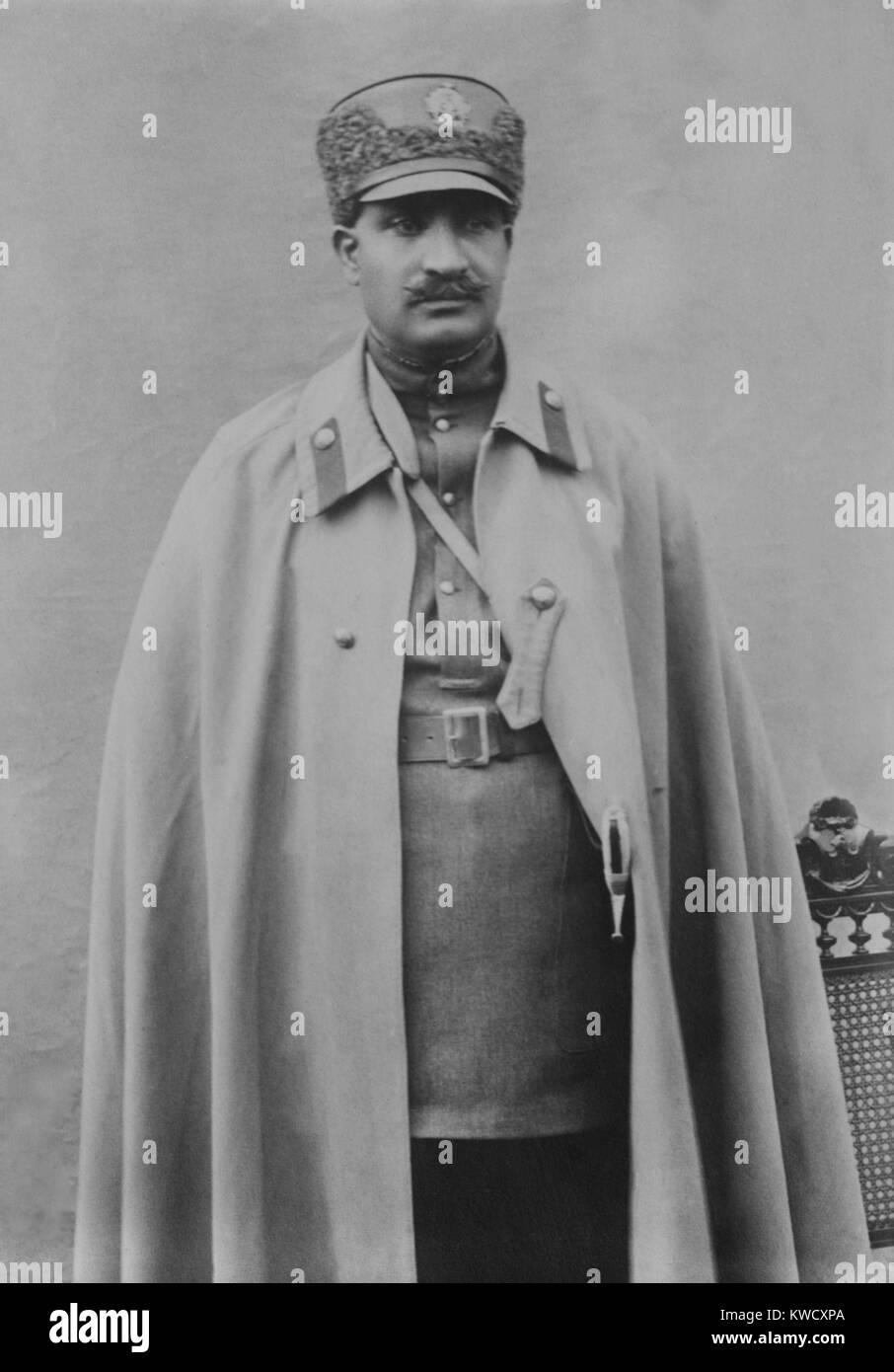 Reza Shah Pahlavi was elected monarch by Irans Constituent Assembly in 1925. He rose to power as a military strong man in the complex Post World War 1 period of tension between Iran and Bolshevik Russia (BSLOC 2017 1 119) Stock Photohttps://www.alamy.com/image-license-details/?v=1https://www.alamy.com/stock-photo-reza-shah-pahlavi-was-elected-monarch-by-irans-constituent-assembly-170544146.html
Reza Shah Pahlavi was elected monarch by Irans Constituent Assembly in 1925. He rose to power as a military strong man in the complex Post World War 1 period of tension between Iran and Bolshevik Russia (BSLOC 2017 1 119) Stock Photohttps://www.alamy.com/image-license-details/?v=1https://www.alamy.com/stock-photo-reza-shah-pahlavi-was-elected-monarch-by-irans-constituent-assembly-170544146.htmlRMKWCXPA–Reza Shah Pahlavi was elected monarch by Irans Constituent Assembly in 1925. He rose to power as a military strong man in the complex Post World War 1 period of tension between Iran and Bolshevik Russia (BSLOC 2017 1 119)
 Nasser al-Din Shah of persia 1831 1896 King assassinated Mohammad Shah Qajar Stock Photohttps://www.alamy.com/image-license-details/?v=1https://www.alamy.com/stock-photo-nasser-al-din-shah-of-persia-1831-1896-king-assassinated-mohammad-22629213.html
Nasser al-Din Shah of persia 1831 1896 King assassinated Mohammad Shah Qajar Stock Photohttps://www.alamy.com/image-license-details/?v=1https://www.alamy.com/stock-photo-nasser-al-din-shah-of-persia-1831-1896-king-assassinated-mohammad-22629213.htmlRMB8PRP5–Nasser al-Din Shah of persia 1831 1896 King assassinated Mohammad Shah Qajar
 The first reigning monarch to visit Russia since the revolution , the Shah of Persia accompanied by his Queen , is at the moment on a State visit to Russia . Seen here the Shah and Queen Soraya dine beneath a portrait of Lenin at the Captains table aboard the Black Sea steamer Mikhail Kutuzov , enroute from Sukhumi to Sochi , both Black Sea resorts .9 July 1956 Stock Photohttps://www.alamy.com/image-license-details/?v=1https://www.alamy.com/the-first-reigning-monarch-to-visit-russia-since-the-revolution-the-shah-of-persia-accompanied-by-his-queen-is-at-the-moment-on-a-state-visit-to-russia-seen-here-the-shah-and-queen-soraya-dine-beneath-a-portrait-of-lenin-at-the-captains-table-aboard-the-black-sea-steamer-mikhail-kutuzov-enroute-from-sukhumi-to-sochi-both-black-sea-resorts-9-july-1956-image623315270.html
The first reigning monarch to visit Russia since the revolution , the Shah of Persia accompanied by his Queen , is at the moment on a State visit to Russia . Seen here the Shah and Queen Soraya dine beneath a portrait of Lenin at the Captains table aboard the Black Sea steamer Mikhail Kutuzov , enroute from Sukhumi to Sochi , both Black Sea resorts .9 July 1956 Stock Photohttps://www.alamy.com/image-license-details/?v=1https://www.alamy.com/the-first-reigning-monarch-to-visit-russia-since-the-revolution-the-shah-of-persia-accompanied-by-his-queen-is-at-the-moment-on-a-state-visit-to-russia-seen-here-the-shah-and-queen-soraya-dine-beneath-a-portrait-of-lenin-at-the-captains-table-aboard-the-black-sea-steamer-mikhail-kutuzov-enroute-from-sukhumi-to-sochi-both-black-sea-resorts-9-july-1956-image623315270.htmlRM2Y62CYJ–The first reigning monarch to visit Russia since the revolution , the Shah of Persia accompanied by his Queen , is at the moment on a State visit to Russia . Seen here the Shah and Queen Soraya dine beneath a portrait of Lenin at the Captains table aboard the Black Sea steamer Mikhail Kutuzov , enroute from Sukhumi to Sochi , both Black Sea resorts .9 July 1956
 Khosrau II of Persia with cross and dove, on his mechanical throne. Artist: Unknown Stock Photohttps://www.alamy.com/image-license-details/?v=1https://www.alamy.com/khosrau-ii-of-persia-with-cross-and-dove-on-his-mechanical-throne-artist-unknown-image262754035.html
Khosrau II of Persia with cross and dove, on his mechanical throne. Artist: Unknown Stock Photohttps://www.alamy.com/image-license-details/?v=1https://www.alamy.com/khosrau-ii-of-persia-with-cross-and-dove-on-his-mechanical-throne-artist-unknown-image262754035.htmlRMW7DDCK–Khosrau II of Persia with cross and dove, on his mechanical throne. Artist: Unknown
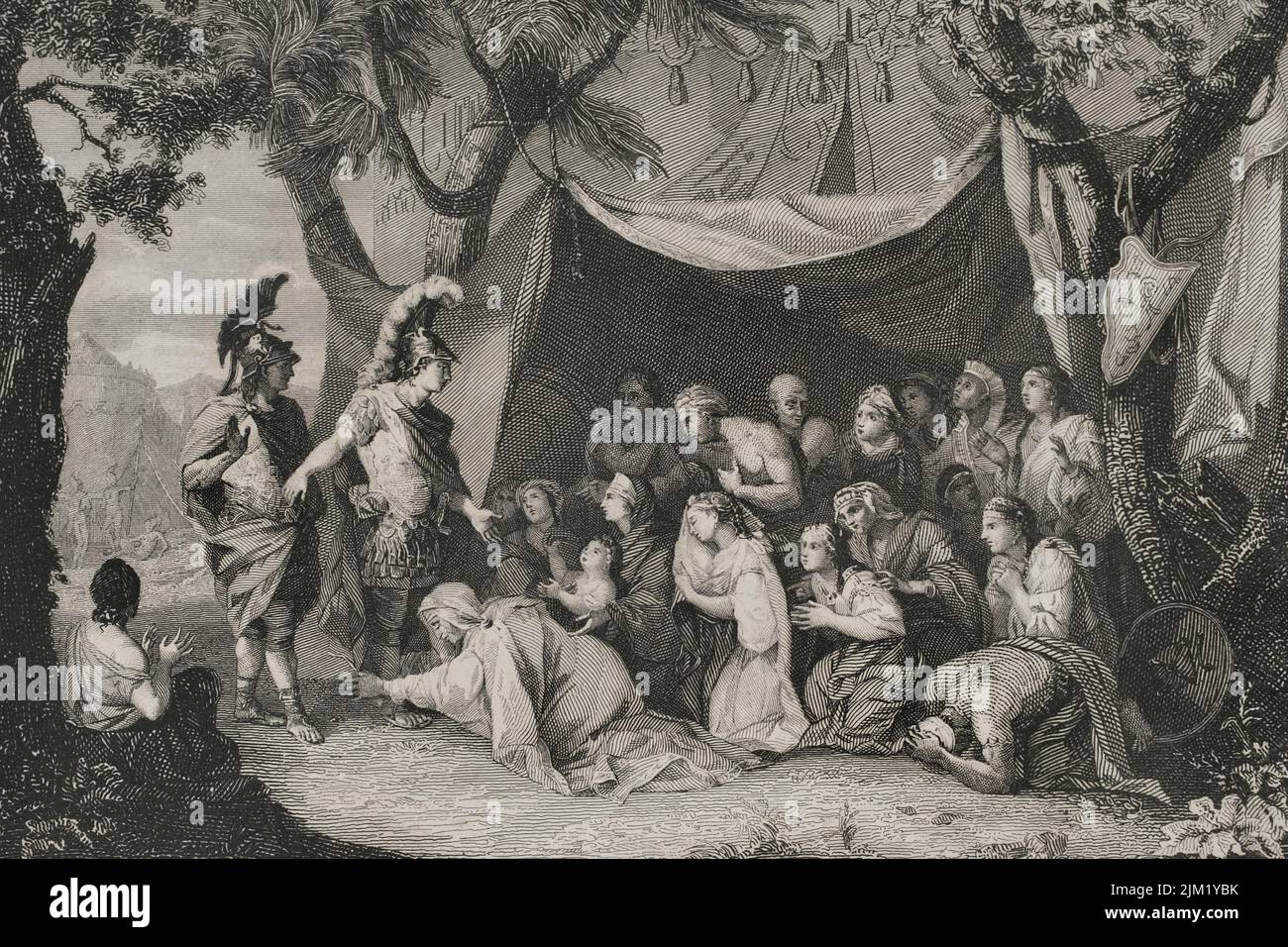 Alexander visits the family of Darius. Alexander the Great visits the Persian royal family after the defeat of Darius III at the Battle of Issus. 4th century BC. Engraving. 'Historia Universal', by César Cantú. Volume I, 1854. Stock Photohttps://www.alamy.com/image-license-details/?v=1https://www.alamy.com/alexander-visits-the-family-of-darius-alexander-the-great-visits-the-persian-royal-family-after-the-defeat-of-darius-iii-at-the-battle-of-issus-4th-century-bc-engraving-historia-universal-by-csar-cant-volume-i-1854-image477016503.html
Alexander visits the family of Darius. Alexander the Great visits the Persian royal family after the defeat of Darius III at the Battle of Issus. 4th century BC. Engraving. 'Historia Universal', by César Cantú. Volume I, 1854. Stock Photohttps://www.alamy.com/image-license-details/?v=1https://www.alamy.com/alexander-visits-the-family-of-darius-alexander-the-great-visits-the-persian-royal-family-after-the-defeat-of-darius-iii-at-the-battle-of-issus-4th-century-bc-engraving-historia-universal-by-csar-cant-volume-i-1854-image477016503.htmlRM2JM1YBK–Alexander visits the family of Darius. Alexander the Great visits the Persian royal family after the defeat of Darius III at the Battle of Issus. 4th century BC. Engraving. 'Historia Universal', by César Cantú. Volume I, 1854.
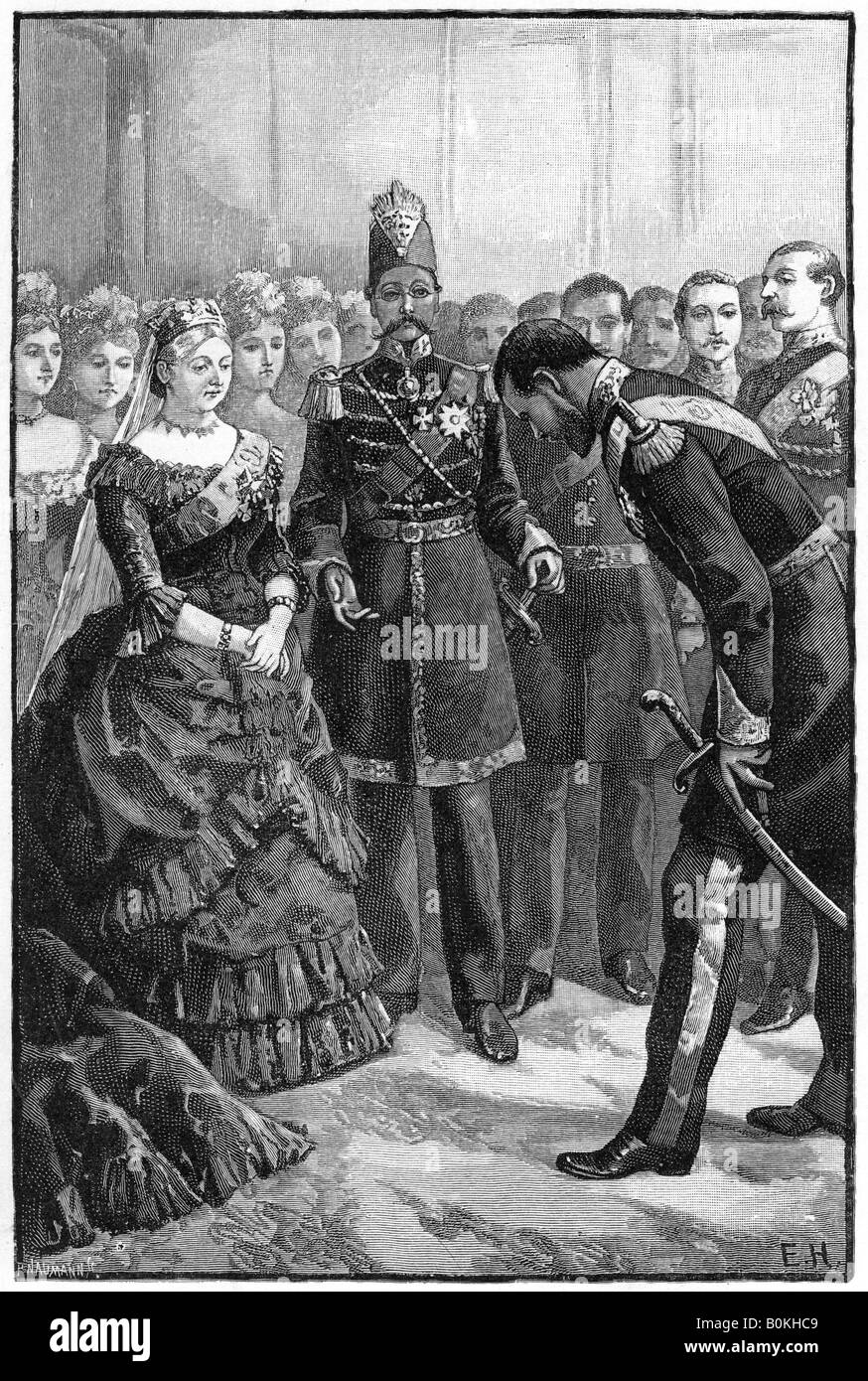 The Shah of Persia presenting his suit to Queen Victoria at Windsor, mid-late 19th century. Artist: Unknown Stock Photohttps://www.alamy.com/image-license-details/?v=1https://www.alamy.com/stock-photo-the-shah-of-persia-presenting-his-suit-to-queen-victoria-at-windsor-17641129.html
The Shah of Persia presenting his suit to Queen Victoria at Windsor, mid-late 19th century. Artist: Unknown Stock Photohttps://www.alamy.com/image-license-details/?v=1https://www.alamy.com/stock-photo-the-shah-of-persia-presenting-his-suit-to-queen-victoria-at-windsor-17641129.htmlRMB0KHC9–The Shah of Persia presenting his suit to Queen Victoria at Windsor, mid-late 19th century. Artist: Unknown
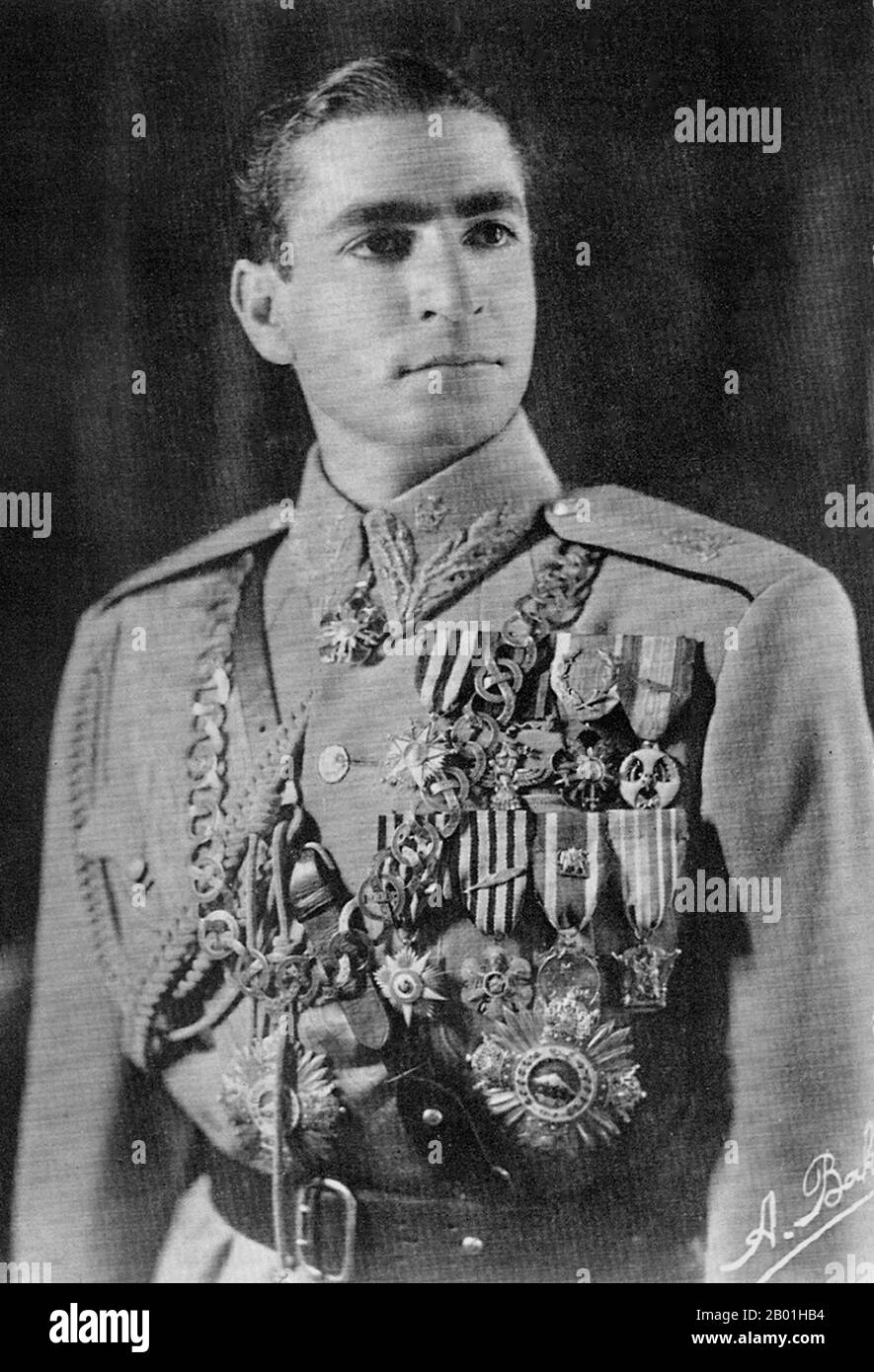 Iran/Persia: Mohammad Rezā Shāh Pahlavi (26 October 1919 - 27 July 1980), Shah of Iran, Shah of Persia (r. 1941-1979), at the age of 21 soon after assuming the throne, 1941. Mohammad Rezā Shāh Pahlavi ruled Iran from 16 September 1941 until his overthrow by the Iranian Revolution on 11 February 1979. He was the second and last monarch of the House of Pahlavi of the Iranian monarchy. He came to power during World War II after an Anglo-Soviet invasion forced the abdication of his father Reza Shah. During his reign, the Iranian oil industry was nationalised under Prime Minister Mosaddegh. Stock Photohttps://www.alamy.com/image-license-details/?v=1https://www.alamy.com/iranpersia-mohammad-rez-shh-pahlavi-26-october-1919-27-july-1980-shah-of-iran-shah-of-persia-r-1941-1979-at-the-age-of-21-soon-after-assuming-the-throne-1941-mohammad-rez-shh-pahlavi-ruled-iran-from-16-september-1941-until-his-overthrow-by-the-iranian-revolution-on-11-february-1979-he-was-the-second-and-last-monarch-of-the-house-of-pahlavi-of-the-iranian-monarchy-he-came-to-power-during-world-war-ii-after-an-anglo-soviet-invasion-forced-the-abdication-of-his-father-reza-shah-during-his-reign-the-iranian-oil-industry-was-nationalised-under-prime-minister-mosaddegh-image344242952.html
Iran/Persia: Mohammad Rezā Shāh Pahlavi (26 October 1919 - 27 July 1980), Shah of Iran, Shah of Persia (r. 1941-1979), at the age of 21 soon after assuming the throne, 1941. Mohammad Rezā Shāh Pahlavi ruled Iran from 16 September 1941 until his overthrow by the Iranian Revolution on 11 February 1979. He was the second and last monarch of the House of Pahlavi of the Iranian monarchy. He came to power during World War II after an Anglo-Soviet invasion forced the abdication of his father Reza Shah. During his reign, the Iranian oil industry was nationalised under Prime Minister Mosaddegh. Stock Photohttps://www.alamy.com/image-license-details/?v=1https://www.alamy.com/iranpersia-mohammad-rez-shh-pahlavi-26-october-1919-27-july-1980-shah-of-iran-shah-of-persia-r-1941-1979-at-the-age-of-21-soon-after-assuming-the-throne-1941-mohammad-rez-shh-pahlavi-ruled-iran-from-16-september-1941-until-his-overthrow-by-the-iranian-revolution-on-11-february-1979-he-was-the-second-and-last-monarch-of-the-house-of-pahlavi-of-the-iranian-monarchy-he-came-to-power-during-world-war-ii-after-an-anglo-soviet-invasion-forced-the-abdication-of-his-father-reza-shah-during-his-reign-the-iranian-oil-industry-was-nationalised-under-prime-minister-mosaddegh-image344242952.htmlRM2B01HB4–Iran/Persia: Mohammad Rezā Shāh Pahlavi (26 October 1919 - 27 July 1980), Shah of Iran, Shah of Persia (r. 1941-1979), at the age of 21 soon after assuming the throne, 1941. Mohammad Rezā Shāh Pahlavi ruled Iran from 16 September 1941 until his overthrow by the Iranian Revolution on 11 February 1979. He was the second and last monarch of the House of Pahlavi of the Iranian monarchy. He came to power during World War II after an Anglo-Soviet invasion forced the abdication of his father Reza Shah. During his reign, the Iranian oil industry was nationalised under Prime Minister Mosaddegh.
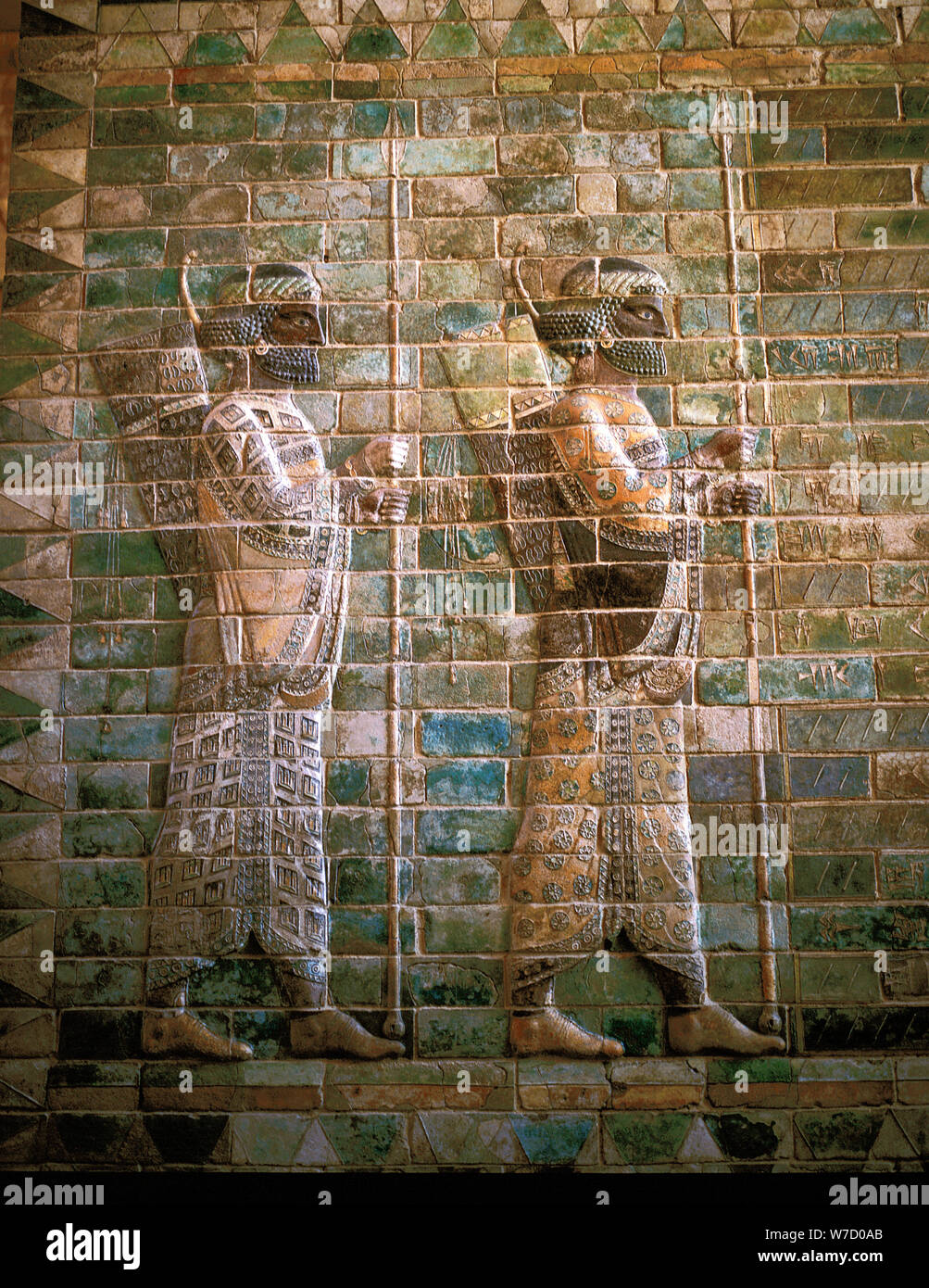 Glazed brick relief of archers from the Royal Guard, Palace of Darius I, Susa, Persian, 522-486 BC. Artist: Unknown Stock Photohttps://www.alamy.com/image-license-details/?v=1https://www.alamy.com/glazed-brick-relief-of-archers-from-the-royal-guard-palace-of-darius-i-susa-persian-522-486-bc-artist-unknown-image262743779.html
Glazed brick relief of archers from the Royal Guard, Palace of Darius I, Susa, Persian, 522-486 BC. Artist: Unknown Stock Photohttps://www.alamy.com/image-license-details/?v=1https://www.alamy.com/glazed-brick-relief-of-archers-from-the-royal-guard-palace-of-darius-i-susa-persian-522-486-bc-artist-unknown-image262743779.htmlRMW7D0AB–Glazed brick relief of archers from the Royal Guard, Palace of Darius I, Susa, Persian, 522-486 BC. Artist: Unknown
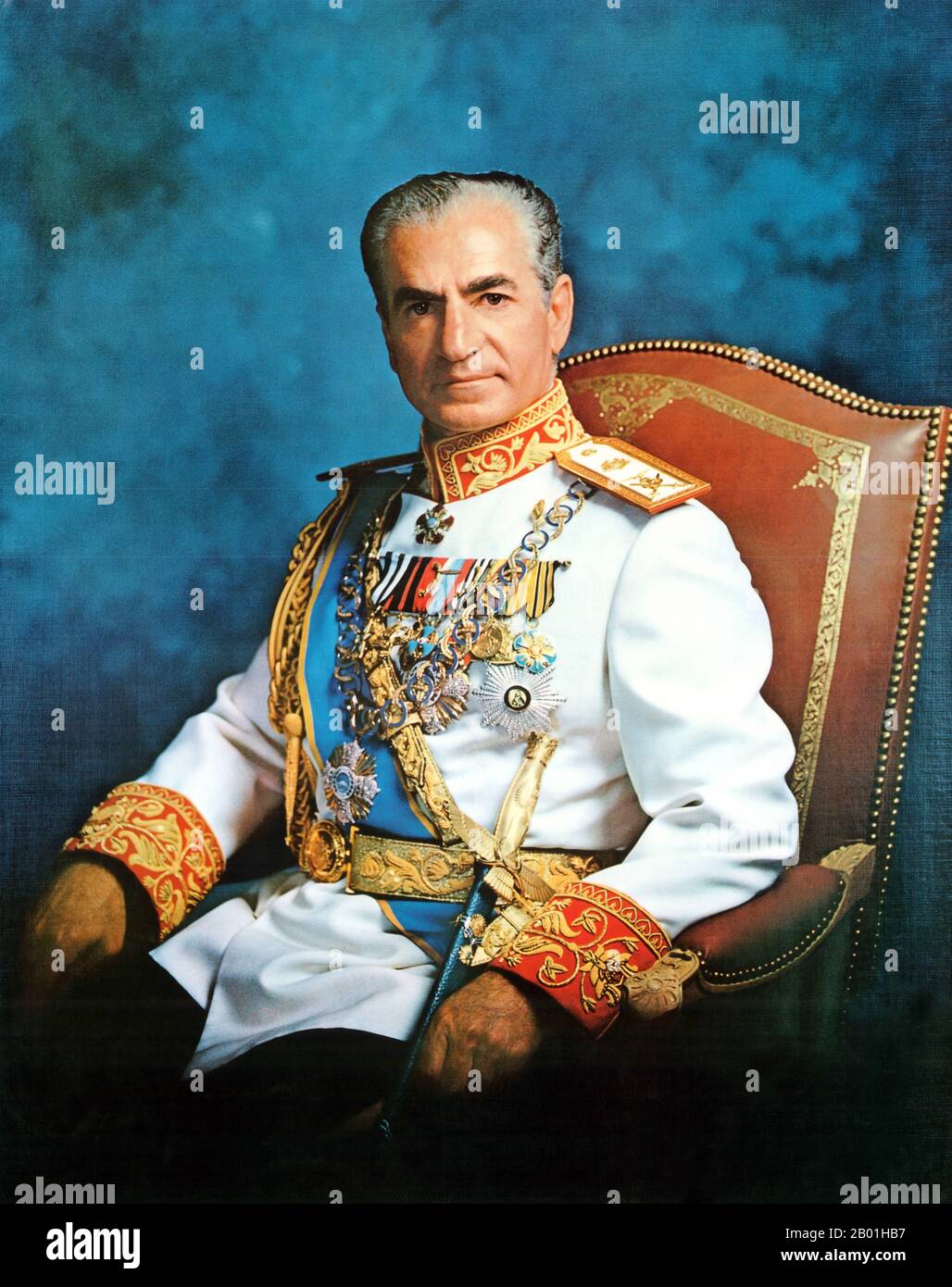 Iran/Persia: Official portrait of Mohammad Rezā Shāh Pahlavi (26 October 1919 – 27 July 1980), Shah of Iran, Shah of Persia (r. 1941-1979), 1973. Mohammad Rezā Shāh Pahlavi ruled Iran from 16 September 1941 until his overthrow by the Iranian Revolution on 11 February 1979. He was the second and last monarch of the House of Pahlavi of the Iranian monarchy. Mohammad Reza Shah came to power during World War II after an Anglo-Soviet invasion forced the abdication of his father Reza Shah. During his reign, the Iranian oil industry was nationalised under Prime Minister Mohammad Mosaddegh. Stock Photohttps://www.alamy.com/image-license-details/?v=1https://www.alamy.com/iranpersia-official-portrait-of-mohammad-rez-shh-pahlavi-26-october-1919-27-july-1980-shah-of-iran-shah-of-persia-r-1941-1979-1973-mohammad-rez-shh-pahlavi-ruled-iran-from-16-september-1941-until-his-overthrow-by-the-iranian-revolution-on-11-february-1979-he-was-the-second-and-last-monarch-of-the-house-of-pahlavi-of-the-iranian-monarchy-mohammad-reza-shah-came-to-power-during-world-war-ii-after-an-anglo-soviet-invasion-forced-the-abdication-of-his-father-reza-shah-during-his-reign-the-iranian-oil-industry-was-nationalised-under-prime-minister-mohammad-mosaddegh-image344242955.html
Iran/Persia: Official portrait of Mohammad Rezā Shāh Pahlavi (26 October 1919 – 27 July 1980), Shah of Iran, Shah of Persia (r. 1941-1979), 1973. Mohammad Rezā Shāh Pahlavi ruled Iran from 16 September 1941 until his overthrow by the Iranian Revolution on 11 February 1979. He was the second and last monarch of the House of Pahlavi of the Iranian monarchy. Mohammad Reza Shah came to power during World War II after an Anglo-Soviet invasion forced the abdication of his father Reza Shah. During his reign, the Iranian oil industry was nationalised under Prime Minister Mohammad Mosaddegh. Stock Photohttps://www.alamy.com/image-license-details/?v=1https://www.alamy.com/iranpersia-official-portrait-of-mohammad-rez-shh-pahlavi-26-october-1919-27-july-1980-shah-of-iran-shah-of-persia-r-1941-1979-1973-mohammad-rez-shh-pahlavi-ruled-iran-from-16-september-1941-until-his-overthrow-by-the-iranian-revolution-on-11-february-1979-he-was-the-second-and-last-monarch-of-the-house-of-pahlavi-of-the-iranian-monarchy-mohammad-reza-shah-came-to-power-during-world-war-ii-after-an-anglo-soviet-invasion-forced-the-abdication-of-his-father-reza-shah-during-his-reign-the-iranian-oil-industry-was-nationalised-under-prime-minister-mohammad-mosaddegh-image344242955.htmlRM2B01HB7–Iran/Persia: Official portrait of Mohammad Rezā Shāh Pahlavi (26 October 1919 – 27 July 1980), Shah of Iran, Shah of Persia (r. 1941-1979), 1973. Mohammad Rezā Shāh Pahlavi ruled Iran from 16 September 1941 until his overthrow by the Iranian Revolution on 11 February 1979. He was the second and last monarch of the House of Pahlavi of the Iranian monarchy. Mohammad Reza Shah came to power during World War II after an Anglo-Soviet invasion forced the abdication of his father Reza Shah. During his reign, the Iranian oil industry was nationalised under Prime Minister Mohammad Mosaddegh.
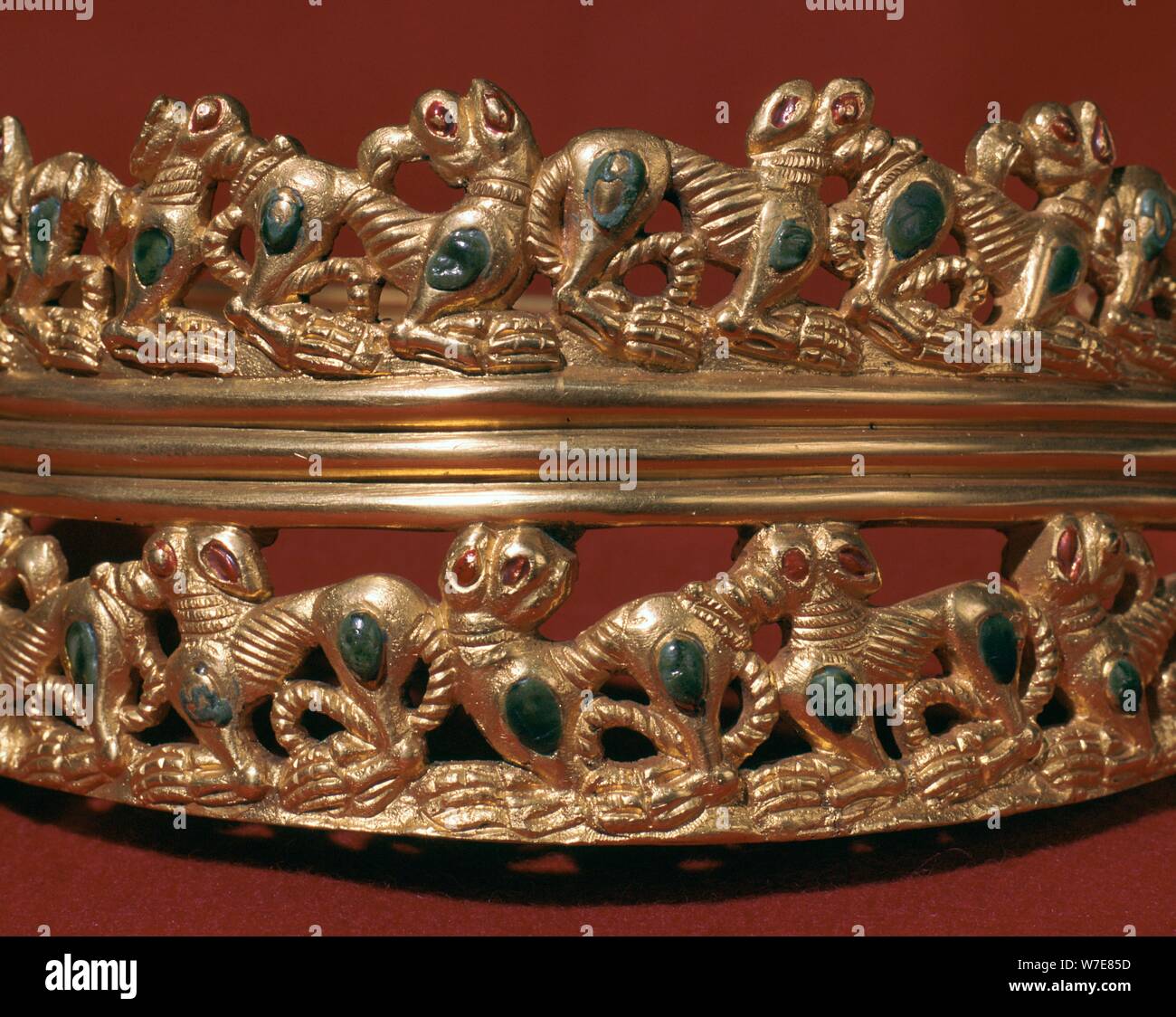 Detail of gold Sarmatian diadem. Artist: Unknown Stock Photohttps://www.alamy.com/image-license-details/?v=1https://www.alamy.com/detail-of-gold-sarmatian-diadem-artist-unknown-image262771865.html
Detail of gold Sarmatian diadem. Artist: Unknown Stock Photohttps://www.alamy.com/image-license-details/?v=1https://www.alamy.com/detail-of-gold-sarmatian-diadem-artist-unknown-image262771865.htmlRMW7E85D–Detail of gold Sarmatian diadem. Artist: Unknown
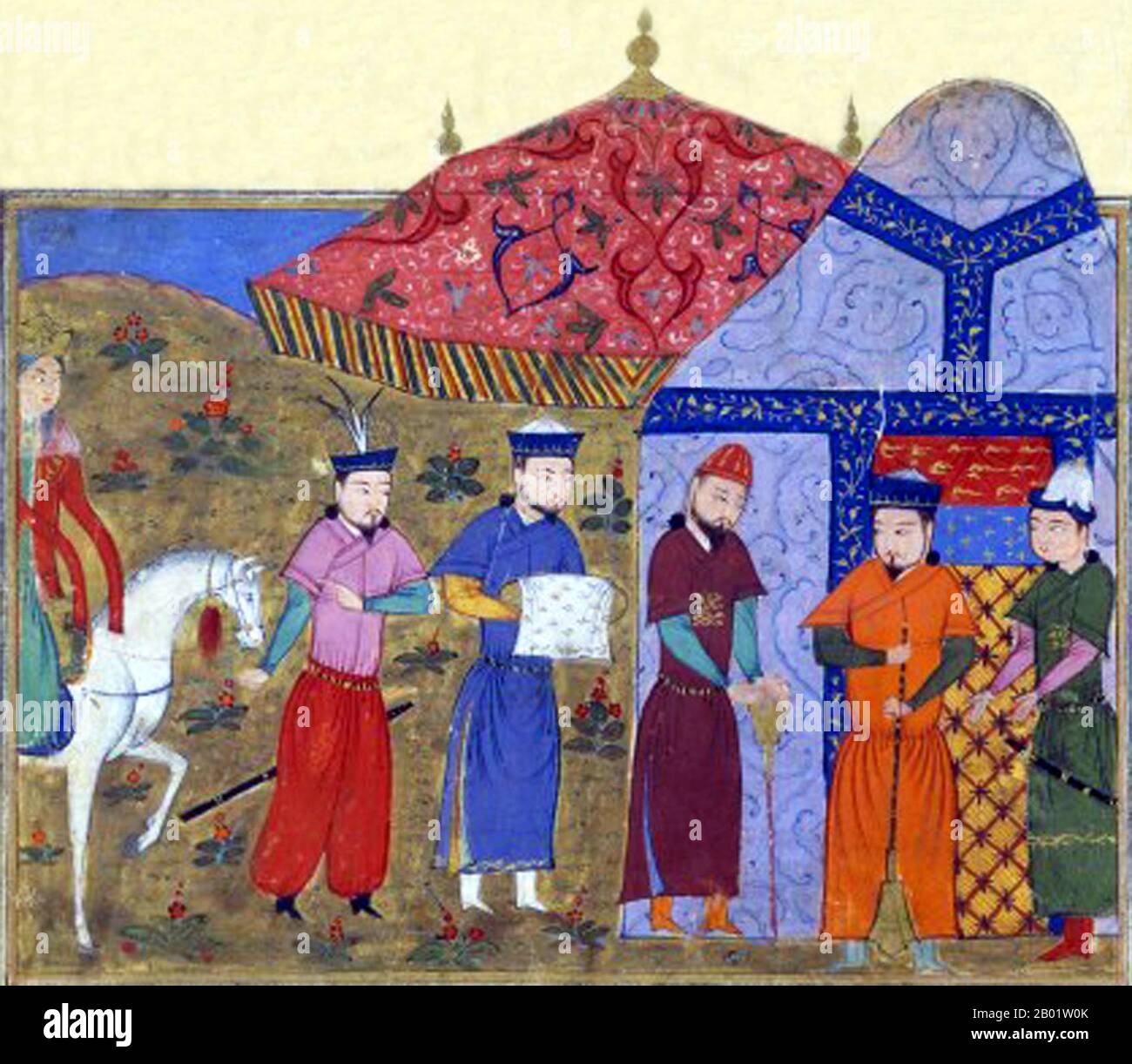 Iran/Persia/Mongolia: Genghis Khan and the Chinese Ambassadors. Miniature painting from Rashid al-Din's Jami al-Tawarikh, c. 1305. The Jāmi' al-tawārīkh ('Compendium of Chronicles') or Universal History is an Iranian work of literature and history written by Rashid al-Din Hamadani at the start of the 14th century. Stock Photohttps://www.alamy.com/image-license-details/?v=1https://www.alamy.com/iranpersiamongolia-genghis-khan-and-the-chinese-ambassadors-miniature-painting-from-rashid-al-dins-jami-al-tawarikh-c-1305-the-jmi-al-tawrkh-compendium-of-chronicles-or-universal-history-is-an-iranian-work-of-literature-and-history-written-by-rashid-al-din-hamadani-at-the-start-of-the-14th-century-image344248931.html
Iran/Persia/Mongolia: Genghis Khan and the Chinese Ambassadors. Miniature painting from Rashid al-Din's Jami al-Tawarikh, c. 1305. The Jāmi' al-tawārīkh ('Compendium of Chronicles') or Universal History is an Iranian work of literature and history written by Rashid al-Din Hamadani at the start of the 14th century. Stock Photohttps://www.alamy.com/image-license-details/?v=1https://www.alamy.com/iranpersiamongolia-genghis-khan-and-the-chinese-ambassadors-miniature-painting-from-rashid-al-dins-jami-al-tawarikh-c-1305-the-jmi-al-tawrkh-compendium-of-chronicles-or-universal-history-is-an-iranian-work-of-literature-and-history-written-by-rashid-al-din-hamadani-at-the-start-of-the-14th-century-image344248931.htmlRM2B01W0K–Iran/Persia/Mongolia: Genghis Khan and the Chinese Ambassadors. Miniature painting from Rashid al-Din's Jami al-Tawarikh, c. 1305. The Jāmi' al-tawārīkh ('Compendium of Chronicles') or Universal History is an Iranian work of literature and history written by Rashid al-Din Hamadani at the start of the 14th century.
 Silver tetradrachm of Mithradates I, Parthian, from Iran, 171-138 BC. Artist: Unknown Stock Photohttps://www.alamy.com/image-license-details/?v=1https://www.alamy.com/silver-tetradrachm-of-mithradates-i-parthian-from-iran-171-138-bc-artist-unknown-image262771432.html
Silver tetradrachm of Mithradates I, Parthian, from Iran, 171-138 BC. Artist: Unknown Stock Photohttps://www.alamy.com/image-license-details/?v=1https://www.alamy.com/silver-tetradrachm-of-mithradates-i-parthian-from-iran-171-138-bc-artist-unknown-image262771432.htmlRMW7E7J0–Silver tetradrachm of Mithradates I, Parthian, from Iran, 171-138 BC. Artist: Unknown
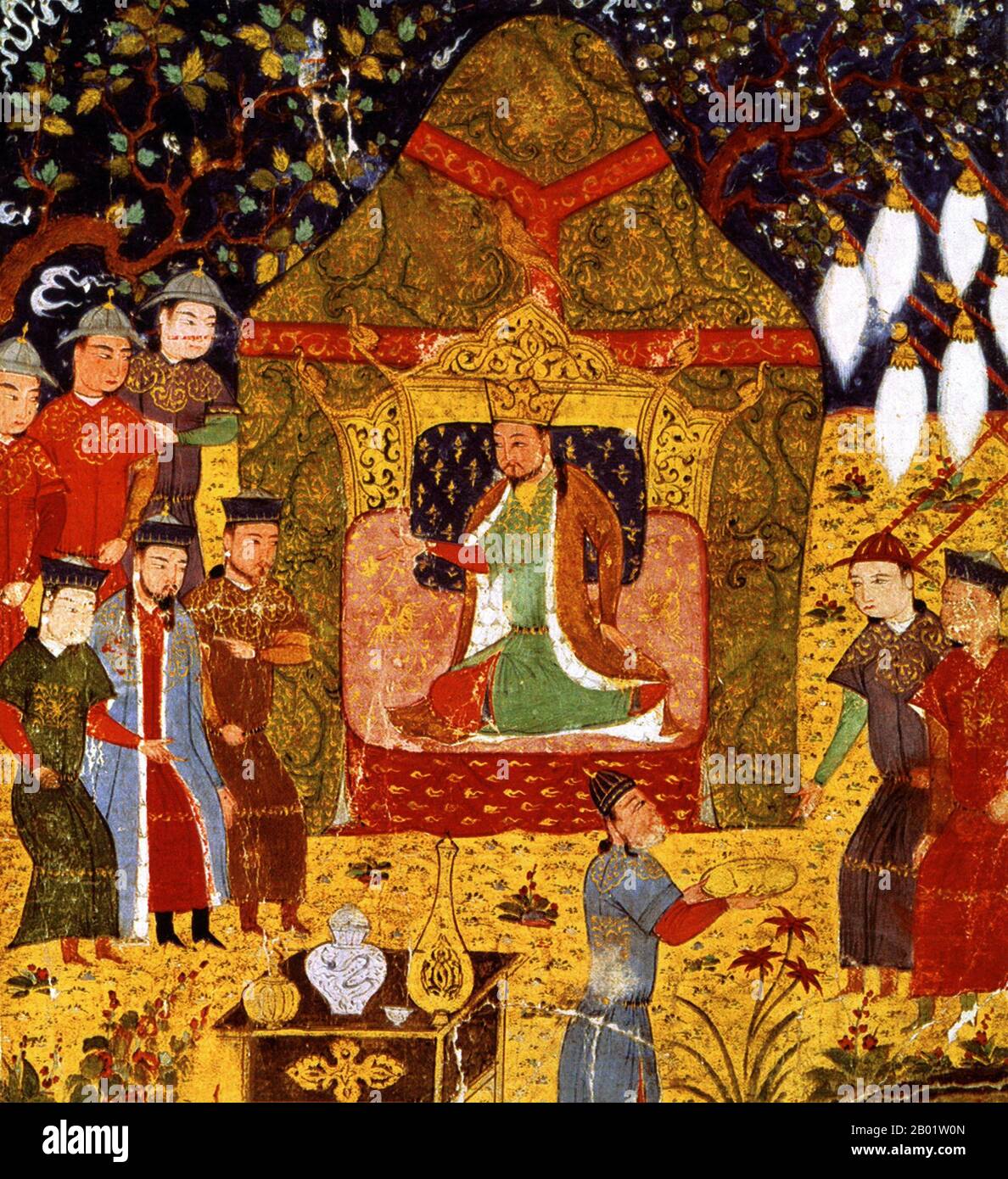 Iran/Persia/Mongolia: Genghis Khan ascending the throne in the Yeke Quriltai near the source region of the Onon river, 1206. Miniature painting from Rashid al-Din, Jami al-Tawarikh, 1305 The Jāmiʿ al-tawārīkh ('Compendium of Chronicles') or Universal History is an Iranian work of literature and history written by Rashid al-Din Hamadani at the start of the 14th century. Stock Photohttps://www.alamy.com/image-license-details/?v=1https://www.alamy.com/iranpersiamongolia-genghis-khan-ascending-the-throne-in-the-yeke-quriltai-near-the-source-region-of-the-onon-river-1206-miniature-painting-from-rashid-al-din-jami-al-tawarikh-1305-the-jmi-al-tawrkh-compendium-of-chronicles-or-universal-history-is-an-iranian-work-of-literature-and-history-written-by-rashid-al-din-hamadani-at-the-start-of-the-14th-century-image344248933.html
Iran/Persia/Mongolia: Genghis Khan ascending the throne in the Yeke Quriltai near the source region of the Onon river, 1206. Miniature painting from Rashid al-Din, Jami al-Tawarikh, 1305 The Jāmiʿ al-tawārīkh ('Compendium of Chronicles') or Universal History is an Iranian work of literature and history written by Rashid al-Din Hamadani at the start of the 14th century. Stock Photohttps://www.alamy.com/image-license-details/?v=1https://www.alamy.com/iranpersiamongolia-genghis-khan-ascending-the-throne-in-the-yeke-quriltai-near-the-source-region-of-the-onon-river-1206-miniature-painting-from-rashid-al-din-jami-al-tawarikh-1305-the-jmi-al-tawrkh-compendium-of-chronicles-or-universal-history-is-an-iranian-work-of-literature-and-history-written-by-rashid-al-din-hamadani-at-the-start-of-the-14th-century-image344248933.htmlRM2B01W0N–Iran/Persia/Mongolia: Genghis Khan ascending the throne in the Yeke Quriltai near the source region of the Onon river, 1206. Miniature painting from Rashid al-Din, Jami al-Tawarikh, 1305 The Jāmiʿ al-tawārīkh ('Compendium of Chronicles') or Universal History is an Iranian work of literature and history written by Rashid al-Din Hamadani at the start of the 14th century.
 Alexander the Great, (356-323 BC), 1425. Artist: Unknown Stock Photohttps://www.alamy.com/image-license-details/?v=1https://www.alamy.com/alexander-the-great-356-323-bc-1425-artist-unknown-image262737631.html
Alexander the Great, (356-323 BC), 1425. Artist: Unknown Stock Photohttps://www.alamy.com/image-license-details/?v=1https://www.alamy.com/alexander-the-great-356-323-bc-1425-artist-unknown-image262737631.htmlRMW7CMER–Alexander the Great, (356-323 BC), 1425. Artist: Unknown
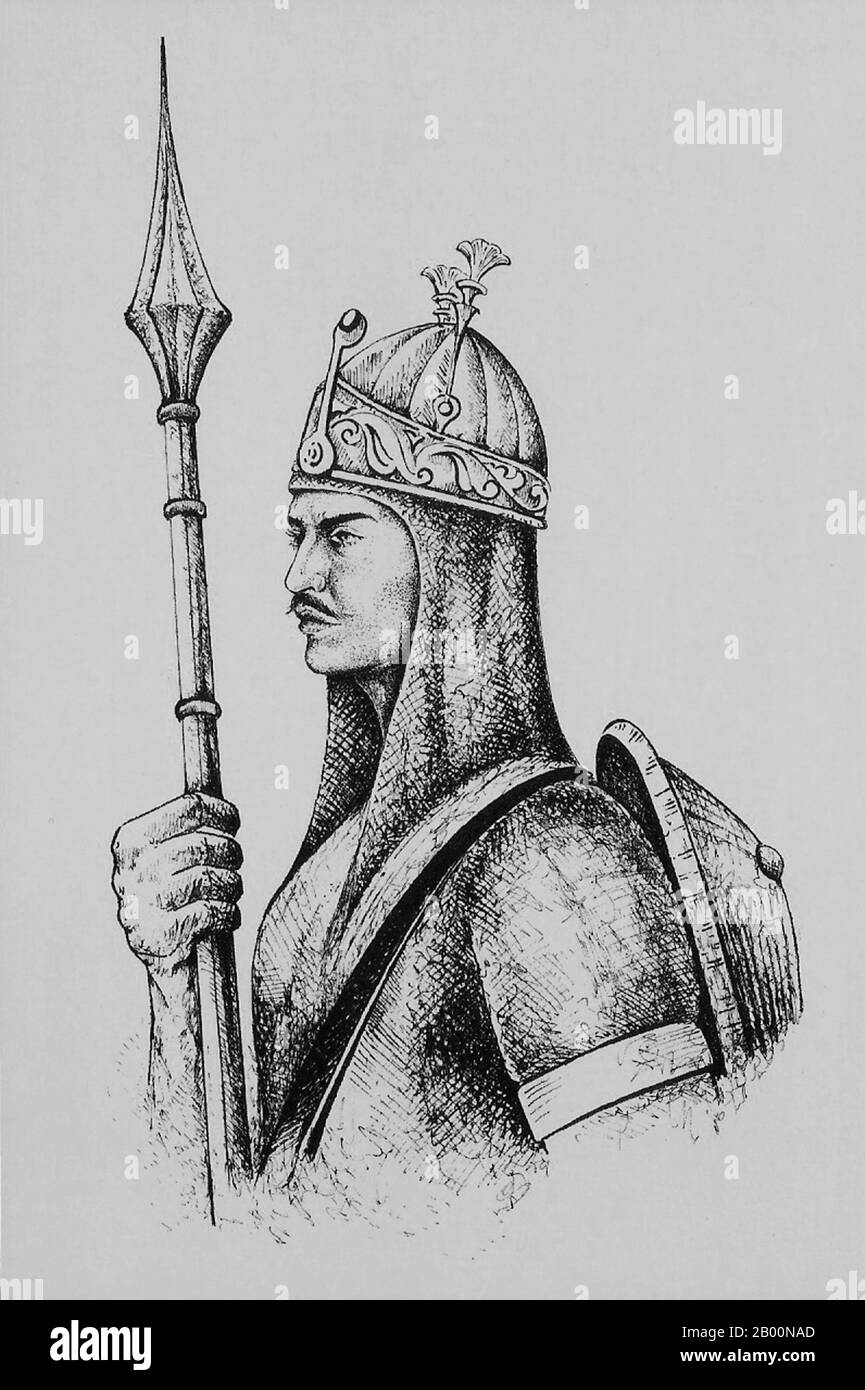 Afghanistan: Shah Mahmud Hotaki (1697-1725) was an Afghan ruler of the Hotaki dynasty. Shah Mahmud Hotaki (1697-1725) was an Afghan ruler of the Hotaki dynasty who defeated and overthrew the Safavid dynasty to become the king of Persia from 1722 until his death in 1725. He was the eldest son of Mir Wais Hotak, the chief of the Ghilzai-Pashtun tribe of Afghanistan, who had made the Kandahar region independent from Persian rule in 1709. Stock Photohttps://www.alamy.com/image-license-details/?v=1https://www.alamy.com/afghanistan-shah-mahmud-hotaki-1697-1725-was-an-afghan-ruler-of-the-hotaki-dynasty-shah-mahmud-hotaki-1697-1725-was-an-afghan-ruler-of-the-hotaki-dynasty-who-defeated-and-overthrew-the-safavid-dynasty-to-become-the-king-of-persia-from-1722-until-his-death-in-1725-he-was-the-eldest-son-of-mir-wais-hotak-the-chief-of-the-ghilzai-pashtun-tribe-of-afghanistan-who-had-made-the-kandahar-region-independent-from-persian-rule-in-1709-image344224117.html
Afghanistan: Shah Mahmud Hotaki (1697-1725) was an Afghan ruler of the Hotaki dynasty. Shah Mahmud Hotaki (1697-1725) was an Afghan ruler of the Hotaki dynasty who defeated and overthrew the Safavid dynasty to become the king of Persia from 1722 until his death in 1725. He was the eldest son of Mir Wais Hotak, the chief of the Ghilzai-Pashtun tribe of Afghanistan, who had made the Kandahar region independent from Persian rule in 1709. Stock Photohttps://www.alamy.com/image-license-details/?v=1https://www.alamy.com/afghanistan-shah-mahmud-hotaki-1697-1725-was-an-afghan-ruler-of-the-hotaki-dynasty-shah-mahmud-hotaki-1697-1725-was-an-afghan-ruler-of-the-hotaki-dynasty-who-defeated-and-overthrew-the-safavid-dynasty-to-become-the-king-of-persia-from-1722-until-his-death-in-1725-he-was-the-eldest-son-of-mir-wais-hotak-the-chief-of-the-ghilzai-pashtun-tribe-of-afghanistan-who-had-made-the-kandahar-region-independent-from-persian-rule-in-1709-image344224117.htmlRM2B00NAD–Afghanistan: Shah Mahmud Hotaki (1697-1725) was an Afghan ruler of the Hotaki dynasty. Shah Mahmud Hotaki (1697-1725) was an Afghan ruler of the Hotaki dynasty who defeated and overthrew the Safavid dynasty to become the king of Persia from 1722 until his death in 1725. He was the eldest son of Mir Wais Hotak, the chief of the Ghilzai-Pashtun tribe of Afghanistan, who had made the Kandahar region independent from Persian rule in 1709.
 'The Turret Armour-Clad Ship 'Devastation' at Spithead, 1873 (1906). Artist: Unknown. Stock Photohttps://www.alamy.com/image-license-details/?v=1https://www.alamy.com/the-turret-armour-clad-ship-devastation-at-spithead-1873-1906-artist-unknown-image262784131.html
'The Turret Armour-Clad Ship 'Devastation' at Spithead, 1873 (1906). Artist: Unknown. Stock Photohttps://www.alamy.com/image-license-details/?v=1https://www.alamy.com/the-turret-armour-clad-ship-devastation-at-spithead-1873-1906-artist-unknown-image262784131.htmlRMW7ERRF–'The Turret Armour-Clad Ship 'Devastation' at Spithead, 1873 (1906). Artist: Unknown.
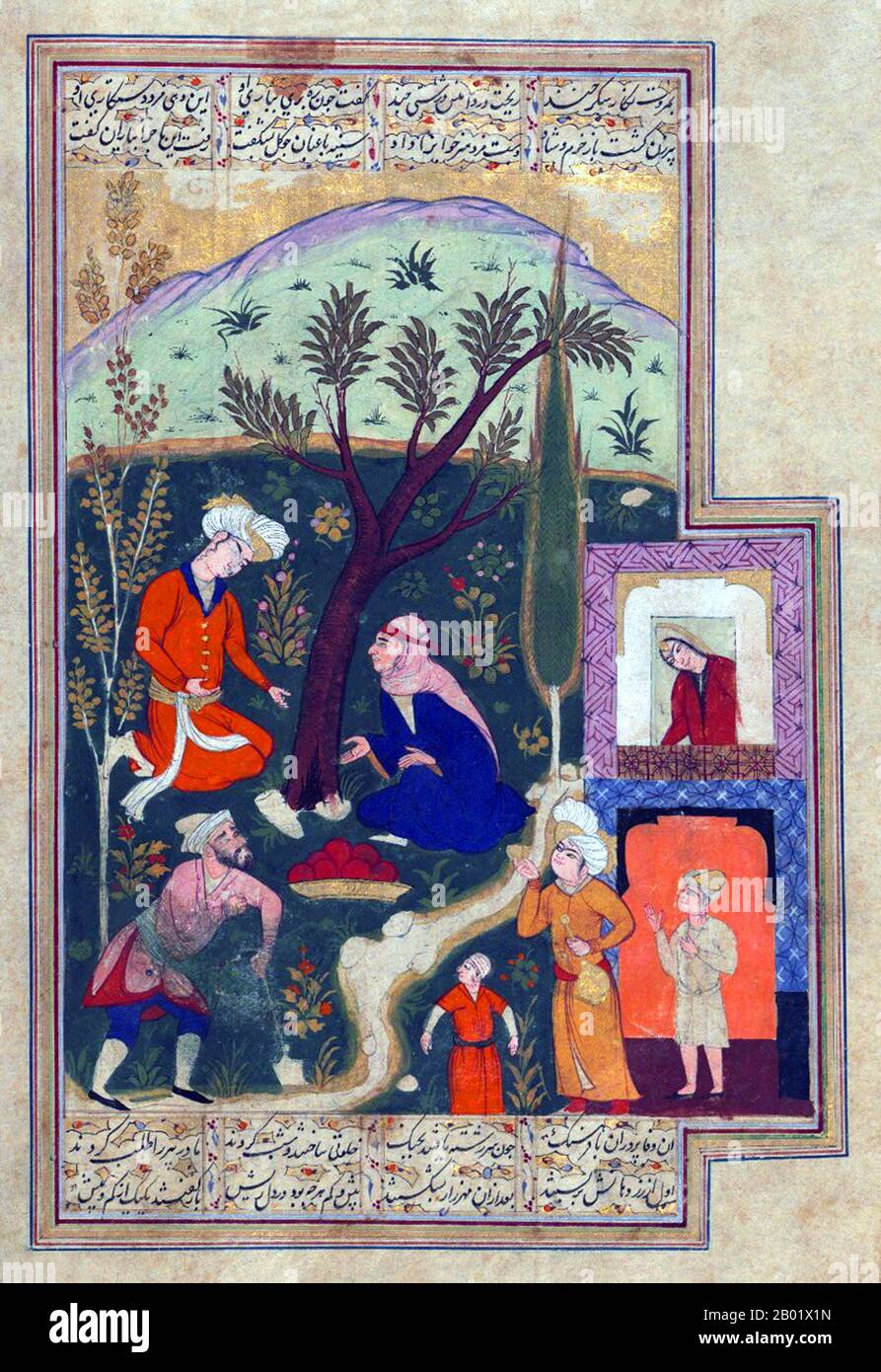 Iran/Persia: Bahram Gur in the Red Pavilion. From a manuscript of Amir Khusraw's Hasht-Bihisht, Safavid Dynasty, 1609. Bahram V (406-438) was the fourteenth Sassanid King of Persia (r. 421-438). Also called Bahram Gur or Bahramgur, he was a son of Yazdegerd I (r. 399-421), after whose sudden death (or assassination) he gained the crown against the opposition of the grandees by the help of Mundhir, the Arab dynast of al-Hirah. Stock Photohttps://www.alamy.com/image-license-details/?v=1https://www.alamy.com/iranpersia-bahram-gur-in-the-red-pavilion-from-a-manuscript-of-amir-khusraws-hasht-bihisht-safavid-dynasty-1609-bahram-v-406-438-was-the-fourteenth-sassanid-king-of-persia-r-421-438-also-called-bahram-gur-or-bahramgur-he-was-a-son-of-yazdegerd-i-r-399-421-after-whose-sudden-death-or-assassination-he-gained-the-crown-against-the-opposition-of-the-grandees-by-the-help-of-mundhir-the-arab-dynast-of-al-hirah-image344249745.html
Iran/Persia: Bahram Gur in the Red Pavilion. From a manuscript of Amir Khusraw's Hasht-Bihisht, Safavid Dynasty, 1609. Bahram V (406-438) was the fourteenth Sassanid King of Persia (r. 421-438). Also called Bahram Gur or Bahramgur, he was a son of Yazdegerd I (r. 399-421), after whose sudden death (or assassination) he gained the crown against the opposition of the grandees by the help of Mundhir, the Arab dynast of al-Hirah. Stock Photohttps://www.alamy.com/image-license-details/?v=1https://www.alamy.com/iranpersia-bahram-gur-in-the-red-pavilion-from-a-manuscript-of-amir-khusraws-hasht-bihisht-safavid-dynasty-1609-bahram-v-406-438-was-the-fourteenth-sassanid-king-of-persia-r-421-438-also-called-bahram-gur-or-bahramgur-he-was-a-son-of-yazdegerd-i-r-399-421-after-whose-sudden-death-or-assassination-he-gained-the-crown-against-the-opposition-of-the-grandees-by-the-help-of-mundhir-the-arab-dynast-of-al-hirah-image344249745.htmlRM2B01X1N–Iran/Persia: Bahram Gur in the Red Pavilion. From a manuscript of Amir Khusraw's Hasht-Bihisht, Safavid Dynasty, 1609. Bahram V (406-438) was the fourteenth Sassanid King of Persia (r. 421-438). Also called Bahram Gur or Bahramgur, he was a son of Yazdegerd I (r. 399-421), after whose sudden death (or assassination) he gained the crown against the opposition of the grandees by the help of Mundhir, the Arab dynast of al-Hirah.
 Pavilion in iran, called Niavaran Complex in Tehran Stock Photohttps://www.alamy.com/image-license-details/?v=1https://www.alamy.com/pavilion-in-iran-called-niavaran-complex-in-tehran-image618709153.html
Pavilion in iran, called Niavaran Complex in Tehran Stock Photohttps://www.alamy.com/image-license-details/?v=1https://www.alamy.com/pavilion-in-iran-called-niavaran-complex-in-tehran-image618709153.htmlRF2XXGHRD–Pavilion in iran, called Niavaran Complex in Tehran
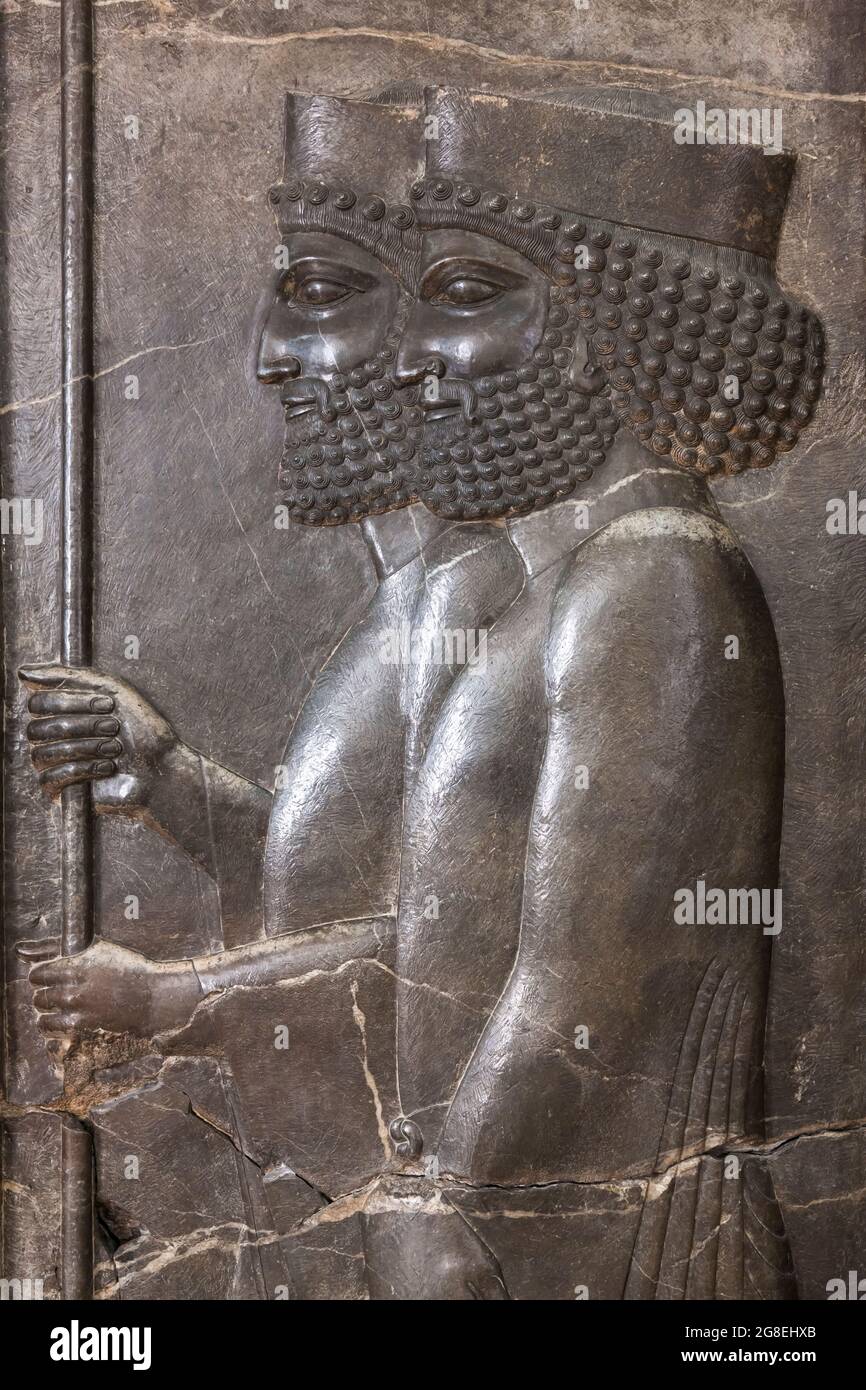 Partial of The audience hall scene, from Persepolis(Treasury palace), National Museum of Iran, Tehran, Iran, Persia, Western Asia, Asia Stock Photohttps://www.alamy.com/image-license-details/?v=1https://www.alamy.com/partial-of-the-audience-hall-scene-from-persepolistreasury-palace-national-museum-of-iran-tehran-iran-persia-western-asia-asia-image435497843.html
Partial of The audience hall scene, from Persepolis(Treasury palace), National Museum of Iran, Tehran, Iran, Persia, Western Asia, Asia Stock Photohttps://www.alamy.com/image-license-details/?v=1https://www.alamy.com/partial-of-the-audience-hall-scene-from-persepolistreasury-palace-national-museum-of-iran-tehran-iran-persia-western-asia-asia-image435497843.htmlRM2G8EHXB–Partial of The audience hall scene, from Persepolis(Treasury palace), National Museum of Iran, Tehran, Iran, Persia, Western Asia, Asia
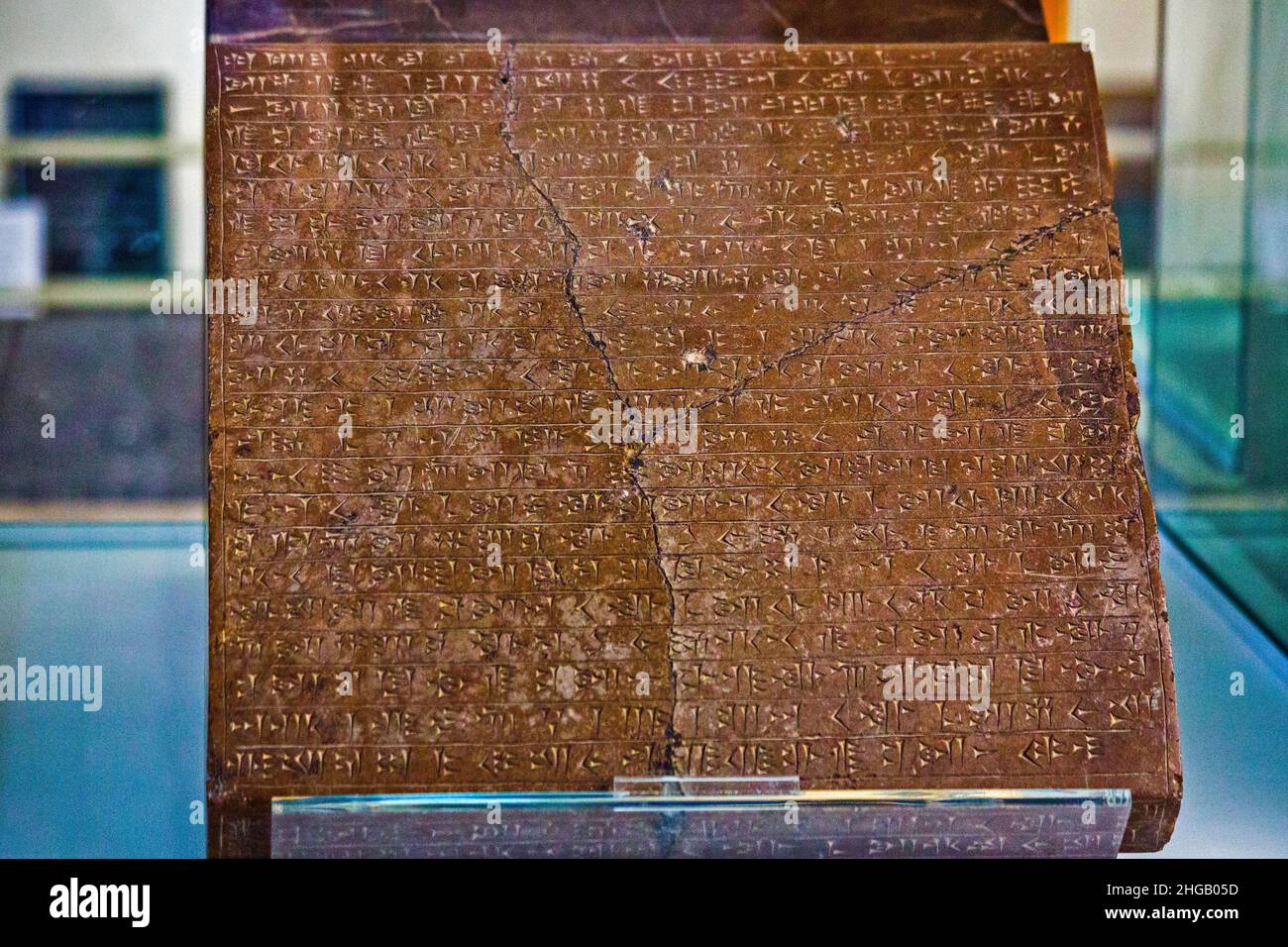 Stone tablet with ancient Persian inscription of King Xerxes I the Great Persia, ca. 486-465 BC National Museum, Tehran, Tehran, Iran Stock Photohttps://www.alamy.com/image-license-details/?v=1https://www.alamy.com/stone-tablet-with-ancient-persian-inscription-of-king-xerxes-i-the-great-persia-ca-486-465-bc-national-museum-tehran-tehran-iran-image457545689.html
Stone tablet with ancient Persian inscription of King Xerxes I the Great Persia, ca. 486-465 BC National Museum, Tehran, Tehran, Iran Stock Photohttps://www.alamy.com/image-license-details/?v=1https://www.alamy.com/stone-tablet-with-ancient-persian-inscription-of-king-xerxes-i-the-great-persia-ca-486-465-bc-national-museum-tehran-tehran-iran-image457545689.htmlRM2HGB05D–Stone tablet with ancient Persian inscription of King Xerxes I the Great Persia, ca. 486-465 BC National Museum, Tehran, Tehran, Iran
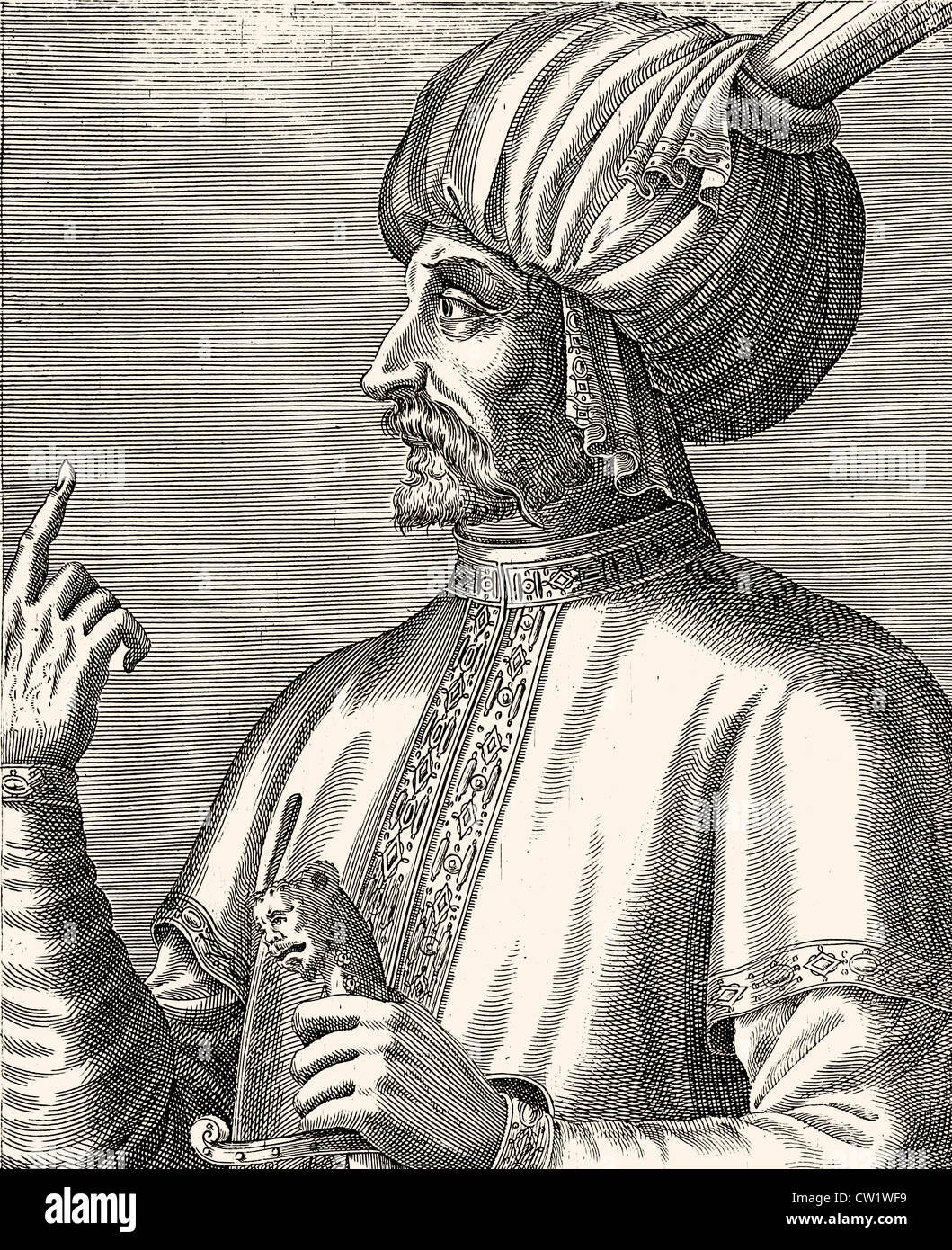 Hismael Sophi Stock Photohttps://www.alamy.com/image-license-details/?v=1https://www.alamy.com/stock-photo-hismael-sophi-49829117.html
Hismael Sophi Stock Photohttps://www.alamy.com/image-license-details/?v=1https://www.alamy.com/stock-photo-hismael-sophi-49829117.htmlRMCW1WF9–Hismael Sophi
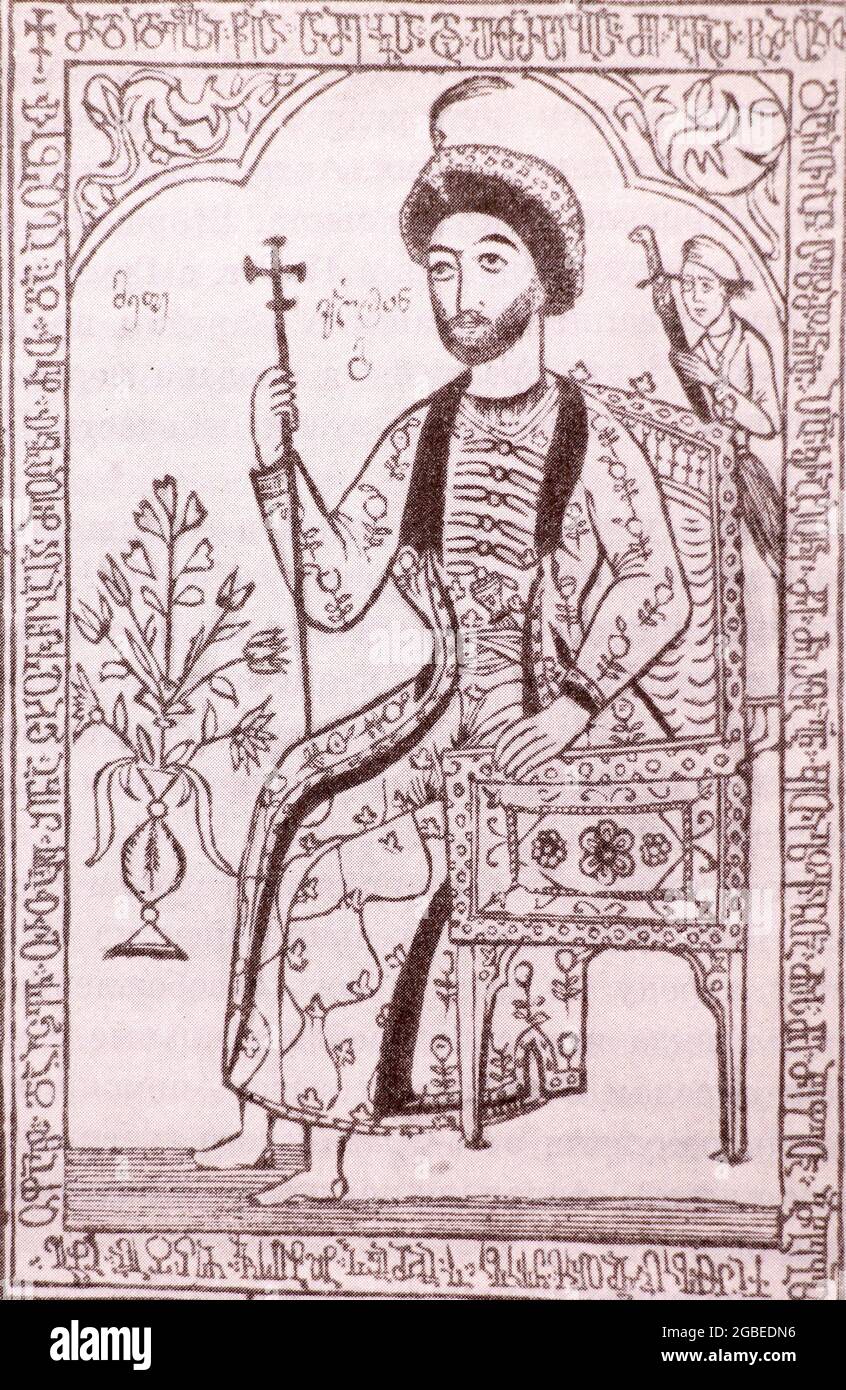 Vakhtang VI. The engraving of the 18th century. Vakhtang VI , also known as Vakhtang the Scholar, Vakhtang the Lawgiver and Ḥosaynqolī Khan (1675 – 1737), was a Georgian monarch of the royal Bagrationi dynasty. He ruled the East Georgian Kingdom of Kartli as a vassal of Safavid Persia from 1716 to 1724. Stock Photohttps://www.alamy.com/image-license-details/?v=1https://www.alamy.com/vakhtang-vi-the-engraving-of-the-18th-century-vakhtang-vi-also-known-as-vakhtang-the-scholar-vakhtang-the-lawgiver-and-osaynqol-khan-1675-1737-was-a-georgian-monarch-of-the-royal-bagrationi-dynasty-he-ruled-the-east-georgian-kingdom-of-kartli-as-a-vassal-of-safavid-persia-from-1716-to-1724-image437338530.html
Vakhtang VI. The engraving of the 18th century. Vakhtang VI , also known as Vakhtang the Scholar, Vakhtang the Lawgiver and Ḥosaynqolī Khan (1675 – 1737), was a Georgian monarch of the royal Bagrationi dynasty. He ruled the East Georgian Kingdom of Kartli as a vassal of Safavid Persia from 1716 to 1724. Stock Photohttps://www.alamy.com/image-license-details/?v=1https://www.alamy.com/vakhtang-vi-the-engraving-of-the-18th-century-vakhtang-vi-also-known-as-vakhtang-the-scholar-vakhtang-the-lawgiver-and-osaynqol-khan-1675-1737-was-a-georgian-monarch-of-the-royal-bagrationi-dynasty-he-ruled-the-east-georgian-kingdom-of-kartli-as-a-vassal-of-safavid-persia-from-1716-to-1724-image437338530.htmlRM2GBEDN6–Vakhtang VI. The engraving of the 18th century. Vakhtang VI , also known as Vakhtang the Scholar, Vakhtang the Lawgiver and Ḥosaynqolī Khan (1675 – 1737), was a Georgian monarch of the royal Bagrationi dynasty. He ruled the East Georgian Kingdom of Kartli as a vassal of Safavid Persia from 1716 to 1724.
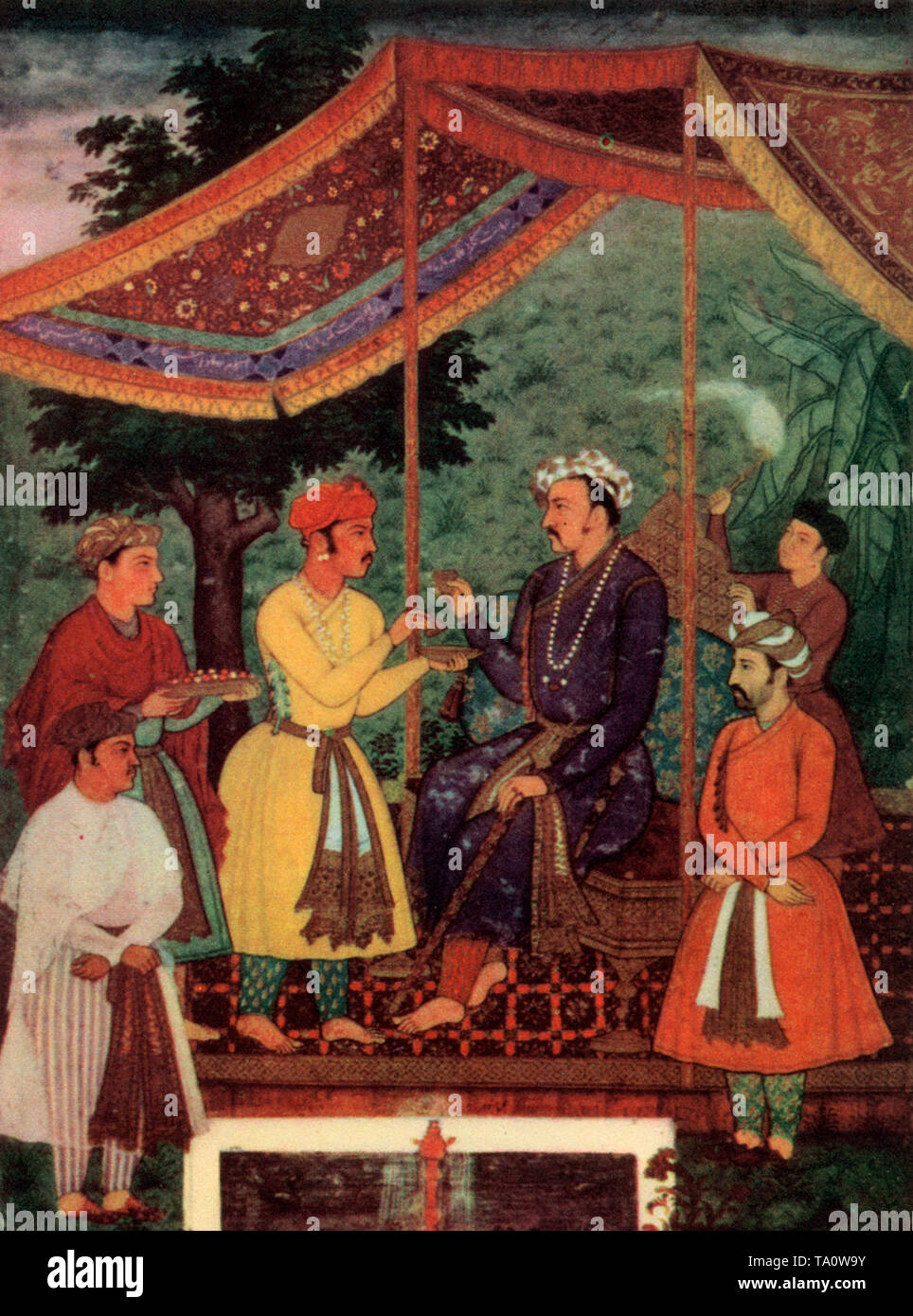 Jahangir drinking wine under a canopy, c1610. By Manohar, 17th century. Jahangir (1569-1627) originally Salim, a Mogul Emperor (from 1605), drinking wine under a canopy, c1610. A painting by Manohar. Manohar's career began under the reign of Jahangir's father, Akbar (reigned 1556-1605). Manohar is known to have made more than ten portraits. Stock Photohttps://www.alamy.com/image-license-details/?v=1https://www.alamy.com/jahangir-drinking-wine-under-a-canopy-c1610-by-manohar-17th-century-jahangir-1569-1627-originally-salim-a-mogul-emperor-from-1605-drinking-wine-under-a-canopy-c1610-a-painting-by-manohar-manohars-career-began-under-the-reign-of-jahangirs-father-akbar-reigned-1556-1605-manohar-is-known-to-have-made-more-than-ten-portraits-image247111591.html
Jahangir drinking wine under a canopy, c1610. By Manohar, 17th century. Jahangir (1569-1627) originally Salim, a Mogul Emperor (from 1605), drinking wine under a canopy, c1610. A painting by Manohar. Manohar's career began under the reign of Jahangir's father, Akbar (reigned 1556-1605). Manohar is known to have made more than ten portraits. Stock Photohttps://www.alamy.com/image-license-details/?v=1https://www.alamy.com/jahangir-drinking-wine-under-a-canopy-c1610-by-manohar-17th-century-jahangir-1569-1627-originally-salim-a-mogul-emperor-from-1605-drinking-wine-under-a-canopy-c1610-a-painting-by-manohar-manohars-career-began-under-the-reign-of-jahangirs-father-akbar-reigned-1556-1605-manohar-is-known-to-have-made-more-than-ten-portraits-image247111591.htmlRMTA0W9Y–Jahangir drinking wine under a canopy, c1610. By Manohar, 17th century. Jahangir (1569-1627) originally Salim, a Mogul Emperor (from 1605), drinking wine under a canopy, c1610. A painting by Manohar. Manohar's career began under the reign of Jahangir's father, Akbar (reigned 1556-1605). Manohar is known to have made more than ten portraits.
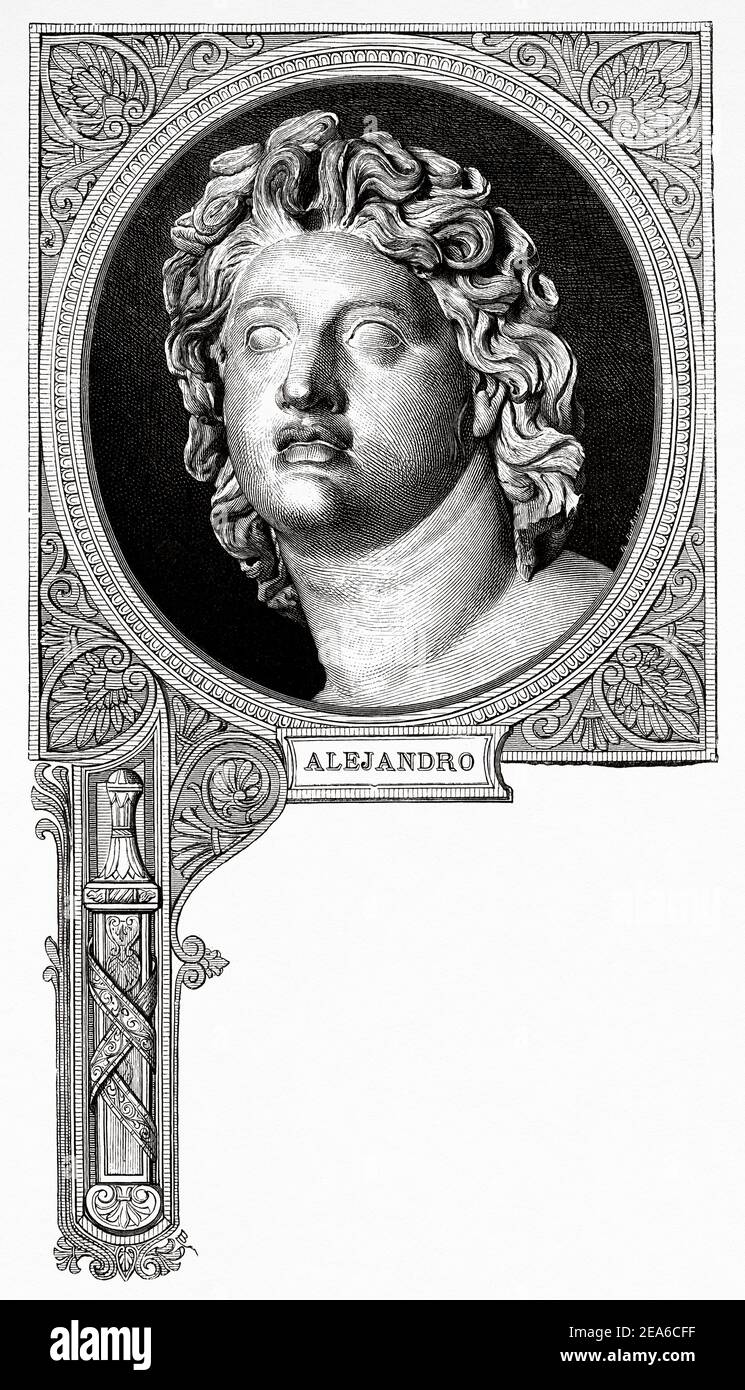 Alexander III of Macedonia (Pela, Greece 356 BC - Babylon 323 BC) Alexander the Great was King of Macedonia, Hegemon of Greece, Pharaoh of Egypt, Great King of Media and Persia. Greece Ancient history. Old engraving illustration. Old 19th century engraved illustration from El Mundo Ilustrado 1879 Stock Photohttps://www.alamy.com/image-license-details/?v=1https://www.alamy.com/alexander-iii-of-macedonia-pela-greece-356-bc-babylon-323-bc-alexander-the-great-was-king-of-macedonia-hegemon-of-greece-pharaoh-of-egypt-great-king-of-media-and-persia-greece-ancient-history-old-engraving-illustration-old-19th-century-engraved-illustration-from-el-mundo-ilustrado-1879-image402126579.html
Alexander III of Macedonia (Pela, Greece 356 BC - Babylon 323 BC) Alexander the Great was King of Macedonia, Hegemon of Greece, Pharaoh of Egypt, Great King of Media and Persia. Greece Ancient history. Old engraving illustration. Old 19th century engraved illustration from El Mundo Ilustrado 1879 Stock Photohttps://www.alamy.com/image-license-details/?v=1https://www.alamy.com/alexander-iii-of-macedonia-pela-greece-356-bc-babylon-323-bc-alexander-the-great-was-king-of-macedonia-hegemon-of-greece-pharaoh-of-egypt-great-king-of-media-and-persia-greece-ancient-history-old-engraving-illustration-old-19th-century-engraved-illustration-from-el-mundo-ilustrado-1879-image402126579.htmlRM2EA6CFF–Alexander III of Macedonia (Pela, Greece 356 BC - Babylon 323 BC) Alexander the Great was King of Macedonia, Hegemon of Greece, Pharaoh of Egypt, Great King of Media and Persia. Greece Ancient history. Old engraving illustration. Old 19th century engraved illustration from El Mundo Ilustrado 1879
 Pre Christian BC Meder Ancient Persia men of Rank Stock Photohttps://www.alamy.com/image-license-details/?v=1https://www.alamy.com/pre-christian-bc-meder-ancient-persia-men-of-rank-image62866907.html
Pre Christian BC Meder Ancient Persia men of Rank Stock Photohttps://www.alamy.com/image-license-details/?v=1https://www.alamy.com/pre-christian-bc-meder-ancient-persia-men-of-rank-image62866907.htmlRFDJ7RAK–Pre Christian BC Meder Ancient Persia men of Rank
 'Xerxes Crossing The Hellespont', 1890. Creator: Unknown. Stock Photohttps://www.alamy.com/image-license-details/?v=1https://www.alamy.com/xerxes-crossing-the-hellespont-1890-creator-unknown-image248906905.html
'Xerxes Crossing The Hellespont', 1890. Creator: Unknown. Stock Photohttps://www.alamy.com/image-license-details/?v=1https://www.alamy.com/xerxes-crossing-the-hellespont-1890-creator-unknown-image248906905.htmlRMTCXK89–'Xerxes Crossing The Hellespont', 1890. Creator: Unknown.
 Portrait of Alexander the Great (356 BC-323 BC). Most likely a work of the sculptor from Athens Leochares. 340-330 BC. Acropolis Museum. Athens. Greece. Stock Photohttps://www.alamy.com/image-license-details/?v=1https://www.alamy.com/portrait-of-alexander-the-great-356-bc-323-bc-most-likely-a-work-of-the-sculptor-from-athens-leochares-340-330-bc-acropolis-museum-athens-greece-image182767576.html
Portrait of Alexander the Great (356 BC-323 BC). Most likely a work of the sculptor from Athens Leochares. 340-330 BC. Acropolis Museum. Athens. Greece. Stock Photohttps://www.alamy.com/image-license-details/?v=1https://www.alamy.com/portrait-of-alexander-the-great-356-bc-323-bc-most-likely-a-work-of-the-sculptor-from-athens-leochares-340-330-bc-acropolis-museum-athens-greece-image182767576.htmlRMMH9NWC–Portrait of Alexander the Great (356 BC-323 BC). Most likely a work of the sculptor from Athens Leochares. 340-330 BC. Acropolis Museum. Athens. Greece.
 'Feline Friends; or, The British Lion and the Persian Chat!', 1873. Artist: Joseph Swain Stock Photohttps://www.alamy.com/image-license-details/?v=1https://www.alamy.com/feline-friends-or-the-british-lion-and-the-persian-chat!-1873-artist-joseph-swain-image262734952.html
'Feline Friends; or, The British Lion and the Persian Chat!', 1873. Artist: Joseph Swain Stock Photohttps://www.alamy.com/image-license-details/?v=1https://www.alamy.com/feline-friends-or-the-british-lion-and-the-persian-chat!-1873-artist-joseph-swain-image262734952.htmlRMW7CH34–'Feline Friends; or, The British Lion and the Persian Chat!', 1873. Artist: Joseph Swain
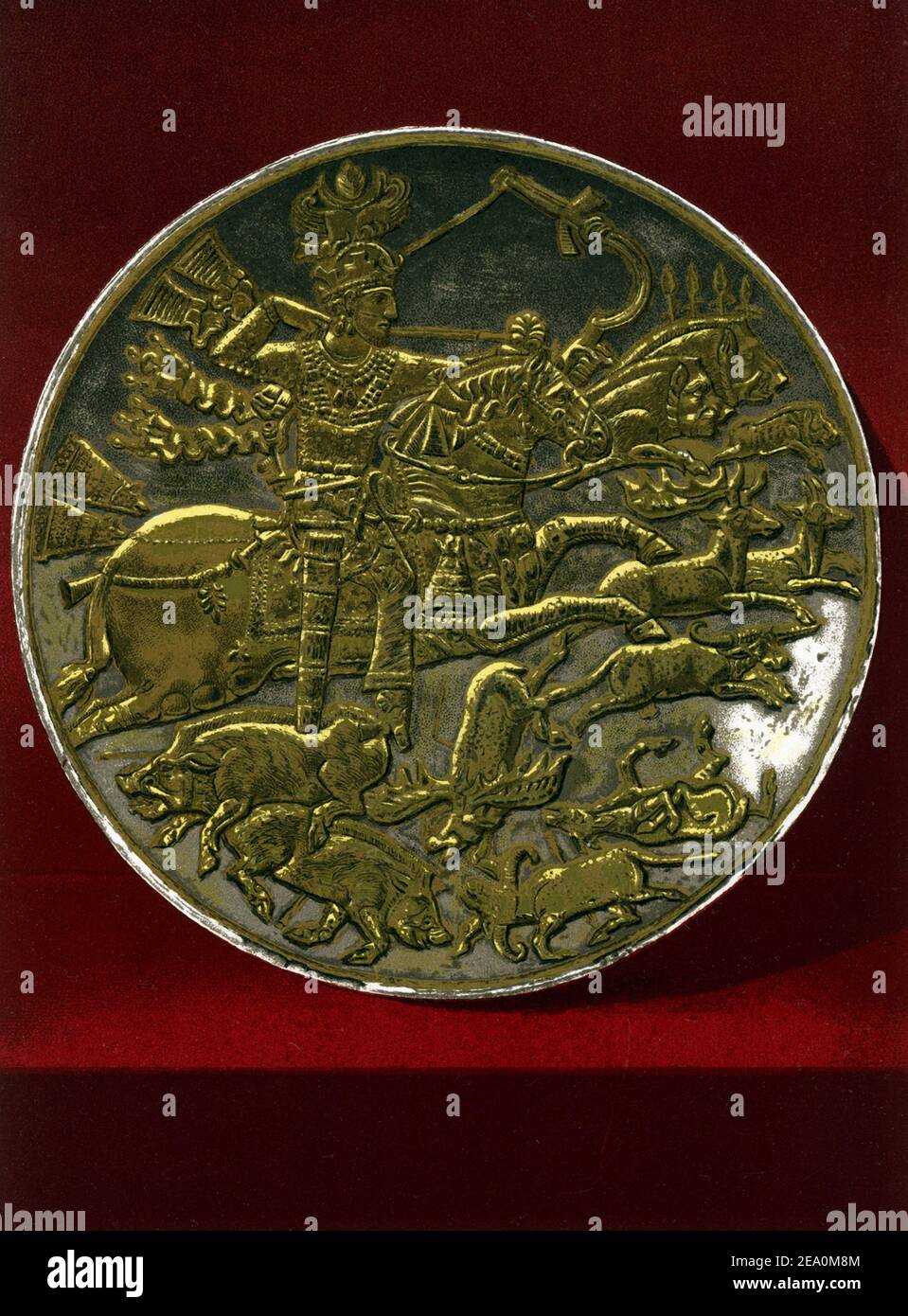 This 1880s drawing shows an ancient silver cup that once belonged to a Persian King. the design represents massive silver cup, of cast and chased silver, with figures gilded and in niello, representing a king of Persia hunting. The monarch, whose horse is going aty full speed, is discharging an arrow. Before him are fleeing two wild boars and a pig, a buffalo, an axis, and an antelope. Many victims of the royal hunter are stretched upon the ground. He has a tiara on his head, precious stones adorn his ears, his neck, and his double girdle; the tunic and trousers are embroidered as also the ho Stock Photohttps://www.alamy.com/image-license-details/?v=1https://www.alamy.com/this-1880s-drawing-shows-an-ancient-silver-cup-that-once-belonged-to-a-persian-king-the-design-represents-massive-silver-cup-of-cast-and-chased-silver-with-figures-gilded-and-in-niello-representing-a-king-of-persia-hunting-the-monarch-whose-horse-is-going-aty-full-speed-is-discharging-an-arrow-before-him-are-fleeing-two-wild-boars-and-a-pig-a-buffalo-an-axis-and-an-antelope-many-victims-of-the-royal-hunter-are-stretched-upon-the-ground-he-has-a-tiara-on-his-head-precious-stones-adorn-his-ears-his-neck-and-his-double-girdle-the-tunic-and-trousers-are-embroidered-as-also-the-ho-image402000948.html
This 1880s drawing shows an ancient silver cup that once belonged to a Persian King. the design represents massive silver cup, of cast and chased silver, with figures gilded and in niello, representing a king of Persia hunting. The monarch, whose horse is going aty full speed, is discharging an arrow. Before him are fleeing two wild boars and a pig, a buffalo, an axis, and an antelope. Many victims of the royal hunter are stretched upon the ground. He has a tiara on his head, precious stones adorn his ears, his neck, and his double girdle; the tunic and trousers are embroidered as also the ho Stock Photohttps://www.alamy.com/image-license-details/?v=1https://www.alamy.com/this-1880s-drawing-shows-an-ancient-silver-cup-that-once-belonged-to-a-persian-king-the-design-represents-massive-silver-cup-of-cast-and-chased-silver-with-figures-gilded-and-in-niello-representing-a-king-of-persia-hunting-the-monarch-whose-horse-is-going-aty-full-speed-is-discharging-an-arrow-before-him-are-fleeing-two-wild-boars-and-a-pig-a-buffalo-an-axis-and-an-antelope-many-victims-of-the-royal-hunter-are-stretched-upon-the-ground-he-has-a-tiara-on-his-head-precious-stones-adorn-his-ears-his-neck-and-his-double-girdle-the-tunic-and-trousers-are-embroidered-as-also-the-ho-image402000948.htmlRF2EA0M8M–This 1880s drawing shows an ancient silver cup that once belonged to a Persian King. the design represents massive silver cup, of cast and chased silver, with figures gilded and in niello, representing a king of Persia hunting. The monarch, whose horse is going aty full speed, is discharging an arrow. Before him are fleeing two wild boars and a pig, a buffalo, an axis, and an antelope. Many victims of the royal hunter are stretched upon the ground. He has a tiara on his head, precious stones adorn his ears, his neck, and his double girdle; the tunic and trousers are embroidered as also the ho
 FAS Seated on a Chair, One of 274 Vintage Photographs, Gelatin silver printing out paper, late 19th-early 20th century, Qajar, Qajar Period, 4 9/16 x 6 9/16 in., 11.6 x 16.6 cm, court, Fath-Ali Shah Qajar, Iran, monarch, Persia, royalty, Shah Stock Photohttps://www.alamy.com/image-license-details/?v=1https://www.alamy.com/fas-seated-on-a-chair-one-of-274-vintage-photographs-gelatin-silver-printing-out-paper-late-19th-early-20th-century-qajar-qajar-period-4-916-x-6-916-in-116-x-166-cm-court-fath-ali-shah-qajar-iran-monarch-persia-royalty-shah-image454269177.html
FAS Seated on a Chair, One of 274 Vintage Photographs, Gelatin silver printing out paper, late 19th-early 20th century, Qajar, Qajar Period, 4 9/16 x 6 9/16 in., 11.6 x 16.6 cm, court, Fath-Ali Shah Qajar, Iran, monarch, Persia, royalty, Shah Stock Photohttps://www.alamy.com/image-license-details/?v=1https://www.alamy.com/fas-seated-on-a-chair-one-of-274-vintage-photographs-gelatin-silver-printing-out-paper-late-19th-early-20th-century-qajar-qajar-period-4-916-x-6-916-in-116-x-166-cm-court-fath-ali-shah-qajar-iran-monarch-persia-royalty-shah-image454269177.htmlRM2HB1MY5–FAS Seated on a Chair, One of 274 Vintage Photographs, Gelatin silver printing out paper, late 19th-early 20th century, Qajar, Qajar Period, 4 9/16 x 6 9/16 in., 11.6 x 16.6 cm, court, Fath-Ali Shah Qajar, Iran, monarch, Persia, royalty, Shah
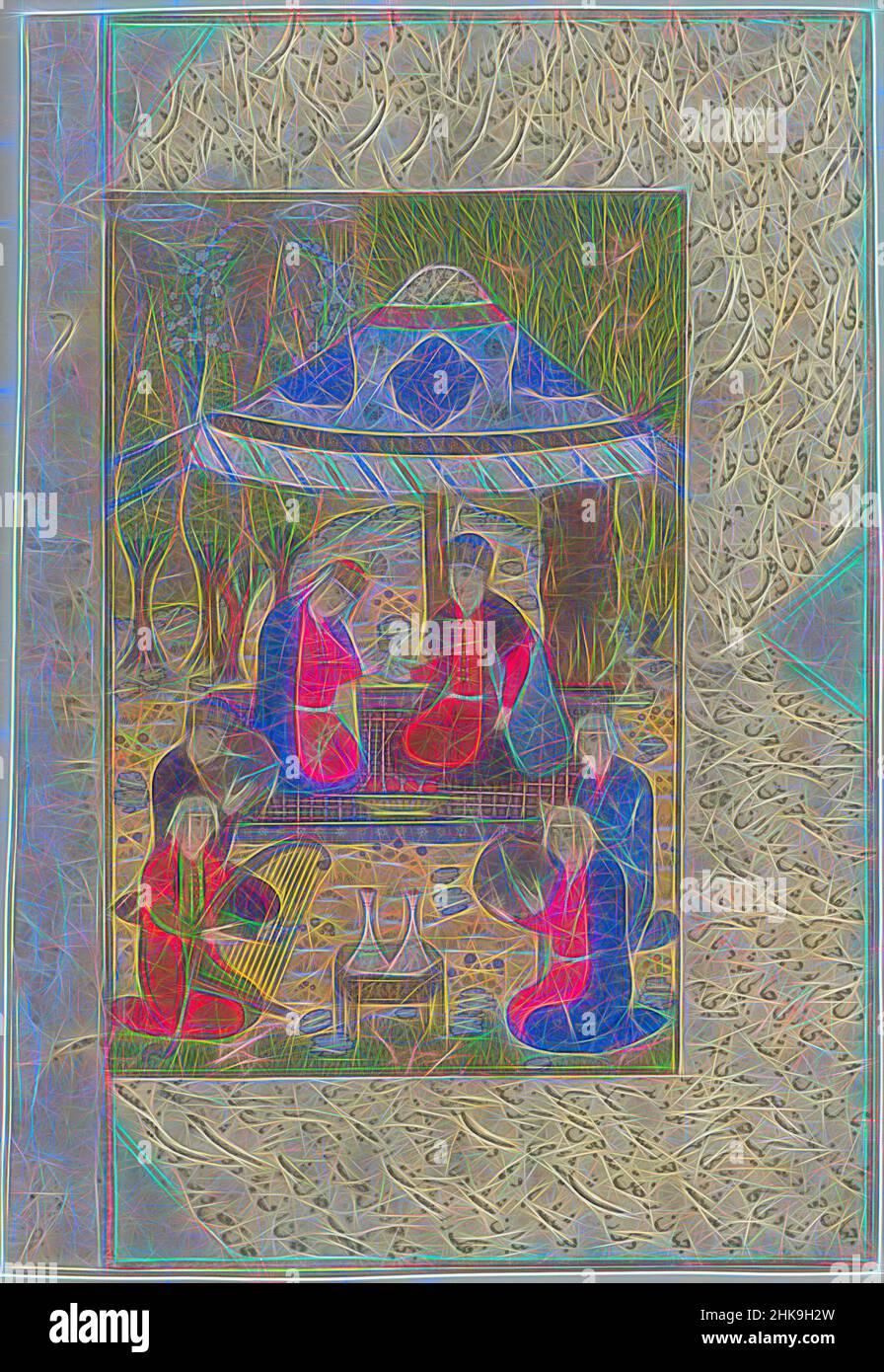 Inspired by Man and woman under a canopy in a garden, in front of them four musicians, Five illustrations of Kamsa by Nizami with text, Togetherness of Khusrau and Shirin, Illustration of the Khamsa by Nizama. A monarch and a monarchess sit under a canopy. (AK title), draughtsman:, Persia, 1500, Reimagined by Artotop. Classic art reinvented with a modern twist. Design of warm cheerful glowing of brightness and light ray radiance. Photography inspired by surrealism and futurism, embracing dynamic energy of modern technology, movement, speed and revolutionize culture Stock Photohttps://www.alamy.com/image-license-details/?v=1https://www.alamy.com/inspired-by-man-and-woman-under-a-canopy-in-a-garden-in-front-of-them-four-musicians-five-illustrations-of-kamsa-by-nizami-with-text-togetherness-of-khusrau-and-shirin-illustration-of-the-khamsa-by-nizama-a-monarch-and-a-monarchess-sit-under-a-canopy-ak-title-draughtsman-persia-1500-reimagined-by-artotop-classic-art-reinvented-with-a-modern-twist-design-of-warm-cheerful-glowing-of-brightness-and-light-ray-radiance-photography-inspired-by-surrealism-and-futurism-embracing-dynamic-energy-of-modern-technology-movement-speed-and-revolutionize-culture-image459359009.html
Inspired by Man and woman under a canopy in a garden, in front of them four musicians, Five illustrations of Kamsa by Nizami with text, Togetherness of Khusrau and Shirin, Illustration of the Khamsa by Nizama. A monarch and a monarchess sit under a canopy. (AK title), draughtsman:, Persia, 1500, Reimagined by Artotop. Classic art reinvented with a modern twist. Design of warm cheerful glowing of brightness and light ray radiance. Photography inspired by surrealism and futurism, embracing dynamic energy of modern technology, movement, speed and revolutionize culture Stock Photohttps://www.alamy.com/image-license-details/?v=1https://www.alamy.com/inspired-by-man-and-woman-under-a-canopy-in-a-garden-in-front-of-them-four-musicians-five-illustrations-of-kamsa-by-nizami-with-text-togetherness-of-khusrau-and-shirin-illustration-of-the-khamsa-by-nizama-a-monarch-and-a-monarchess-sit-under-a-canopy-ak-title-draughtsman-persia-1500-reimagined-by-artotop-classic-art-reinvented-with-a-modern-twist-design-of-warm-cheerful-glowing-of-brightness-and-light-ray-radiance-photography-inspired-by-surrealism-and-futurism-embracing-dynamic-energy-of-modern-technology-movement-speed-and-revolutionize-culture-image459359009.htmlRF2HK9H2W–Inspired by Man and woman under a canopy in a garden, in front of them four musicians, Five illustrations of Kamsa by Nizami with text, Togetherness of Khusrau and Shirin, Illustration of the Khamsa by Nizama. A monarch and a monarchess sit under a canopy. (AK title), draughtsman:, Persia, 1500, Reimagined by Artotop. Classic art reinvented with a modern twist. Design of warm cheerful glowing of brightness and light ray radiance. Photography inspired by surrealism and futurism, embracing dynamic energy of modern technology, movement, speed and revolutionize culture
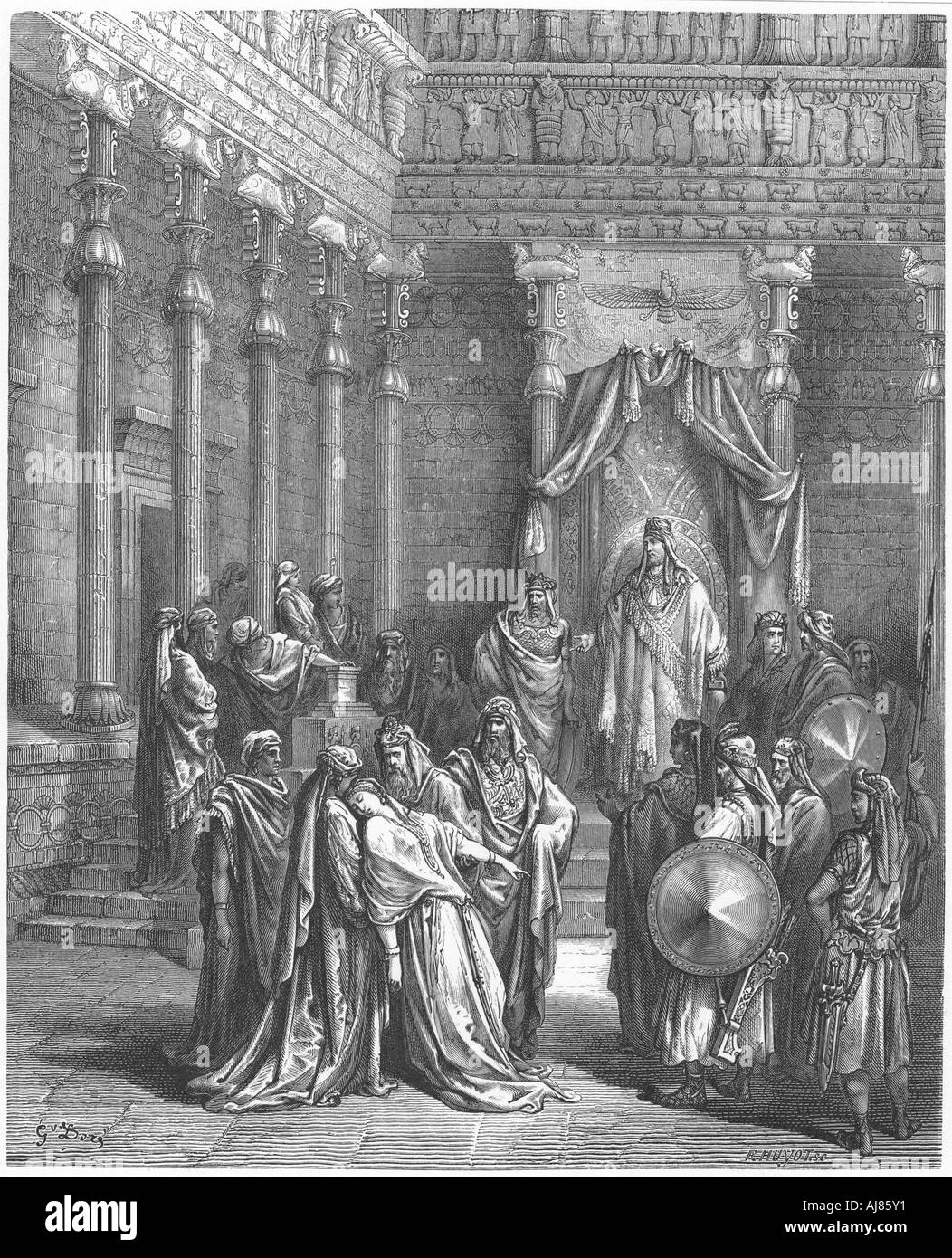 Esther in the presence of Ahasuerus, 1866. Artist: Gustave Doré Stock Photohttps://www.alamy.com/image-license-details/?v=1https://www.alamy.com/esther-in-the-presence-of-ahasuerus-1866-artist-gustave-dor-image8373360.html
Esther in the presence of Ahasuerus, 1866. Artist: Gustave Doré Stock Photohttps://www.alamy.com/image-license-details/?v=1https://www.alamy.com/esther-in-the-presence-of-ahasuerus-1866-artist-gustave-dor-image8373360.htmlRMAJ85Y1–Esther in the presence of Ahasuerus, 1866. Artist: Gustave Doré
 Steel Engraving of Cyrus Proclaiming that he Will rebuild the Temple (Ezra)from the 1851 Tallis Illustrated Scripture History for the Improvement for Stock Photohttps://www.alamy.com/image-license-details/?v=1https://www.alamy.com/steel-engraving-of-cyrus-proclaiming-that-he-will-rebuild-the-temple-ezrafrom-the-1851-tallis-illustrated-scripture-history-for-the-improvement-for-image634176709.html
Steel Engraving of Cyrus Proclaiming that he Will rebuild the Temple (Ezra)from the 1851 Tallis Illustrated Scripture History for the Improvement for Stock Photohttps://www.alamy.com/image-license-details/?v=1https://www.alamy.com/steel-engraving-of-cyrus-proclaiming-that-he-will-rebuild-the-temple-ezrafrom-the-1851-tallis-illustrated-scripture-history-for-the-improvement-for-image634176709.htmlRM2YRN6T5–Steel Engraving of Cyrus Proclaiming that he Will rebuild the Temple (Ezra)from the 1851 Tallis Illustrated Scripture History for the Improvement for
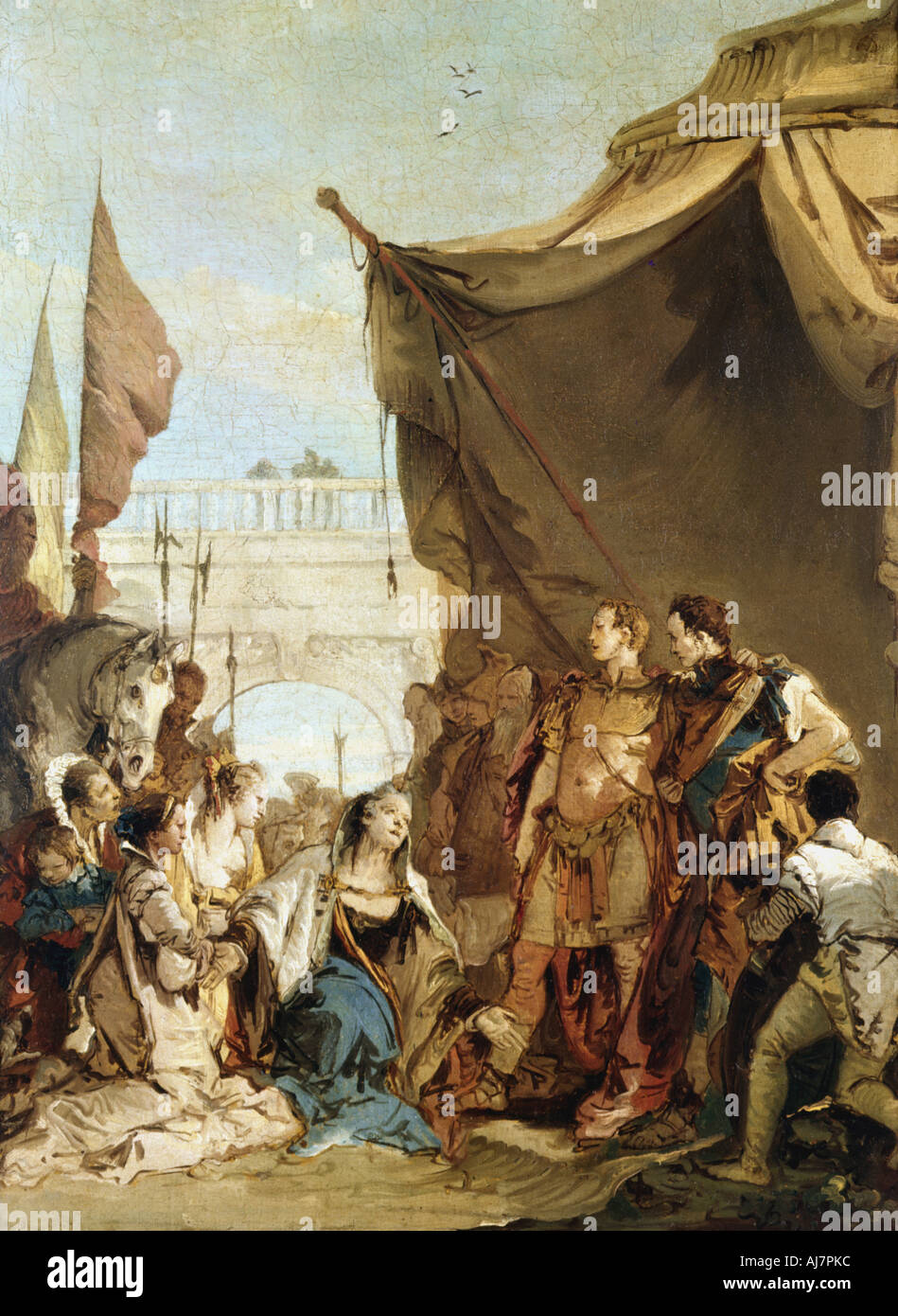 'The Family of Darius before Alexander', 333 BC, (c1745). Artist: Giovanni Battista Tiepolo Stock Photohttps://www.alamy.com/image-license-details/?v=1https://www.alamy.com/the-family-of-darius-before-alexander-333-bc-c1745-artist-giovanni-image8371131.html
'The Family of Darius before Alexander', 333 BC, (c1745). Artist: Giovanni Battista Tiepolo Stock Photohttps://www.alamy.com/image-license-details/?v=1https://www.alamy.com/the-family-of-darius-before-alexander-333-bc-c1745-artist-giovanni-image8371131.htmlRMAJ7PKC–'The Family of Darius before Alexander', 333 BC, (c1745). Artist: Giovanni Battista Tiepolo
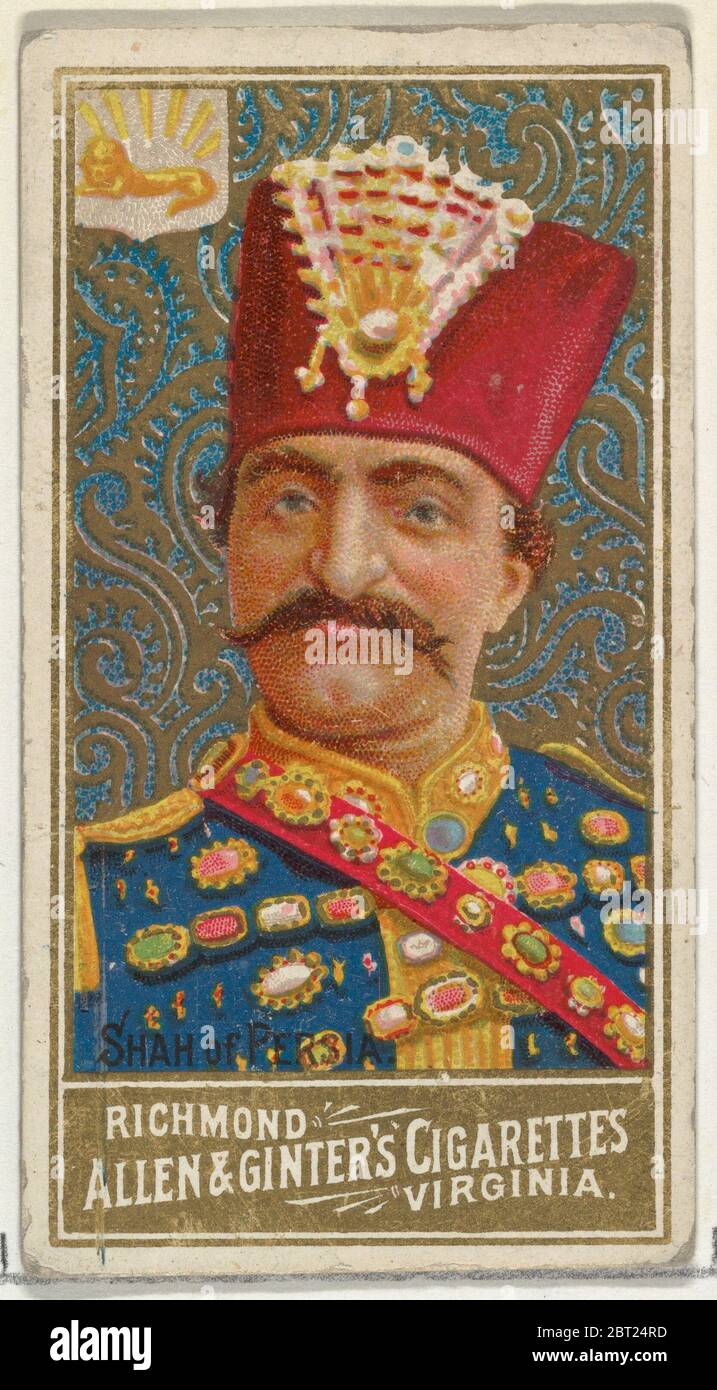 Shah of Persia, from World's Sovereigns series (N34) for Allen & Ginter Cigarettes, 1889. Stock Photohttps://www.alamy.com/image-license-details/?v=1https://www.alamy.com/shah-of-persia-from-worlds-sovereigns-series-n34-for-allen-amp-ginter-cigarettes-1889-image359006801.html
Shah of Persia, from World's Sovereigns series (N34) for Allen & Ginter Cigarettes, 1889. Stock Photohttps://www.alamy.com/image-license-details/?v=1https://www.alamy.com/shah-of-persia-from-worlds-sovereigns-series-n34-for-allen-amp-ginter-cigarettes-1889-image359006801.htmlRM2BT24RD–Shah of Persia, from World's Sovereigns series (N34) for Allen & Ginter Cigarettes, 1889.
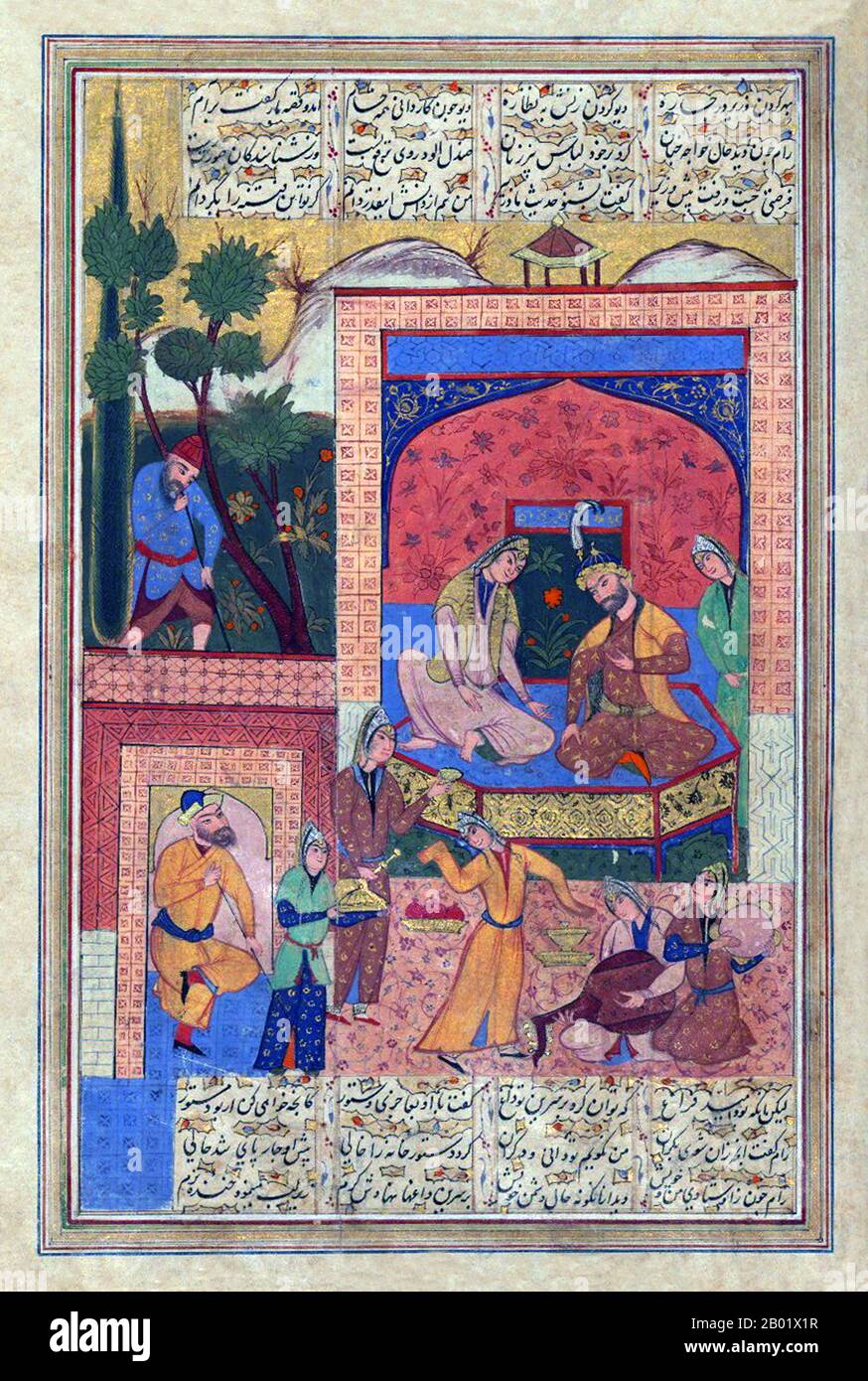 Iran/Persia: Bahram Gur in the Sandalwood Pavilion. From a manuscript of Amir Khusraw's Hasht-Bihisht, Safavid Dynasty, 1609. Bahram V (406-438) was the fourteenth Sassanid King of Persia (r. 421-438). Also called Bahram Gur or Bahramgur, he was a son of Yazdegerd I (r. 399-421), after whose sudden death (or assassination) he gained the crown against the opposition of the grandees by the help of Mundhir, the Arab dynast of al-Hirah. Stock Photohttps://www.alamy.com/image-license-details/?v=1https://www.alamy.com/iranpersia-bahram-gur-in-the-sandalwood-pavilion-from-a-manuscript-of-amir-khusraws-hasht-bihisht-safavid-dynasty-1609-bahram-v-406-438-was-the-fourteenth-sassanid-king-of-persia-r-421-438-also-called-bahram-gur-or-bahramgur-he-was-a-son-of-yazdegerd-i-r-399-421-after-whose-sudden-death-or-assassination-he-gained-the-crown-against-the-opposition-of-the-grandees-by-the-help-of-mundhir-the-arab-dynast-of-al-hirah-image344249747.html
Iran/Persia: Bahram Gur in the Sandalwood Pavilion. From a manuscript of Amir Khusraw's Hasht-Bihisht, Safavid Dynasty, 1609. Bahram V (406-438) was the fourteenth Sassanid King of Persia (r. 421-438). Also called Bahram Gur or Bahramgur, he was a son of Yazdegerd I (r. 399-421), after whose sudden death (or assassination) he gained the crown against the opposition of the grandees by the help of Mundhir, the Arab dynast of al-Hirah. Stock Photohttps://www.alamy.com/image-license-details/?v=1https://www.alamy.com/iranpersia-bahram-gur-in-the-sandalwood-pavilion-from-a-manuscript-of-amir-khusraws-hasht-bihisht-safavid-dynasty-1609-bahram-v-406-438-was-the-fourteenth-sassanid-king-of-persia-r-421-438-also-called-bahram-gur-or-bahramgur-he-was-a-son-of-yazdegerd-i-r-399-421-after-whose-sudden-death-or-assassination-he-gained-the-crown-against-the-opposition-of-the-grandees-by-the-help-of-mundhir-the-arab-dynast-of-al-hirah-image344249747.htmlRM2B01X1R–Iran/Persia: Bahram Gur in the Sandalwood Pavilion. From a manuscript of Amir Khusraw's Hasht-Bihisht, Safavid Dynasty, 1609. Bahram V (406-438) was the fourteenth Sassanid King of Persia (r. 421-438). Also called Bahram Gur or Bahramgur, he was a son of Yazdegerd I (r. 399-421), after whose sudden death (or assassination) he gained the crown against the opposition of the grandees by the help of Mundhir, the Arab dynast of al-Hirah.
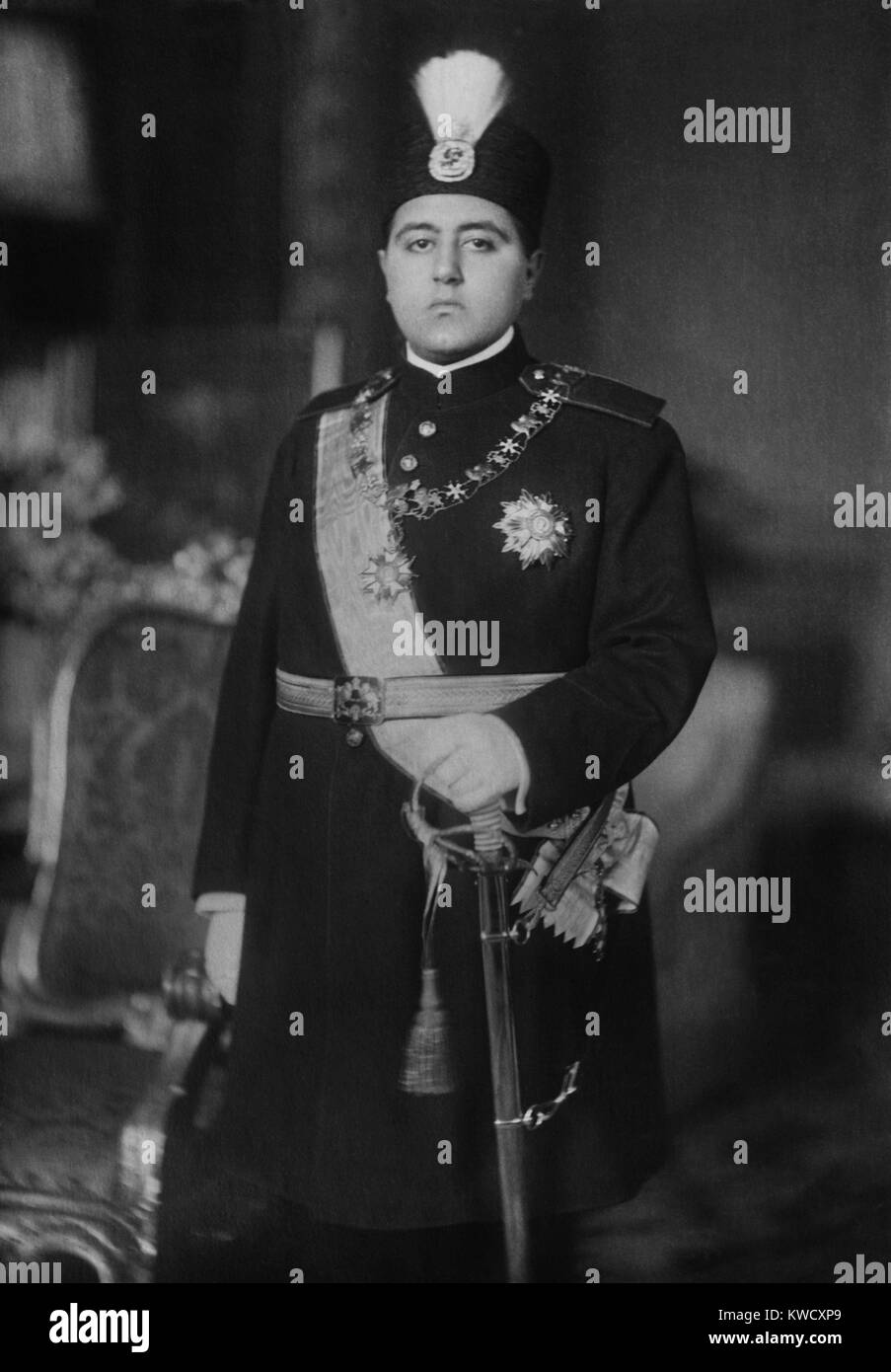 Ahmad Shah Qajar, the last Shah of the Qajar Dynasty that ruled Iran from 1796 to 1925 (BSLOC 2017 1 118) Stock Photohttps://www.alamy.com/image-license-details/?v=1https://www.alamy.com/stock-photo-ahmad-shah-qajar-the-last-shah-of-the-qajar-dynasty-that-ruled-iran-170544145.html
Ahmad Shah Qajar, the last Shah of the Qajar Dynasty that ruled Iran from 1796 to 1925 (BSLOC 2017 1 118) Stock Photohttps://www.alamy.com/image-license-details/?v=1https://www.alamy.com/stock-photo-ahmad-shah-qajar-the-last-shah-of-the-qajar-dynasty-that-ruled-iran-170544145.htmlRMKWCXP9–Ahmad Shah Qajar, the last Shah of the Qajar Dynasty that ruled Iran from 1796 to 1925 (BSLOC 2017 1 118)
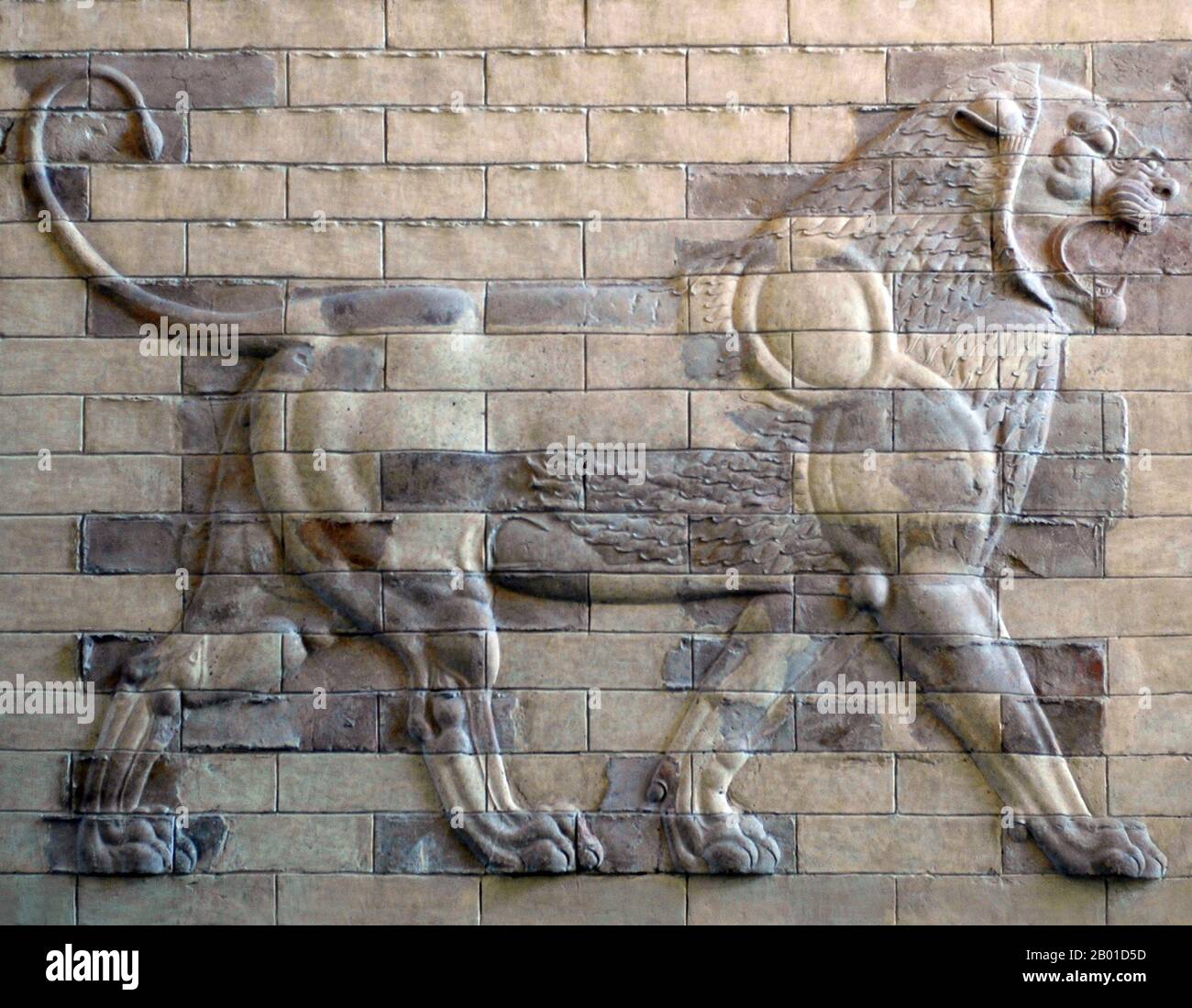 Iran/Persia: Terracotta relief of a lion from a wall in the palace of Darius I (550-486 BCE), Susa, c. 510 BCE. Darius I (r. 522-486 BCE), also known as Darius the Great, was the third King of Kings of the Achaemenid Empire. Darius held the empire at its peak, then including Egypt, Balochistan, Kurdistan and parts of Greece. The decay and eventual downfall of the empire commenced with his death and the ascension of his son, Xerxes I. Stock Photohttps://www.alamy.com/image-license-details/?v=1https://www.alamy.com/iranpersia-terracotta-relief-of-a-lion-from-a-wall-in-the-palace-of-darius-i-550-486-bce-susa-c-510-bce-darius-i-r-522-486-bce-also-known-as-darius-the-great-was-the-third-king-of-kings-of-the-achaemenid-empire-darius-held-the-empire-at-its-peak-then-including-egypt-balochistan-kurdistan-and-parts-of-greece-the-decay-and-eventual-downfall-of-the-empire-commenced-with-his-death-and-the-ascension-of-his-son-xerxes-i-image344239657.html
Iran/Persia: Terracotta relief of a lion from a wall in the palace of Darius I (550-486 BCE), Susa, c. 510 BCE. Darius I (r. 522-486 BCE), also known as Darius the Great, was the third King of Kings of the Achaemenid Empire. Darius held the empire at its peak, then including Egypt, Balochistan, Kurdistan and parts of Greece. The decay and eventual downfall of the empire commenced with his death and the ascension of his son, Xerxes I. Stock Photohttps://www.alamy.com/image-license-details/?v=1https://www.alamy.com/iranpersia-terracotta-relief-of-a-lion-from-a-wall-in-the-palace-of-darius-i-550-486-bce-susa-c-510-bce-darius-i-r-522-486-bce-also-known-as-darius-the-great-was-the-third-king-of-kings-of-the-achaemenid-empire-darius-held-the-empire-at-its-peak-then-including-egypt-balochistan-kurdistan-and-parts-of-greece-the-decay-and-eventual-downfall-of-the-empire-commenced-with-his-death-and-the-ascension-of-his-son-xerxes-i-image344239657.htmlRM2B01D5D–Iran/Persia: Terracotta relief of a lion from a wall in the palace of Darius I (550-486 BCE), Susa, c. 510 BCE. Darius I (r. 522-486 BCE), also known as Darius the Great, was the third King of Kings of the Achaemenid Empire. Darius held the empire at its peak, then including Egypt, Balochistan, Kurdistan and parts of Greece. The decay and eventual downfall of the empire commenced with his death and the ascension of his son, Xerxes I.
 Partial of The audience hall scene, from Persepolis(Treasury palace), National Museum of Iran, Tehran, Iran, Persia, Western Asia, Asia Stock Photohttps://www.alamy.com/image-license-details/?v=1https://www.alamy.com/partial-of-the-audience-hall-scene-from-persepolistreasury-palace-national-museum-of-iran-tehran-iran-persia-western-asia-asia-image435497846.html
Partial of The audience hall scene, from Persepolis(Treasury palace), National Museum of Iran, Tehran, Iran, Persia, Western Asia, Asia Stock Photohttps://www.alamy.com/image-license-details/?v=1https://www.alamy.com/partial-of-the-audience-hall-scene-from-persepolistreasury-palace-national-museum-of-iran-tehran-iran-persia-western-asia-asia-image435497846.htmlRM2G8EHXE–Partial of The audience hall scene, from Persepolis(Treasury palace), National Museum of Iran, Tehran, Iran, Persia, Western Asia, Asia
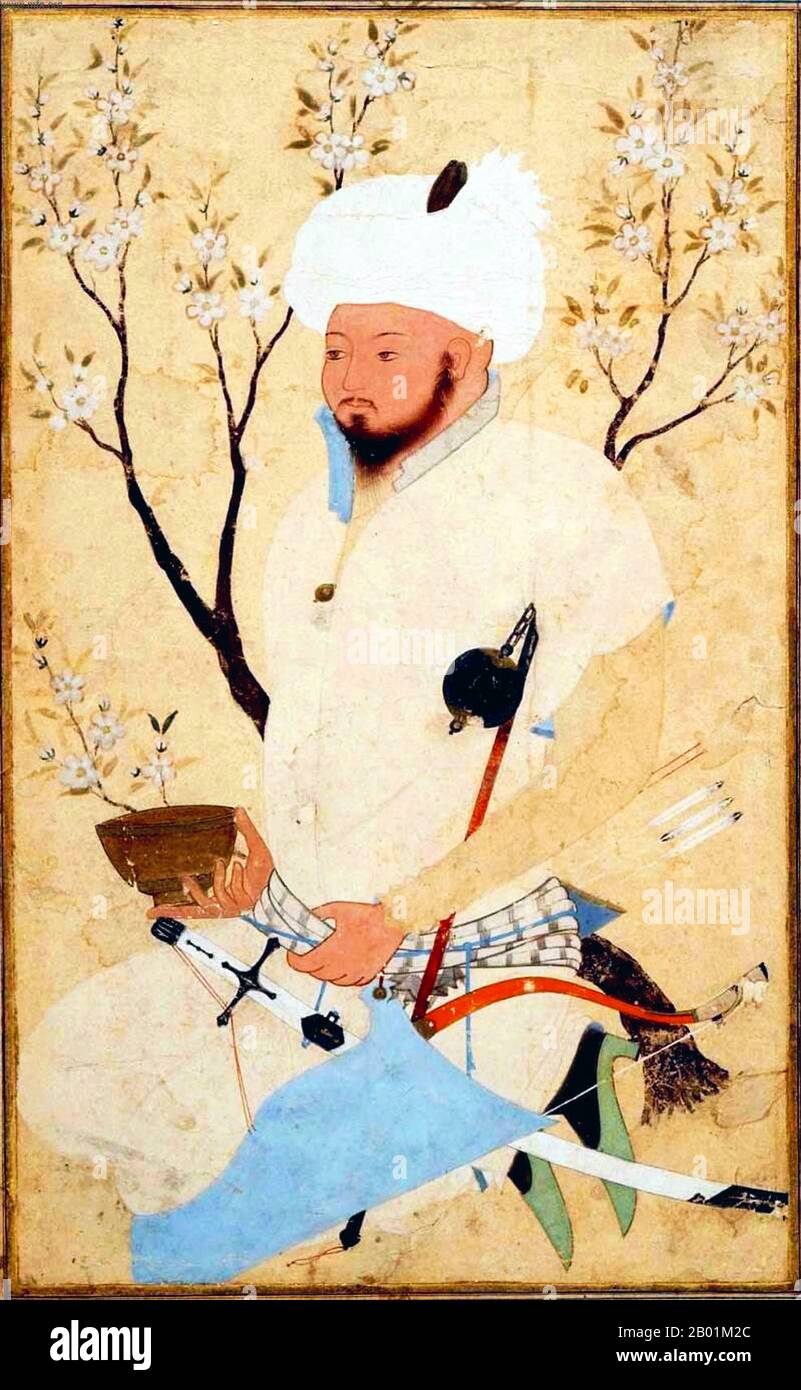 Iran/Persia: Emir resting under a tree. Miniature painting by Shaykh Muhammad (fl. 16th century), c. 1557. The Safavid Dynasty was one of the most significant ruling dynasties of Iran. They ruled one of the greatest Persian empires since the Muslim conquest of Persia and established the Twelver school of Shi'a Islam as the official religion of their empire, marking one of the most important turning points in Muslim history. The Safavids ruled from 1501 to 1722 (experiencing a brief restoration from 1729 to 1736). Stock Photohttps://www.alamy.com/image-license-details/?v=1https://www.alamy.com/iranpersia-emir-resting-under-a-tree-miniature-painting-by-shaykh-muhammad-fl-16th-century-c-1557-the-safavid-dynasty-was-one-of-the-most-significant-ruling-dynasties-of-iran-they-ruled-one-of-the-greatest-persian-empires-since-the-muslim-conquest-of-persia-and-established-the-twelver-school-of-shia-islam-as-the-official-religion-of-their-empire-marking-one-of-the-most-important-turning-points-in-muslim-history-the-safavids-ruled-from-1501-to-1722-experiencing-a-brief-restoration-from-1729-to-1736-image344245060.html
Iran/Persia: Emir resting under a tree. Miniature painting by Shaykh Muhammad (fl. 16th century), c. 1557. The Safavid Dynasty was one of the most significant ruling dynasties of Iran. They ruled one of the greatest Persian empires since the Muslim conquest of Persia and established the Twelver school of Shi'a Islam as the official religion of their empire, marking one of the most important turning points in Muslim history. The Safavids ruled from 1501 to 1722 (experiencing a brief restoration from 1729 to 1736). Stock Photohttps://www.alamy.com/image-license-details/?v=1https://www.alamy.com/iranpersia-emir-resting-under-a-tree-miniature-painting-by-shaykh-muhammad-fl-16th-century-c-1557-the-safavid-dynasty-was-one-of-the-most-significant-ruling-dynasties-of-iran-they-ruled-one-of-the-greatest-persian-empires-since-the-muslim-conquest-of-persia-and-established-the-twelver-school-of-shia-islam-as-the-official-religion-of-their-empire-marking-one-of-the-most-important-turning-points-in-muslim-history-the-safavids-ruled-from-1501-to-1722-experiencing-a-brief-restoration-from-1729-to-1736-image344245060.htmlRM2B01M2C–Iran/Persia: Emir resting under a tree. Miniature painting by Shaykh Muhammad (fl. 16th century), c. 1557. The Safavid Dynasty was one of the most significant ruling dynasties of Iran. They ruled one of the greatest Persian empires since the Muslim conquest of Persia and established the Twelver school of Shi'a Islam as the official religion of their empire, marking one of the most important turning points in Muslim history. The Safavids ruled from 1501 to 1722 (experiencing a brief restoration from 1729 to 1736).
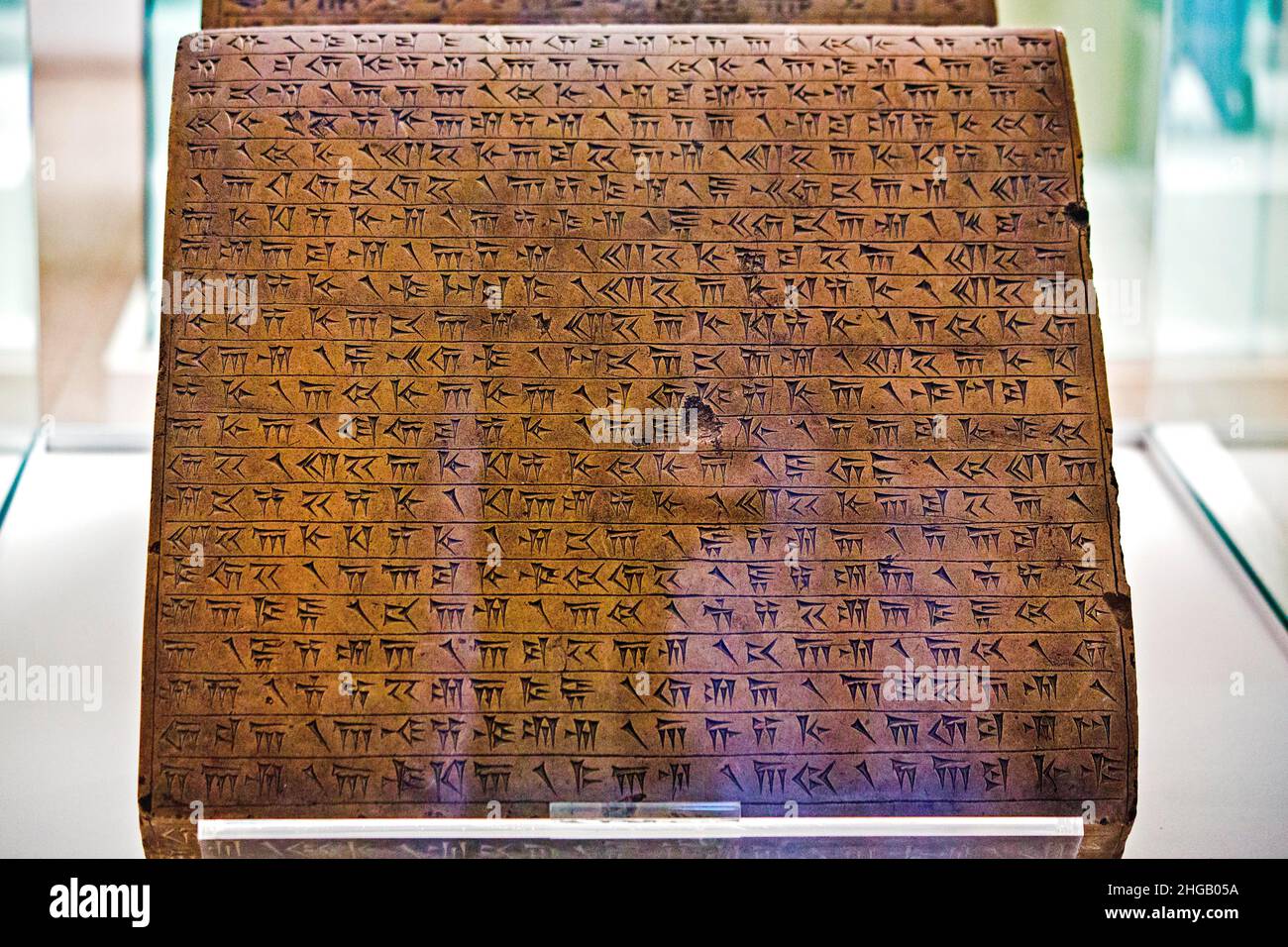 Stone tablet with ancient Persian inscription of King Xerxes I the Great Persia, ca. 486-465 BC National Museum, Tehran, Tehran, Iran Stock Photohttps://www.alamy.com/image-license-details/?v=1https://www.alamy.com/stone-tablet-with-ancient-persian-inscription-of-king-xerxes-i-the-great-persia-ca-486-465-bc-national-museum-tehran-tehran-iran-image457545686.html
Stone tablet with ancient Persian inscription of King Xerxes I the Great Persia, ca. 486-465 BC National Museum, Tehran, Tehran, Iran Stock Photohttps://www.alamy.com/image-license-details/?v=1https://www.alamy.com/stone-tablet-with-ancient-persian-inscription-of-king-xerxes-i-the-great-persia-ca-486-465-bc-national-museum-tehran-tehran-iran-image457545686.htmlRM2HGB05A–Stone tablet with ancient Persian inscription of King Xerxes I the Great Persia, ca. 486-465 BC National Museum, Tehran, Tehran, Iran
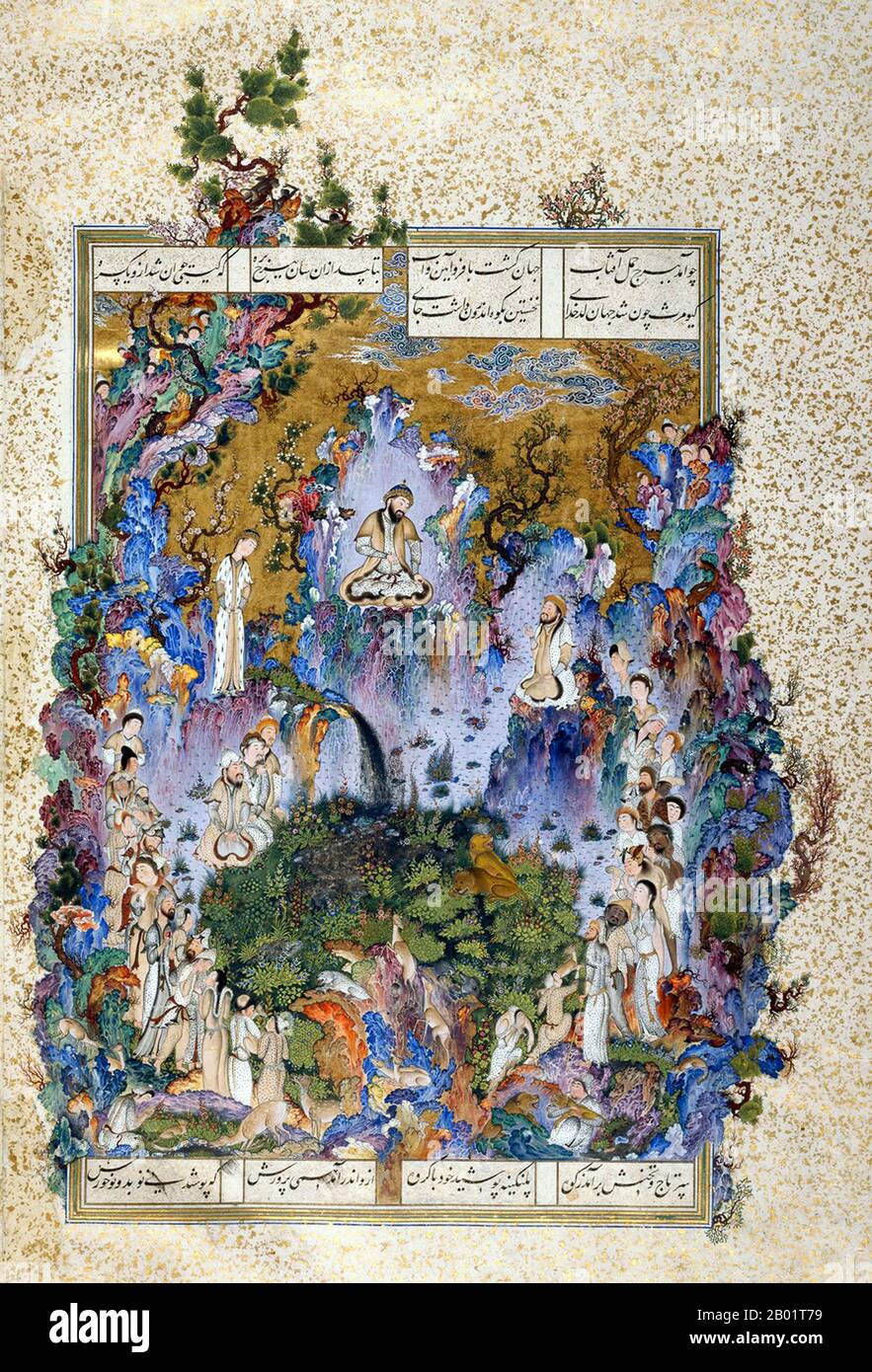 Iran/Persia: 'The Court of Kayumars'. Folio from the Shahnameh (Book of Kings) of Shah Tahmasp by Sultan Muhammad (c. 1470s-1555), c. 1522-1525. Gayumarth (sometimes Gayumars), first Shah of Iran, is enthroned among his courtiers clad in leopard skins at the opening of the Shahnama-yi Shahi (The King's Book of Kings). This miniature was probably painted by the court painter Sultan Mohammed, and is considered by some to be the most beautiful image in all Persian art. The picture was painted at the request of Shah Tahmasp. Stock Photohttps://www.alamy.com/image-license-details/?v=1https://www.alamy.com/iranpersia-the-court-of-kayumars-folio-from-the-shahnameh-book-of-kings-of-shah-tahmasp-by-sultan-muhammad-c-1470s-1555-c-1522-1525-gayumarth-sometimes-gayumars-first-shah-of-iran-is-enthroned-among-his-courtiers-clad-in-leopard-skins-at-the-opening-of-the-shahnama-yi-shahi-the-kings-book-of-kings-this-miniature-was-probably-painted-by-the-court-painter-sultan-mohammed-and-is-considered-by-some-to-be-the-most-beautiful-image-in-all-persian-art-the-picture-was-painted-at-the-request-of-shah-tahmasp-image344248333.html
Iran/Persia: 'The Court of Kayumars'. Folio from the Shahnameh (Book of Kings) of Shah Tahmasp by Sultan Muhammad (c. 1470s-1555), c. 1522-1525. Gayumarth (sometimes Gayumars), first Shah of Iran, is enthroned among his courtiers clad in leopard skins at the opening of the Shahnama-yi Shahi (The King's Book of Kings). This miniature was probably painted by the court painter Sultan Mohammed, and is considered by some to be the most beautiful image in all Persian art. The picture was painted at the request of Shah Tahmasp. Stock Photohttps://www.alamy.com/image-license-details/?v=1https://www.alamy.com/iranpersia-the-court-of-kayumars-folio-from-the-shahnameh-book-of-kings-of-shah-tahmasp-by-sultan-muhammad-c-1470s-1555-c-1522-1525-gayumarth-sometimes-gayumars-first-shah-of-iran-is-enthroned-among-his-courtiers-clad-in-leopard-skins-at-the-opening-of-the-shahnama-yi-shahi-the-kings-book-of-kings-this-miniature-was-probably-painted-by-the-court-painter-sultan-mohammed-and-is-considered-by-some-to-be-the-most-beautiful-image-in-all-persian-art-the-picture-was-painted-at-the-request-of-shah-tahmasp-image344248333.htmlRM2B01T79–Iran/Persia: 'The Court of Kayumars'. Folio from the Shahnameh (Book of Kings) of Shah Tahmasp by Sultan Muhammad (c. 1470s-1555), c. 1522-1525. Gayumarth (sometimes Gayumars), first Shah of Iran, is enthroned among his courtiers clad in leopard skins at the opening of the Shahnama-yi Shahi (The King's Book of Kings). This miniature was probably painted by the court painter Sultan Mohammed, and is considered by some to be the most beautiful image in all Persian art. The picture was painted at the request of Shah Tahmasp.
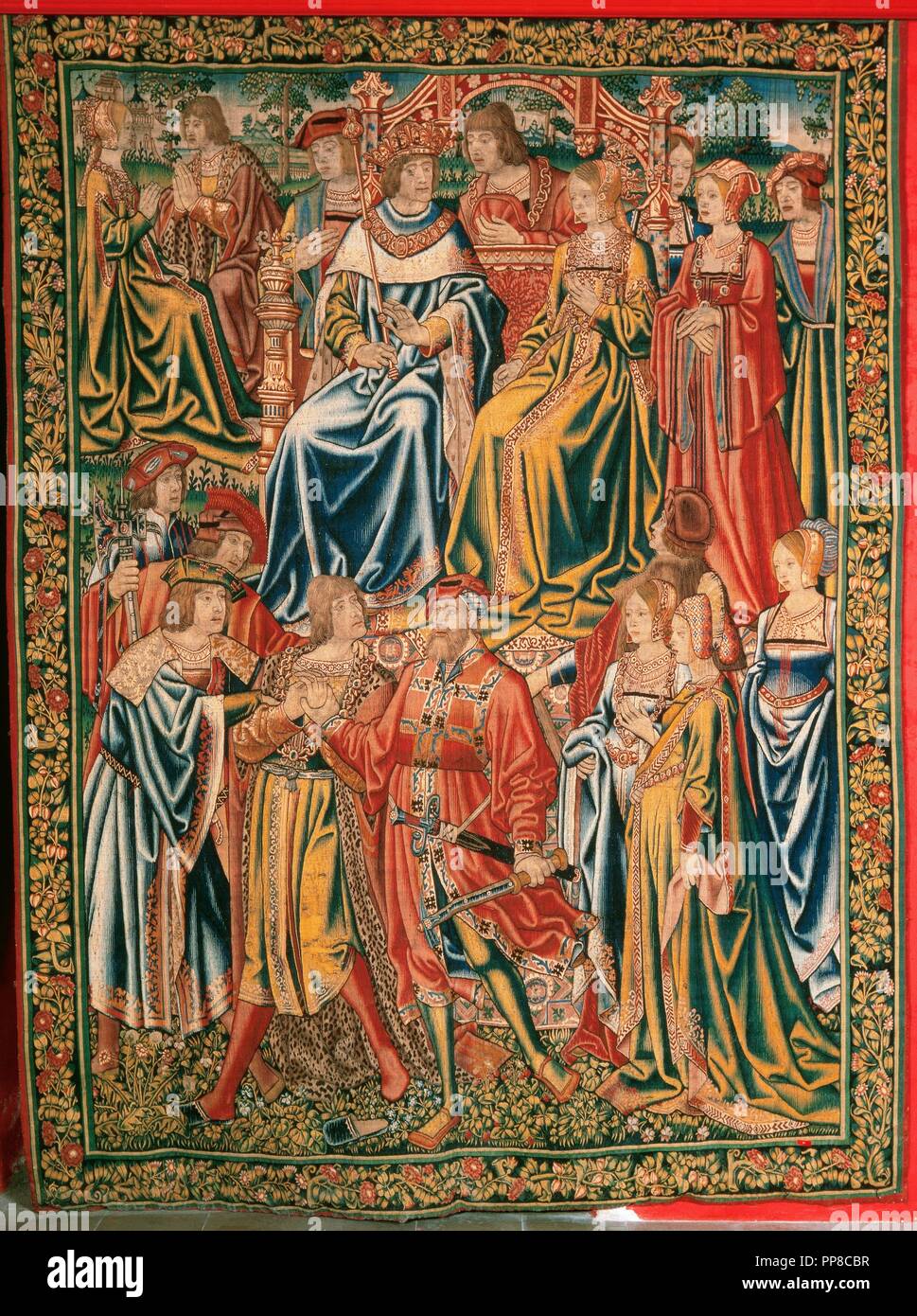 Flemish tapestry. 15th-16th century. The Hebrew Esther, queen of Persia. 5th century BC. Probably made in Brussels. Capitular Museum of Lleida. Catalonia, Spain. Stock Photohttps://www.alamy.com/image-license-details/?v=1https://www.alamy.com/flemish-tapestry-15th-16th-century-the-hebrew-esther-queen-of-persia-5th-century-bc-probably-made-in-brussels-capitular-museum-of-lleida-catalonia-spain-image220232203.html
Flemish tapestry. 15th-16th century. The Hebrew Esther, queen of Persia. 5th century BC. Probably made in Brussels. Capitular Museum of Lleida. Catalonia, Spain. Stock Photohttps://www.alamy.com/image-license-details/?v=1https://www.alamy.com/flemish-tapestry-15th-16th-century-the-hebrew-esther-queen-of-persia-5th-century-bc-probably-made-in-brussels-capitular-museum-of-lleida-catalonia-spain-image220232203.htmlRMPP8CBR–Flemish tapestry. 15th-16th century. The Hebrew Esther, queen of Persia. 5th century BC. Probably made in Brussels. Capitular Museum of Lleida. Catalonia, Spain.
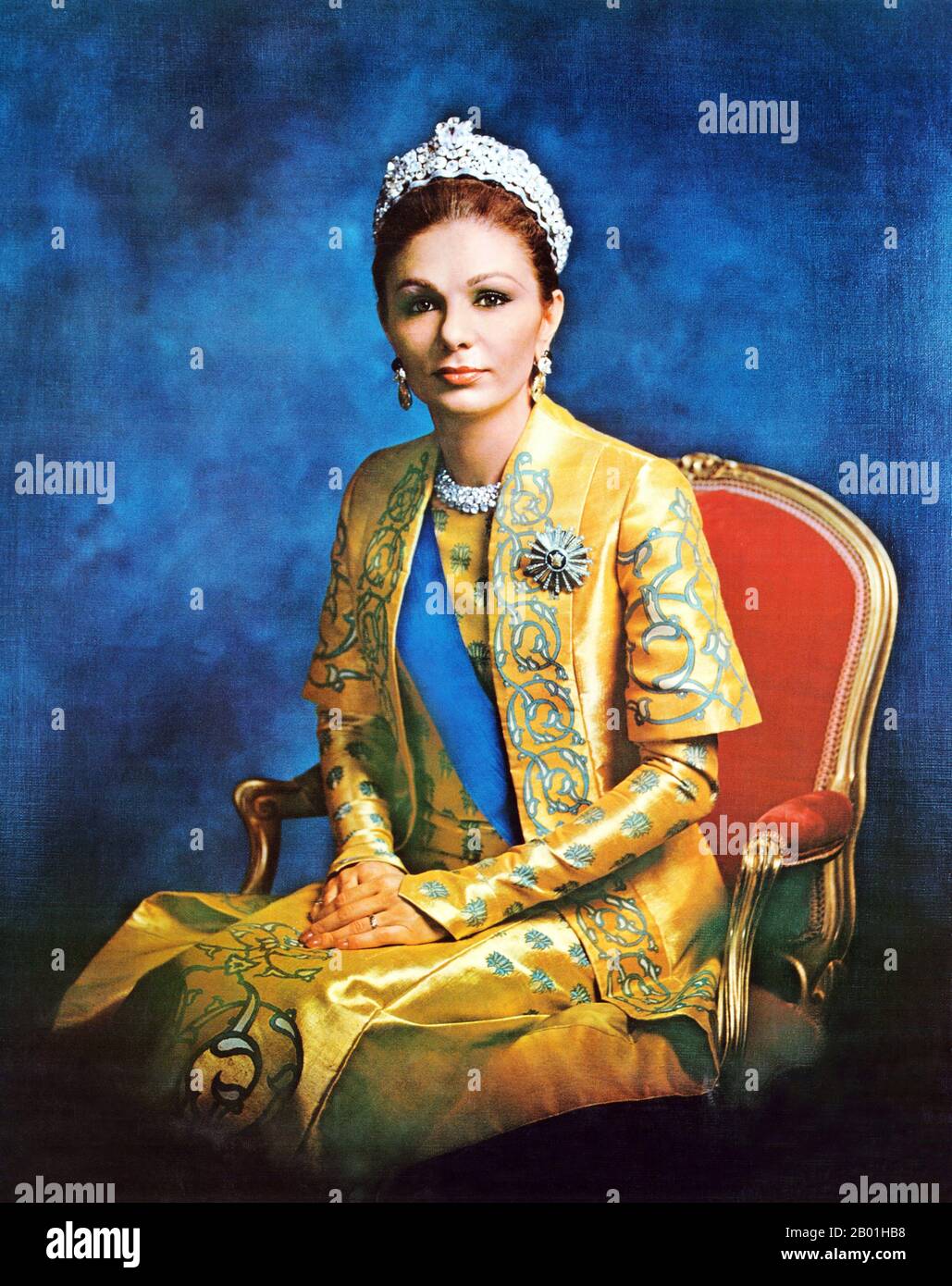 Iran/Persia: Official portrait of Empress Farah Pahlavi (born 13 October 1938), wife and widow of Mohammad Reza Pahlavi (1919-1979), the last Shah of Iran, 1973. Farah Pahlavi, born Farah Diba, is the former Queen and Empress of Iran. She is the widow of Mohammad Reza Pahlavi, the Shah of Iran, and only Empress (Shahbanou) of modern Iran. She was Queen consort of Iran from 1959 until 1967 and Empress consort from 1967 until exile in 1979. Stock Photohttps://www.alamy.com/image-license-details/?v=1https://www.alamy.com/iranpersia-official-portrait-of-empress-farah-pahlavi-born-13-october-1938-wife-and-widow-of-mohammad-reza-pahlavi-1919-1979-the-last-shah-of-iran-1973-farah-pahlavi-born-farah-diba-is-the-former-queen-and-empress-of-iran-she-is-the-widow-of-mohammad-reza-pahlavi-the-shah-of-iran-and-only-empress-shahbanou-of-modern-iran-she-was-queen-consort-of-iran-from-1959-until-1967-and-empress-consort-from-1967-until-exile-in-1979-image344242956.html
Iran/Persia: Official portrait of Empress Farah Pahlavi (born 13 October 1938), wife and widow of Mohammad Reza Pahlavi (1919-1979), the last Shah of Iran, 1973. Farah Pahlavi, born Farah Diba, is the former Queen and Empress of Iran. She is the widow of Mohammad Reza Pahlavi, the Shah of Iran, and only Empress (Shahbanou) of modern Iran. She was Queen consort of Iran from 1959 until 1967 and Empress consort from 1967 until exile in 1979. Stock Photohttps://www.alamy.com/image-license-details/?v=1https://www.alamy.com/iranpersia-official-portrait-of-empress-farah-pahlavi-born-13-october-1938-wife-and-widow-of-mohammad-reza-pahlavi-1919-1979-the-last-shah-of-iran-1973-farah-pahlavi-born-farah-diba-is-the-former-queen-and-empress-of-iran-she-is-the-widow-of-mohammad-reza-pahlavi-the-shah-of-iran-and-only-empress-shahbanou-of-modern-iran-she-was-queen-consort-of-iran-from-1959-until-1967-and-empress-consort-from-1967-until-exile-in-1979-image344242956.htmlRM2B01HB8–Iran/Persia: Official portrait of Empress Farah Pahlavi (born 13 October 1938), wife and widow of Mohammad Reza Pahlavi (1919-1979), the last Shah of Iran, 1973. Farah Pahlavi, born Farah Diba, is the former Queen and Empress of Iran. She is the widow of Mohammad Reza Pahlavi, the Shah of Iran, and only Empress (Shahbanou) of modern Iran. She was Queen consort of Iran from 1959 until 1967 and Empress consort from 1967 until exile in 1979.
 'Mogul of Persia', 1838. Artist: Unknown. Stock Photohttps://www.alamy.com/image-license-details/?v=1https://www.alamy.com/mogul-of-persia-1838-artist-unknown-image262790537.html
'Mogul of Persia', 1838. Artist: Unknown. Stock Photohttps://www.alamy.com/image-license-details/?v=1https://www.alamy.com/mogul-of-persia-1838-artist-unknown-image262790537.htmlRMW7F409–'Mogul of Persia', 1838. Artist: Unknown.
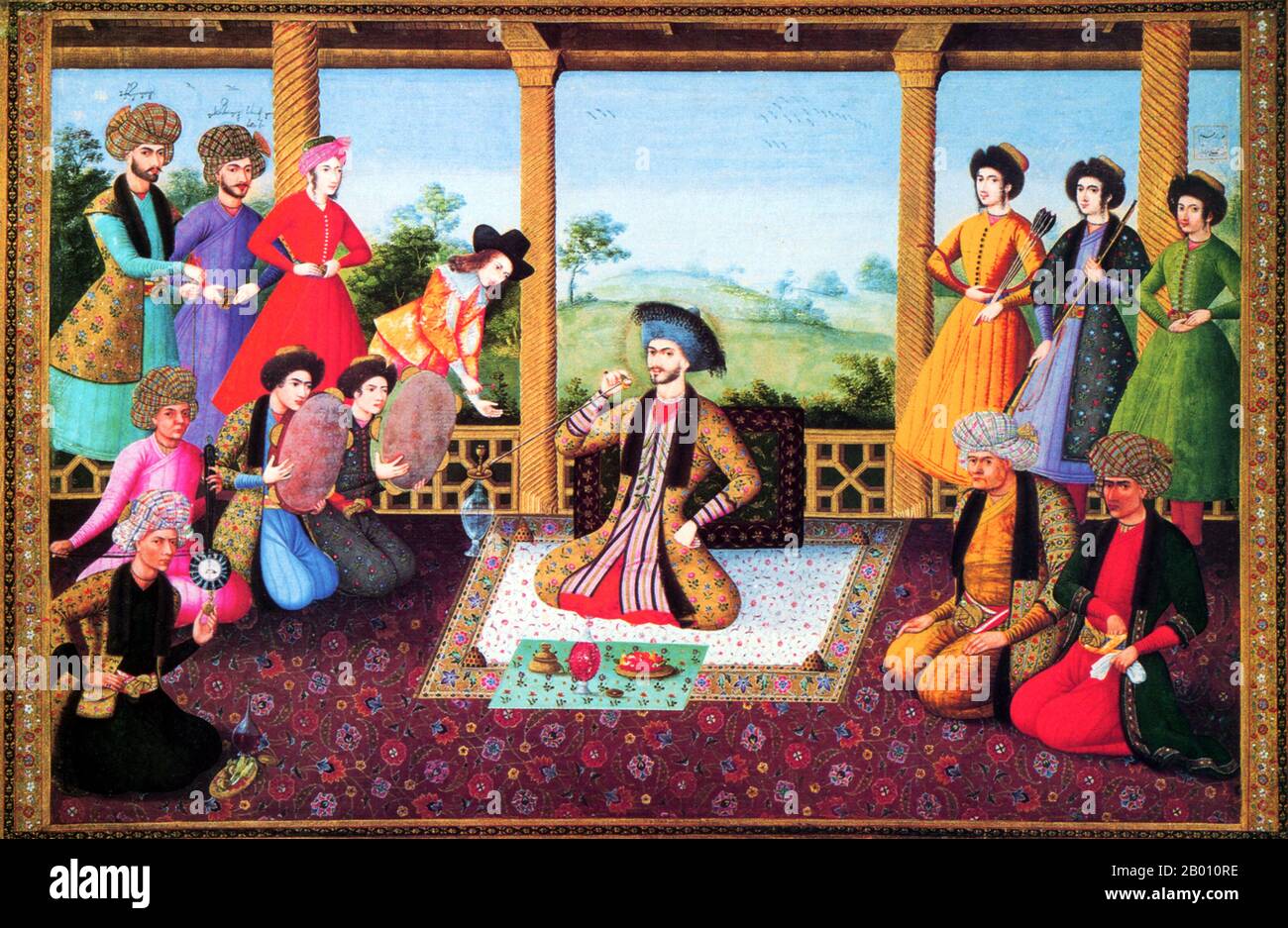 Iran: A painting by Ali-Quli Jabbadar (1666-1694) depicting a 17th-century royal garden pavilion scene from the court of the Safavid Shah Sulaiman. The Safavids were one of the most significant ruling dynasties of Persia and established the Twelver school of Shi'a Islam as the official religion of their empire, marking one of the most important turning points in the history of Islam. This Shia dynasty was of mixed ancestry: Kurdish, Azerbaijani, Georgian and Greek, and ruled Iran from 1501 to 1722. Stock Photohttps://www.alamy.com/image-license-details/?v=1https://www.alamy.com/iran-a-painting-by-ali-quli-jabbadar-1666-1694-depicting-a-17th-century-royal-garden-pavilion-scene-from-the-court-of-the-safavid-shah-sulaiman-the-safavids-were-one-of-the-most-significant-ruling-dynasties-of-persia-and-established-the-twelver-school-of-shia-islam-as-the-official-religion-of-their-empire-marking-one-of-the-most-important-turning-points-in-the-history-of-islam-this-shia-dynasty-was-of-mixed-ancestry-kurdish-azerbaijani-georgian-and-greek-and-ruled-iran-from-1501-to-1722-image344229970.html
Iran: A painting by Ali-Quli Jabbadar (1666-1694) depicting a 17th-century royal garden pavilion scene from the court of the Safavid Shah Sulaiman. The Safavids were one of the most significant ruling dynasties of Persia and established the Twelver school of Shi'a Islam as the official religion of their empire, marking one of the most important turning points in the history of Islam. This Shia dynasty was of mixed ancestry: Kurdish, Azerbaijani, Georgian and Greek, and ruled Iran from 1501 to 1722. Stock Photohttps://www.alamy.com/image-license-details/?v=1https://www.alamy.com/iran-a-painting-by-ali-quli-jabbadar-1666-1694-depicting-a-17th-century-royal-garden-pavilion-scene-from-the-court-of-the-safavid-shah-sulaiman-the-safavids-were-one-of-the-most-significant-ruling-dynasties-of-persia-and-established-the-twelver-school-of-shia-islam-as-the-official-religion-of-their-empire-marking-one-of-the-most-important-turning-points-in-the-history-of-islam-this-shia-dynasty-was-of-mixed-ancestry-kurdish-azerbaijani-georgian-and-greek-and-ruled-iran-from-1501-to-1722-image344229970.htmlRM2B010RE–Iran: A painting by Ali-Quli Jabbadar (1666-1694) depicting a 17th-century royal garden pavilion scene from the court of the Safavid Shah Sulaiman. The Safavids were one of the most significant ruling dynasties of Persia and established the Twelver school of Shi'a Islam as the official religion of their empire, marking one of the most important turning points in the history of Islam. This Shia dynasty was of mixed ancestry: Kurdish, Azerbaijani, Georgian and Greek, and ruled Iran from 1501 to 1722.
 Portrait of Alexander the Great (356 BC-323 BC). Most likely a work of the sculptor from Athens Leochares. 340-330 BC. Acropolis Museum. Athens. Greece. Stock Photohttps://www.alamy.com/image-license-details/?v=1https://www.alamy.com/portrait-of-alexander-the-great-356-bc-323-bc-most-likely-a-work-of-the-sculptor-from-athens-leochares-340-330-bc-acropolis-museum-athens-greece-image182767579.html
Portrait of Alexander the Great (356 BC-323 BC). Most likely a work of the sculptor from Athens Leochares. 340-330 BC. Acropolis Museum. Athens. Greece. Stock Photohttps://www.alamy.com/image-license-details/?v=1https://www.alamy.com/portrait-of-alexander-the-great-356-bc-323-bc-most-likely-a-work-of-the-sculptor-from-athens-leochares-340-330-bc-acropolis-museum-athens-greece-image182767579.htmlRMMH9NWF–Portrait of Alexander the Great (356 BC-323 BC). Most likely a work of the sculptor from Athens Leochares. 340-330 BC. Acropolis Museum. Athens. Greece.
 Iran/Persia: Drawing of Cyrus the Great (r. 559–530 BCE) from an Achamenid bas-relief. Cyrus II of Persia, also known as Cyrus the Great or Cyrus the Elder, was the founder of the Achaemenid Empire. Under his rule, the empire embraced all the previous civilised states of the ancient Near East, expanded vastly and eventually conquered most of Southwest Asia and much of Central Asia and the Caucasus. From the Mediterranean sea and Hellespont in the west to the Indus River in the east, Cyrus created the largest empire the world had yet seen. Stock Photohttps://www.alamy.com/image-license-details/?v=1https://www.alamy.com/iranpersia-drawing-of-cyrus-the-great-r-559530-bce-from-an-achamenid-bas-relief-cyrus-ii-of-persia-also-known-as-cyrus-the-great-or-cyrus-the-elder-was-the-founder-of-the-achaemenid-empire-under-his-rule-the-empire-embraced-all-the-previous-civilised-states-of-the-ancient-near-east-expanded-vastly-and-eventually-conquered-most-of-southwest-asia-and-much-of-central-asia-and-the-caucasus-from-the-mediterranean-sea-and-hellespont-in-the-west-to-the-indus-river-in-the-east-cyrus-created-the-largest-empire-the-world-had-yet-seen-image344251522.html
Iran/Persia: Drawing of Cyrus the Great (r. 559–530 BCE) from an Achamenid bas-relief. Cyrus II of Persia, also known as Cyrus the Great or Cyrus the Elder, was the founder of the Achaemenid Empire. Under his rule, the empire embraced all the previous civilised states of the ancient Near East, expanded vastly and eventually conquered most of Southwest Asia and much of Central Asia and the Caucasus. From the Mediterranean sea and Hellespont in the west to the Indus River in the east, Cyrus created the largest empire the world had yet seen. Stock Photohttps://www.alamy.com/image-license-details/?v=1https://www.alamy.com/iranpersia-drawing-of-cyrus-the-great-r-559530-bce-from-an-achamenid-bas-relief-cyrus-ii-of-persia-also-known-as-cyrus-the-great-or-cyrus-the-elder-was-the-founder-of-the-achaemenid-empire-under-his-rule-the-empire-embraced-all-the-previous-civilised-states-of-the-ancient-near-east-expanded-vastly-and-eventually-conquered-most-of-southwest-asia-and-much-of-central-asia-and-the-caucasus-from-the-mediterranean-sea-and-hellespont-in-the-west-to-the-indus-river-in-the-east-cyrus-created-the-largest-empire-the-world-had-yet-seen-image344251522.htmlRM2B02096–Iran/Persia: Drawing of Cyrus the Great (r. 559–530 BCE) from an Achamenid bas-relief. Cyrus II of Persia, also known as Cyrus the Great or Cyrus the Elder, was the founder of the Achaemenid Empire. Under his rule, the empire embraced all the previous civilised states of the ancient Near East, expanded vastly and eventually conquered most of Southwest Asia and much of Central Asia and the Caucasus. From the Mediterranean sea and Hellespont in the west to the Indus River in the east, Cyrus created the largest empire the world had yet seen.
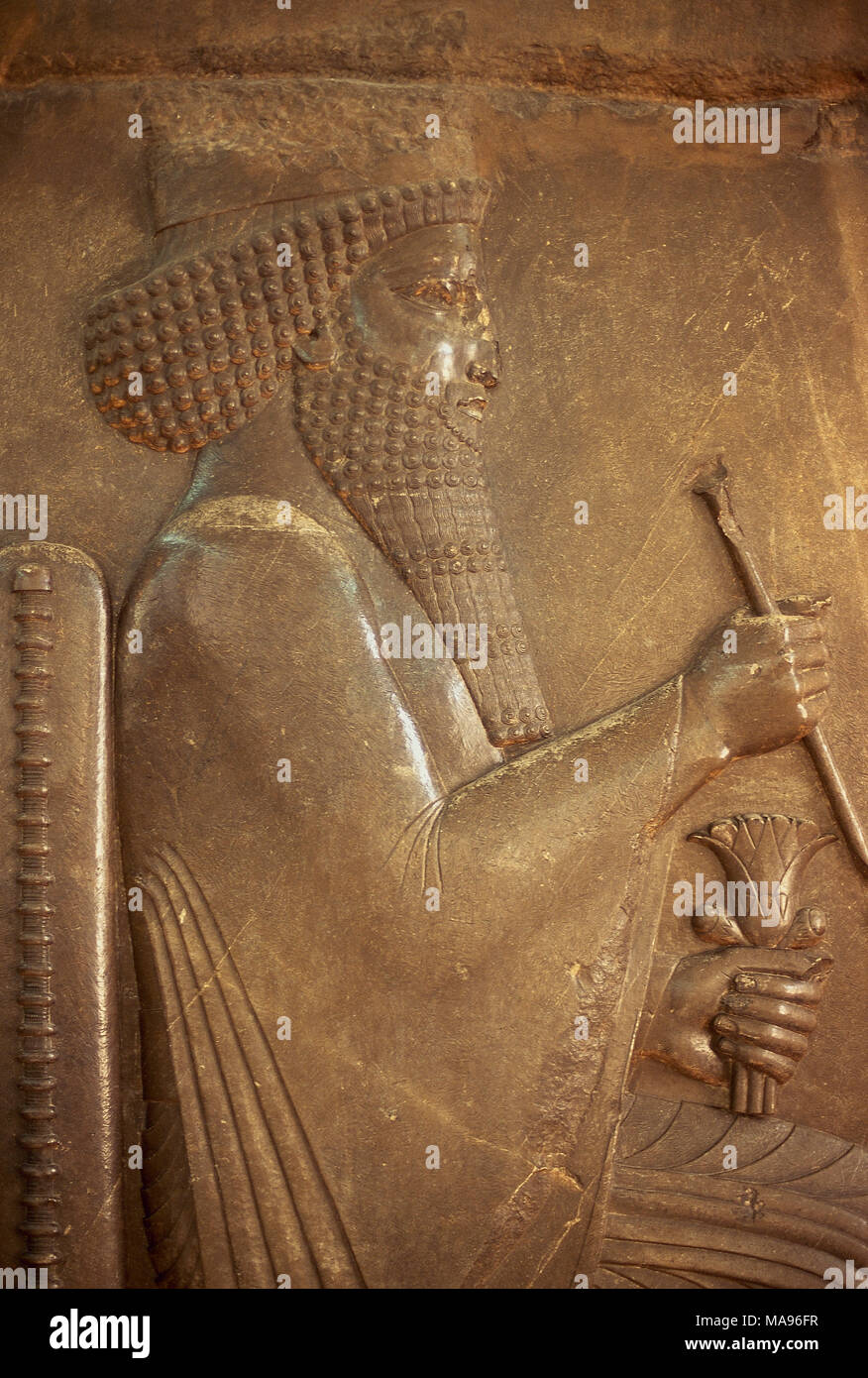 Achaemenid Empire. Palace of Persepolis. Relief of King Darius the Great (521-485 BC). 5th century BC. Archaeological Museum of Tehran, Islamic Republic of Iran. Stock Photohttps://www.alamy.com/image-license-details/?v=1https://www.alamy.com/achaemenid-empire-palace-of-persepolis-relief-of-king-darius-the-great-521-485-bc-5th-century-bc-archaeological-museum-of-tehran-islamic-republic-of-iran-image178452955.html
Achaemenid Empire. Palace of Persepolis. Relief of King Darius the Great (521-485 BC). 5th century BC. Archaeological Museum of Tehran, Islamic Republic of Iran. Stock Photohttps://www.alamy.com/image-license-details/?v=1https://www.alamy.com/achaemenid-empire-palace-of-persepolis-relief-of-king-darius-the-great-521-485-bc-5th-century-bc-archaeological-museum-of-tehran-islamic-republic-of-iran-image178452955.htmlRMMA96FR–Achaemenid Empire. Palace of Persepolis. Relief of King Darius the Great (521-485 BC). 5th century BC. Archaeological Museum of Tehran, Islamic Republic of Iran.
 Iran/Persia: Bahram Gur recognises Dilaram by the music she plays to enchant animals. Miniature painting from a manuscript of Amir Khusraw's Hasht-Bihisht, Safavid, 1609. Bahram V (406-438) was the fourteenth Sassanid King of Persia (r. 421-438). Also called Bahram Gur or Bahramgur, he was a son of Yazdegerd I (r. 399-421), after whose sudden death (or assassination) he gained the crown against the opposition of the grandees by the help of Mundhir, the Arab dynast of al-Hirah. Stock Photohttps://www.alamy.com/image-license-details/?v=1https://www.alamy.com/iranpersia-bahram-gur-recognises-dilaram-by-the-music-she-plays-to-enchant-animals-miniature-painting-from-a-manuscript-of-amir-khusraws-hasht-bihisht-safavid-1609-bahram-v-406-438-was-the-fourteenth-sassanid-king-of-persia-r-421-438-also-called-bahram-gur-or-bahramgur-he-was-a-son-of-yazdegerd-i-r-399-421-after-whose-sudden-death-or-assassination-he-gained-the-crown-against-the-opposition-of-the-grandees-by-the-help-of-mundhir-the-arab-dynast-of-al-hirah-image344249743.html
Iran/Persia: Bahram Gur recognises Dilaram by the music she plays to enchant animals. Miniature painting from a manuscript of Amir Khusraw's Hasht-Bihisht, Safavid, 1609. Bahram V (406-438) was the fourteenth Sassanid King of Persia (r. 421-438). Also called Bahram Gur or Bahramgur, he was a son of Yazdegerd I (r. 399-421), after whose sudden death (or assassination) he gained the crown against the opposition of the grandees by the help of Mundhir, the Arab dynast of al-Hirah. Stock Photohttps://www.alamy.com/image-license-details/?v=1https://www.alamy.com/iranpersia-bahram-gur-recognises-dilaram-by-the-music-she-plays-to-enchant-animals-miniature-painting-from-a-manuscript-of-amir-khusraws-hasht-bihisht-safavid-1609-bahram-v-406-438-was-the-fourteenth-sassanid-king-of-persia-r-421-438-also-called-bahram-gur-or-bahramgur-he-was-a-son-of-yazdegerd-i-r-399-421-after-whose-sudden-death-or-assassination-he-gained-the-crown-against-the-opposition-of-the-grandees-by-the-help-of-mundhir-the-arab-dynast-of-al-hirah-image344249743.htmlRM2B01X1K–Iran/Persia: Bahram Gur recognises Dilaram by the music she plays to enchant animals. Miniature painting from a manuscript of Amir Khusraw's Hasht-Bihisht, Safavid, 1609. Bahram V (406-438) was the fourteenth Sassanid King of Persia (r. 421-438). Also called Bahram Gur or Bahramgur, he was a son of Yazdegerd I (r. 399-421), after whose sudden death (or assassination) he gained the crown against the opposition of the grandees by the help of Mundhir, the Arab dynast of al-Hirah.
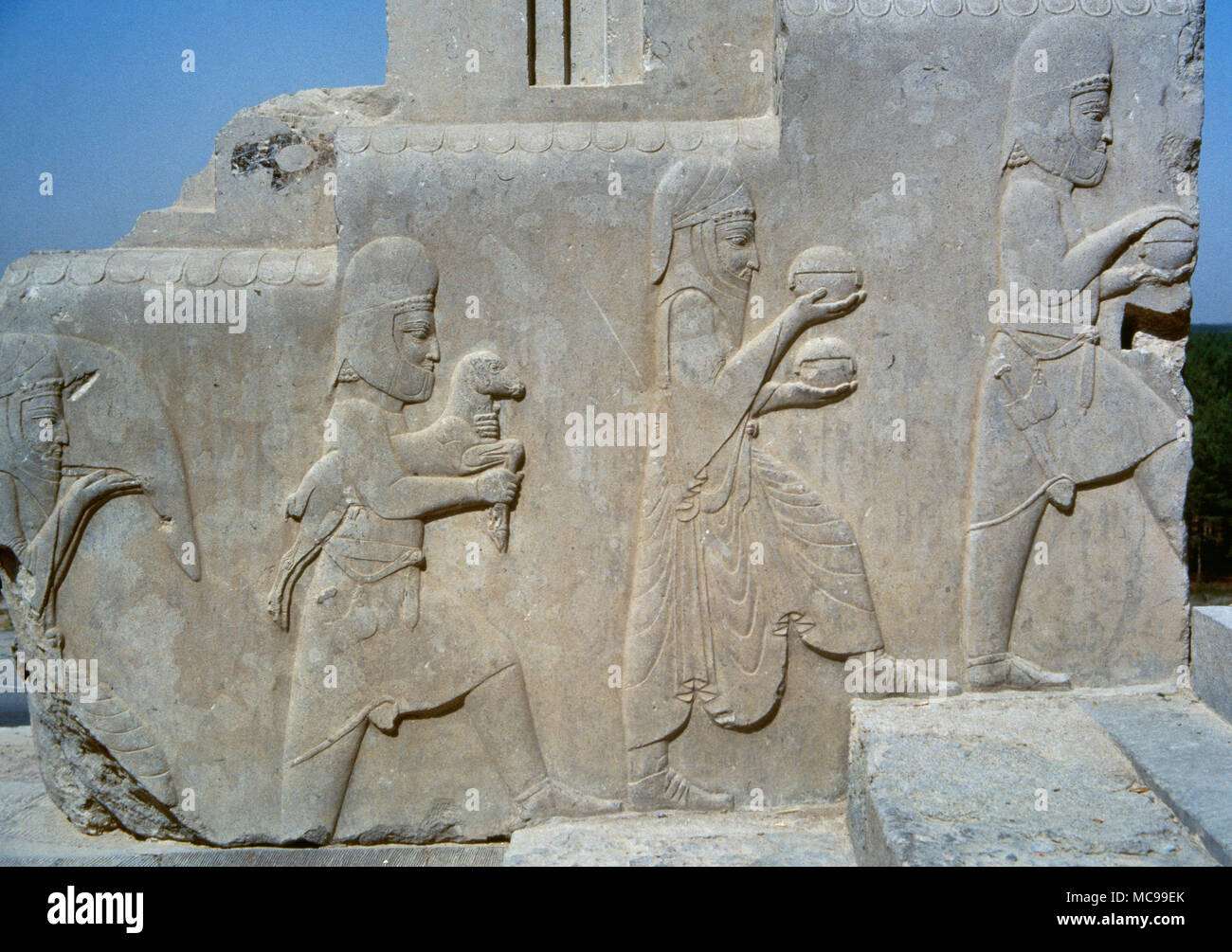 Achaemenid Empire. Persepolis. Apadana, The Audience Hall of Darius. Delivery of tributes to the Persian king by the Cilicians (vassal nation), 5th century BC. Slaves carrying gifts. Islamic Republic of Iran. Stock Photohttps://www.alamy.com/image-license-details/?v=1https://www.alamy.com/achaemenid-empire-persepolis-apadana-the-audience-hall-of-darius-delivery-of-tributes-to-the-persian-king-by-the-cilicians-vassal-nation-5th-century-bc-slaves-carrying-gifts-islamic-republic-of-iran-image179684587.html
Achaemenid Empire. Persepolis. Apadana, The Audience Hall of Darius. Delivery of tributes to the Persian king by the Cilicians (vassal nation), 5th century BC. Slaves carrying gifts. Islamic Republic of Iran. Stock Photohttps://www.alamy.com/image-license-details/?v=1https://www.alamy.com/achaemenid-empire-persepolis-apadana-the-audience-hall-of-darius-delivery-of-tributes-to-the-persian-king-by-the-cilicians-vassal-nation-5th-century-bc-slaves-carrying-gifts-islamic-republic-of-iran-image179684587.htmlRMMC99EK–Achaemenid Empire. Persepolis. Apadana, The Audience Hall of Darius. Delivery of tributes to the Persian king by the Cilicians (vassal nation), 5th century BC. Slaves carrying gifts. Islamic Republic of Iran.
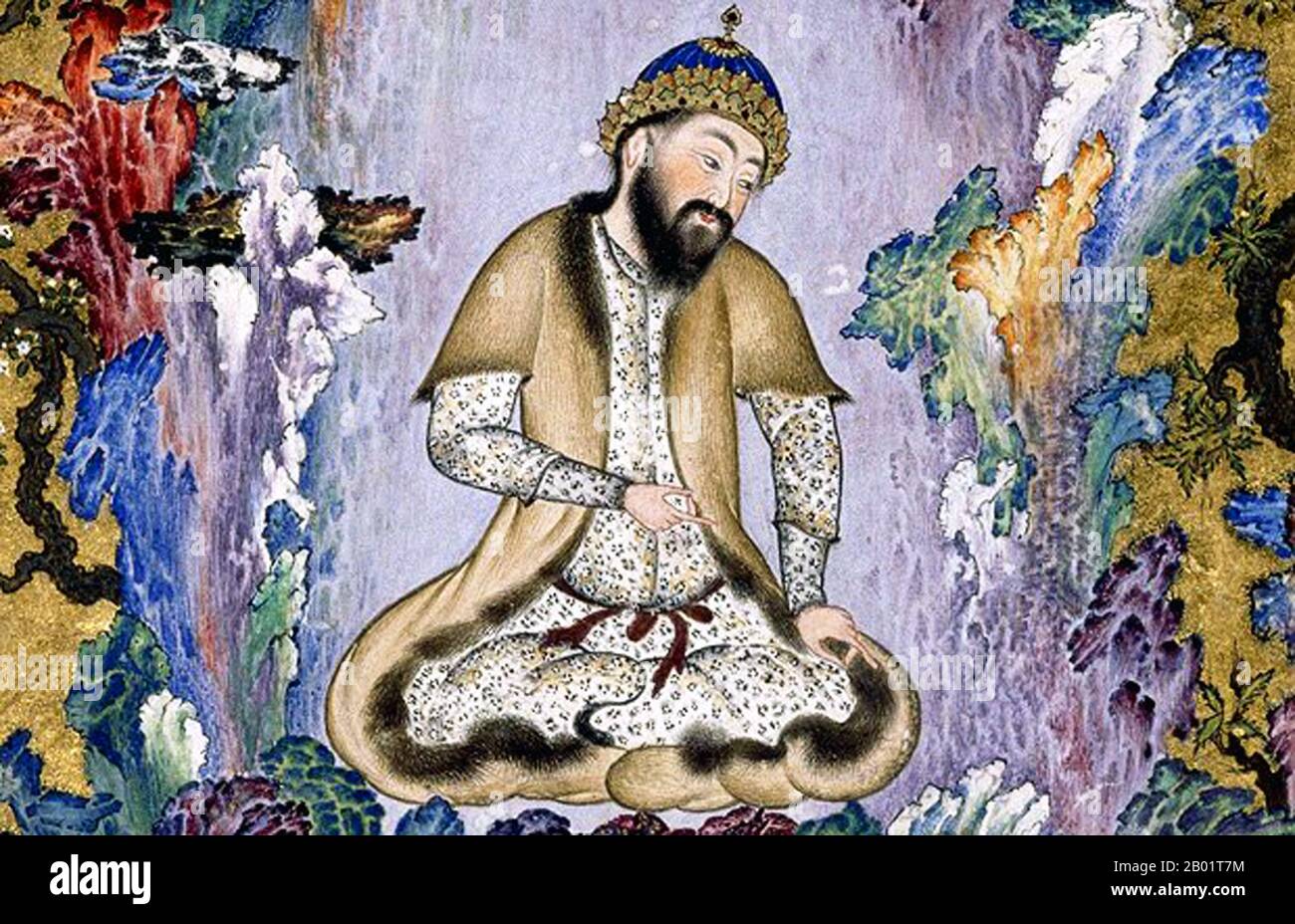 Iran/Persia: 'The Court of Kayumars'. Detail from a folio from the Shahnameh (Book of Kings) of Shah Tahmasp by Sultan Muhammad (c. 1470s-1555), c. 1522-1525. Gayumarth (sometimes Gayumars), first Shah of Iran, is enthroned among his courtiers clad in leopard skins at the opening of the Shahnama-yi Shahi (The King's Book of Kings). This miniature was probably painted by the court painter Sultan Mohammed, and is considered by some to be the most beautiful image in all Persian art. The picture was painted at the request of Shah Tahmasp. Stock Photohttps://www.alamy.com/image-license-details/?v=1https://www.alamy.com/iranpersia-the-court-of-kayumars-detail-from-a-folio-from-the-shahnameh-book-of-kings-of-shah-tahmasp-by-sultan-muhammad-c-1470s-1555-c-1522-1525-gayumarth-sometimes-gayumars-first-shah-of-iran-is-enthroned-among-his-courtiers-clad-in-leopard-skins-at-the-opening-of-the-shahnama-yi-shahi-the-kings-book-of-kings-this-miniature-was-probably-painted-by-the-court-painter-sultan-mohammed-and-is-considered-by-some-to-be-the-most-beautiful-image-in-all-persian-art-the-picture-was-painted-at-the-request-of-shah-tahmasp-image344248344.html
Iran/Persia: 'The Court of Kayumars'. Detail from a folio from the Shahnameh (Book of Kings) of Shah Tahmasp by Sultan Muhammad (c. 1470s-1555), c. 1522-1525. Gayumarth (sometimes Gayumars), first Shah of Iran, is enthroned among his courtiers clad in leopard skins at the opening of the Shahnama-yi Shahi (The King's Book of Kings). This miniature was probably painted by the court painter Sultan Mohammed, and is considered by some to be the most beautiful image in all Persian art. The picture was painted at the request of Shah Tahmasp. Stock Photohttps://www.alamy.com/image-license-details/?v=1https://www.alamy.com/iranpersia-the-court-of-kayumars-detail-from-a-folio-from-the-shahnameh-book-of-kings-of-shah-tahmasp-by-sultan-muhammad-c-1470s-1555-c-1522-1525-gayumarth-sometimes-gayumars-first-shah-of-iran-is-enthroned-among-his-courtiers-clad-in-leopard-skins-at-the-opening-of-the-shahnama-yi-shahi-the-kings-book-of-kings-this-miniature-was-probably-painted-by-the-court-painter-sultan-mohammed-and-is-considered-by-some-to-be-the-most-beautiful-image-in-all-persian-art-the-picture-was-painted-at-the-request-of-shah-tahmasp-image344248344.htmlRM2B01T7M–Iran/Persia: 'The Court of Kayumars'. Detail from a folio from the Shahnameh (Book of Kings) of Shah Tahmasp by Sultan Muhammad (c. 1470s-1555), c. 1522-1525. Gayumarth (sometimes Gayumars), first Shah of Iran, is enthroned among his courtiers clad in leopard skins at the opening of the Shahnama-yi Shahi (The King's Book of Kings). This miniature was probably painted by the court painter Sultan Mohammed, and is considered by some to be the most beautiful image in all Persian art. The picture was painted at the request of Shah Tahmasp.
 Portrait of Fath 'Ali Shah Qajar, Mihr 'Ali, Iranian, active ca. 1800-1830, Ink, opaque watercolor, and gold on paper, Iran, 1815, Qajar, Qajar Period, 3 1/2 x 5 in., 8.9 x 12.7 cm, beard, blue, iran, king, long beard, monarch, persia, persian, qajar, shah Stock Photohttps://www.alamy.com/image-license-details/?v=1https://www.alamy.com/portrait-of-fath-ali-shah-qajar-mihr-ali-iranian-active-ca-1800-1830-ink-opaque-watercolor-and-gold-on-paper-iran-1815-qajar-qajar-period-3-12-x-5-in-89-x-127-cm-beard-blue-iran-king-long-beard-monarch-persia-persian-qajar-shah-image454270298.html
Portrait of Fath 'Ali Shah Qajar, Mihr 'Ali, Iranian, active ca. 1800-1830, Ink, opaque watercolor, and gold on paper, Iran, 1815, Qajar, Qajar Period, 3 1/2 x 5 in., 8.9 x 12.7 cm, beard, blue, iran, king, long beard, monarch, persia, persian, qajar, shah Stock Photohttps://www.alamy.com/image-license-details/?v=1https://www.alamy.com/portrait-of-fath-ali-shah-qajar-mihr-ali-iranian-active-ca-1800-1830-ink-opaque-watercolor-and-gold-on-paper-iran-1815-qajar-qajar-period-3-12-x-5-in-89-x-127-cm-beard-blue-iran-king-long-beard-monarch-persia-persian-qajar-shah-image454270298.htmlRM2HB1PB6–Portrait of Fath 'Ali Shah Qajar, Mihr 'Ali, Iranian, active ca. 1800-1830, Ink, opaque watercolor, and gold on paper, Iran, 1815, Qajar, Qajar Period, 3 1/2 x 5 in., 8.9 x 12.7 cm, beard, blue, iran, king, long beard, monarch, persia, persian, qajar, shah
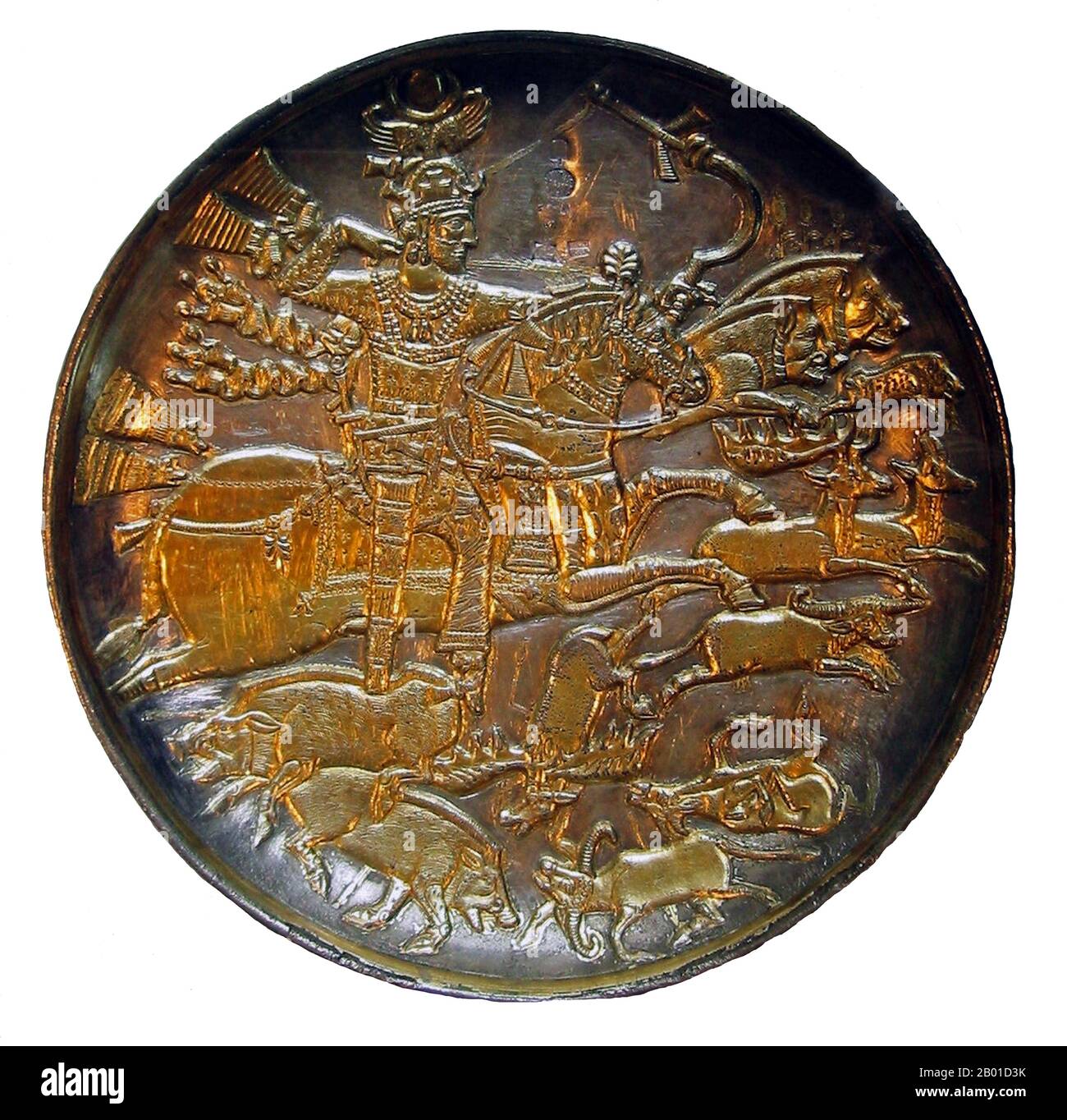 Iran: Hunting scene on a gilded silver bowl depicting King Khosrau I (512/514-579 CE), 7th century. Photo by World Imaging (CC BY-SA 3.0 License). Khosrau I (also called Xusro, Khosnow, Chusro, Khusro, Husraw or Khosrow, Chosroes in classical sources, most commonly known in Persian as Anushirvan, meaning the Immortal Soul), also known as Anushiravan the Just (r. 531-579), was the 25th Sassanid 'Shahanshah' (King of Kings) of Persia, and the most famous and celebrated of the Sasanian rulers. Stock Photohttps://www.alamy.com/image-license-details/?v=1https://www.alamy.com/iran-hunting-scene-on-a-gilded-silver-bowl-depicting-king-khosrau-i-512514-579-ce-7th-century-photo-by-world-imaging-cc-by-sa-30-license-khosrau-i-also-called-xusro-khosnow-chusro-khusro-husraw-or-khosrow-chosroes-in-classical-sources-most-commonly-known-in-persian-as-anushirvan-meaning-the-immortal-soul-also-known-as-anushiravan-the-just-r-531-579-was-the-25th-sassanid-shahanshah-king-of-kings-of-persia-and-the-most-famous-and-celebrated-of-the-sasanian-rulers-image344239607.html
Iran: Hunting scene on a gilded silver bowl depicting King Khosrau I (512/514-579 CE), 7th century. Photo by World Imaging (CC BY-SA 3.0 License). Khosrau I (also called Xusro, Khosnow, Chusro, Khusro, Husraw or Khosrow, Chosroes in classical sources, most commonly known in Persian as Anushirvan, meaning the Immortal Soul), also known as Anushiravan the Just (r. 531-579), was the 25th Sassanid 'Shahanshah' (King of Kings) of Persia, and the most famous and celebrated of the Sasanian rulers. Stock Photohttps://www.alamy.com/image-license-details/?v=1https://www.alamy.com/iran-hunting-scene-on-a-gilded-silver-bowl-depicting-king-khosrau-i-512514-579-ce-7th-century-photo-by-world-imaging-cc-by-sa-30-license-khosrau-i-also-called-xusro-khosnow-chusro-khusro-husraw-or-khosrow-chosroes-in-classical-sources-most-commonly-known-in-persian-as-anushirvan-meaning-the-immortal-soul-also-known-as-anushiravan-the-just-r-531-579-was-the-25th-sassanid-shahanshah-king-of-kings-of-persia-and-the-most-famous-and-celebrated-of-the-sasanian-rulers-image344239607.htmlRM2B01D3K–Iran: Hunting scene on a gilded silver bowl depicting King Khosrau I (512/514-579 CE), 7th century. Photo by World Imaging (CC BY-SA 3.0 License). Khosrau I (also called Xusro, Khosnow, Chusro, Khusro, Husraw or Khosrow, Chosroes in classical sources, most commonly known in Persian as Anushirvan, meaning the Immortal Soul), also known as Anushiravan the Just (r. 531-579), was the 25th Sassanid 'Shahanshah' (King of Kings) of Persia, and the most famous and celebrated of the Sasanian rulers.
 Inspired by FAS Seated on a Chair, One of 274 Vintage Photographs, Gelatin silver printing out paper, late 19th-early 20th century, Qajar, Qajar Period, 4 9/16 x 6 9/16 in., 11.6 x 16.6 cm, court, Fath-Ali Shah Qajar, Iran, monarch, Persia, royalty, Shah, Reimagined by Artotop. Classic art reinvented with a modern twist. Design of warm cheerful glowing of brightness and light ray radiance. Photography inspired by surrealism and futurism, embracing dynamic energy of modern technology, movement, speed and revolutionize culture Stock Photohttps://www.alamy.com/image-license-details/?v=1https://www.alamy.com/inspired-by-fas-seated-on-a-chair-one-of-274-vintage-photographs-gelatin-silver-printing-out-paper-late-19th-early-20th-century-qajar-qajar-period-4-916-x-6-916-in-116-x-166-cm-court-fath-ali-shah-qajar-iran-monarch-persia-royalty-shah-reimagined-by-artotop-classic-art-reinvented-with-a-modern-twist-design-of-warm-cheerful-glowing-of-brightness-and-light-ray-radiance-photography-inspired-by-surrealism-and-futurism-embracing-dynamic-energy-of-modern-technology-movement-speed-and-revolutionize-culture-image459247909.html
Inspired by FAS Seated on a Chair, One of 274 Vintage Photographs, Gelatin silver printing out paper, late 19th-early 20th century, Qajar, Qajar Period, 4 9/16 x 6 9/16 in., 11.6 x 16.6 cm, court, Fath-Ali Shah Qajar, Iran, monarch, Persia, royalty, Shah, Reimagined by Artotop. Classic art reinvented with a modern twist. Design of warm cheerful glowing of brightness and light ray radiance. Photography inspired by surrealism and futurism, embracing dynamic energy of modern technology, movement, speed and revolutionize culture Stock Photohttps://www.alamy.com/image-license-details/?v=1https://www.alamy.com/inspired-by-fas-seated-on-a-chair-one-of-274-vintage-photographs-gelatin-silver-printing-out-paper-late-19th-early-20th-century-qajar-qajar-period-4-916-x-6-916-in-116-x-166-cm-court-fath-ali-shah-qajar-iran-monarch-persia-royalty-shah-reimagined-by-artotop-classic-art-reinvented-with-a-modern-twist-design-of-warm-cheerful-glowing-of-brightness-and-light-ray-radiance-photography-inspired-by-surrealism-and-futurism-embracing-dynamic-energy-of-modern-technology-movement-speed-and-revolutionize-culture-image459247909.htmlRF2HK4FB1–Inspired by FAS Seated on a Chair, One of 274 Vintage Photographs, Gelatin silver printing out paper, late 19th-early 20th century, Qajar, Qajar Period, 4 9/16 x 6 9/16 in., 11.6 x 16.6 cm, court, Fath-Ali Shah Qajar, Iran, monarch, Persia, royalty, Shah, Reimagined by Artotop. Classic art reinvented with a modern twist. Design of warm cheerful glowing of brightness and light ray radiance. Photography inspired by surrealism and futurism, embracing dynamic energy of modern technology, movement, speed and revolutionize culture
 Iran / Persia: 19th century engraving of Cyrus the Great (r. 559-530 BCE), based on the Winged genius relief at Pasargadae. Cyrus II of Persia, also known as Cyrus the Great or Cyrus the Elder, was the founder of the Achaemenid Empire. Under his rule, the empire embraced all the previous civilised states of the ancient Near East, expanded vastly and eventually conquered most of Southwest Asia and much of Central Asia and the Caucasus. From the Mediterranean sea and Hellespont in the west to the Indus River in the east, Cyrus created the largest empire the world had yet seen. Stock Photohttps://www.alamy.com/image-license-details/?v=1https://www.alamy.com/iran-persia-19th-century-engraving-of-cyrus-the-great-r-559-530-bce-based-on-the-winged-genius-relief-at-pasargadae-cyrus-ii-of-persia-also-known-as-cyrus-the-great-or-cyrus-the-elder-was-the-founder-of-the-achaemenid-empire-under-his-rule-the-empire-embraced-all-the-previous-civilised-states-of-the-ancient-near-east-expanded-vastly-and-eventually-conquered-most-of-southwest-asia-and-much-of-central-asia-and-the-caucasus-from-the-mediterranean-sea-and-hellespont-in-the-west-to-the-indus-river-in-the-east-cyrus-created-the-largest-empire-the-world-had-yet-seen-image344251519.html
Iran / Persia: 19th century engraving of Cyrus the Great (r. 559-530 BCE), based on the Winged genius relief at Pasargadae. Cyrus II of Persia, also known as Cyrus the Great or Cyrus the Elder, was the founder of the Achaemenid Empire. Under his rule, the empire embraced all the previous civilised states of the ancient Near East, expanded vastly and eventually conquered most of Southwest Asia and much of Central Asia and the Caucasus. From the Mediterranean sea and Hellespont in the west to the Indus River in the east, Cyrus created the largest empire the world had yet seen. Stock Photohttps://www.alamy.com/image-license-details/?v=1https://www.alamy.com/iran-persia-19th-century-engraving-of-cyrus-the-great-r-559-530-bce-based-on-the-winged-genius-relief-at-pasargadae-cyrus-ii-of-persia-also-known-as-cyrus-the-great-or-cyrus-the-elder-was-the-founder-of-the-achaemenid-empire-under-his-rule-the-empire-embraced-all-the-previous-civilised-states-of-the-ancient-near-east-expanded-vastly-and-eventually-conquered-most-of-southwest-asia-and-much-of-central-asia-and-the-caucasus-from-the-mediterranean-sea-and-hellespont-in-the-west-to-the-indus-river-in-the-east-cyrus-created-the-largest-empire-the-world-had-yet-seen-image344251519.htmlRM2B02093–Iran / Persia: 19th century engraving of Cyrus the Great (r. 559-530 BCE), based on the Winged genius relief at Pasargadae. Cyrus II of Persia, also known as Cyrus the Great or Cyrus the Elder, was the founder of the Achaemenid Empire. Under his rule, the empire embraced all the previous civilised states of the ancient Near East, expanded vastly and eventually conquered most of Southwest Asia and much of Central Asia and the Caucasus. From the Mediterranean sea and Hellespont in the west to the Indus River in the east, Cyrus created the largest empire the world had yet seen.
 Steel Engraving of Cyrus Proclaiming that he Will rebuild the Temple (Ezra)from the 1851 Tallis Illustrated Scripture History for the Improvement for Stock Photohttps://www.alamy.com/image-license-details/?v=1https://www.alamy.com/steel-engraving-of-cyrus-proclaiming-that-he-will-rebuild-the-temple-ezrafrom-the-1851-tallis-illustrated-scripture-history-for-the-improvement-for-image634176464.html
Steel Engraving of Cyrus Proclaiming that he Will rebuild the Temple (Ezra)from the 1851 Tallis Illustrated Scripture History for the Improvement for Stock Photohttps://www.alamy.com/image-license-details/?v=1https://www.alamy.com/steel-engraving-of-cyrus-proclaiming-that-he-will-rebuild-the-temple-ezrafrom-the-1851-tallis-illustrated-scripture-history-for-the-improvement-for-image634176464.htmlRM2YRN6FC–Steel Engraving of Cyrus Proclaiming that he Will rebuild the Temple (Ezra)from the 1851 Tallis Illustrated Scripture History for the Improvement for
 The audience hall scene(Darius i or Xerxes), from Persepolis(Treasury palace), National Museum of Iran, Tehran, Iran, Persia, Western Asia, Asia Stock Photohttps://www.alamy.com/image-license-details/?v=1https://www.alamy.com/the-audience-hall-scenedarius-i-or-xerxes-from-persepolistreasury-palace-national-museum-of-iran-tehran-iran-persia-western-asia-asia-image435497848.html
The audience hall scene(Darius i or Xerxes), from Persepolis(Treasury palace), National Museum of Iran, Tehran, Iran, Persia, Western Asia, Asia Stock Photohttps://www.alamy.com/image-license-details/?v=1https://www.alamy.com/the-audience-hall-scenedarius-i-or-xerxes-from-persepolistreasury-palace-national-museum-of-iran-tehran-iran-persia-western-asia-asia-image435497848.htmlRM2G8EHXG–The audience hall scene(Darius i or Xerxes), from Persepolis(Treasury palace), National Museum of Iran, Tehran, Iran, Persia, Western Asia, Asia
 Abbas I (27 January 1571 – 19 January 1629), commonly known as Abbas the Great was the fifth Safavid shah of Iran from 1588 to 1629. The third son of Shah Mohammad Khodabanda, he is generally considered one of the most important rulers in Iranian history and the greatest ruler of the Safavid dynasty. Stock Photohttps://www.alamy.com/image-license-details/?v=1https://www.alamy.com/abbas-i-27-january-1571-19-january-1629-commonly-known-as-abbas-the-great-was-the-fifth-safavid-shah-of-iran-from-1588-to-1629-the-third-son-of-shah-mohammad-khodabanda-he-is-generally-considered-one-of-the-most-important-rulers-in-iranian-history-and-the-greatest-ruler-of-the-safavid-dynasty-image635529702.html
Abbas I (27 January 1571 – 19 January 1629), commonly known as Abbas the Great was the fifth Safavid shah of Iran from 1588 to 1629. The third son of Shah Mohammad Khodabanda, he is generally considered one of the most important rulers in Iranian history and the greatest ruler of the Safavid dynasty. Stock Photohttps://www.alamy.com/image-license-details/?v=1https://www.alamy.com/abbas-i-27-january-1571-19-january-1629-commonly-known-as-abbas-the-great-was-the-fifth-safavid-shah-of-iran-from-1588-to-1629-the-third-son-of-shah-mohammad-khodabanda-he-is-generally-considered-one-of-the-most-important-rulers-in-iranian-history-and-the-greatest-ruler-of-the-safavid-dynasty-image635529702.htmlRM2YWXTHA–Abbas I (27 January 1571 – 19 January 1629), commonly known as Abbas the Great was the fifth Safavid shah of Iran from 1588 to 1629. The third son of Shah Mohammad Khodabanda, he is generally considered one of the most important rulers in Iranian history and the greatest ruler of the Safavid dynasty.
 The audience hall scene(Darius i or Xerxes), from Persepolis(Treasury palace), National Museum of Iran, Tehran, Iran, Persia, Western Asia, Asia Stock Photohttps://www.alamy.com/image-license-details/?v=1https://www.alamy.com/the-audience-hall-scenedarius-i-or-xerxes-from-persepolistreasury-palace-national-museum-of-iran-tehran-iran-persia-western-asia-asia-image434734200.html
The audience hall scene(Darius i or Xerxes), from Persepolis(Treasury palace), National Museum of Iran, Tehran, Iran, Persia, Western Asia, Asia Stock Photohttps://www.alamy.com/image-license-details/?v=1https://www.alamy.com/the-audience-hall-scenedarius-i-or-xerxes-from-persepolistreasury-palace-national-museum-of-iran-tehran-iran-persia-western-asia-asia-image434734200.htmlRM2G77RWC–The audience hall scene(Darius i or Xerxes), from Persepolis(Treasury palace), National Museum of Iran, Tehran, Iran, Persia, Western Asia, Asia